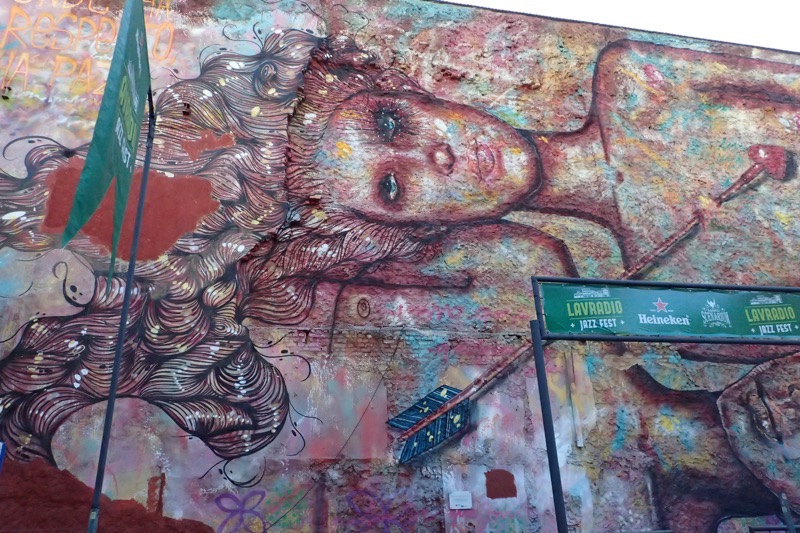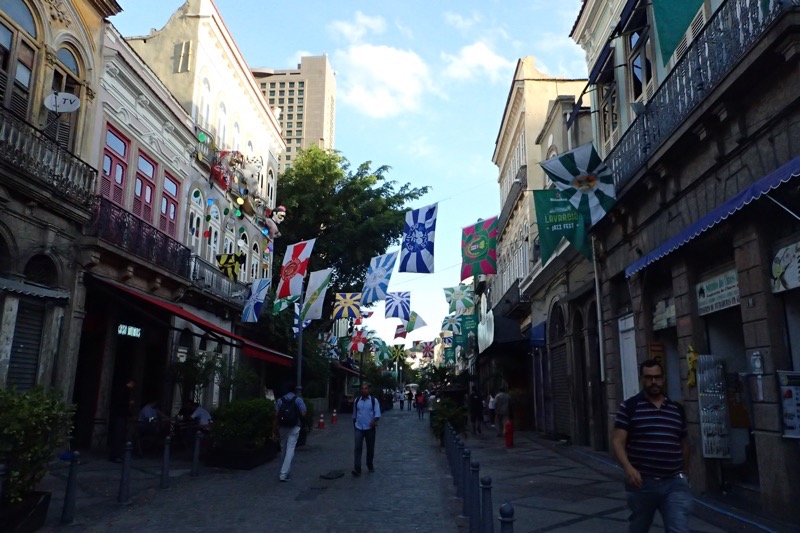Catamarans.
White Beaches.
Blue skies.
Sea Turtles.
Snorkelling.
Beautiful calm waters.
Shipwrecks.
Bob Marley.
OPEN BAR!
Yeah, I can’t back that up… I don’t think I have ever written anything in 25 words or less, so here’s the rest of it:
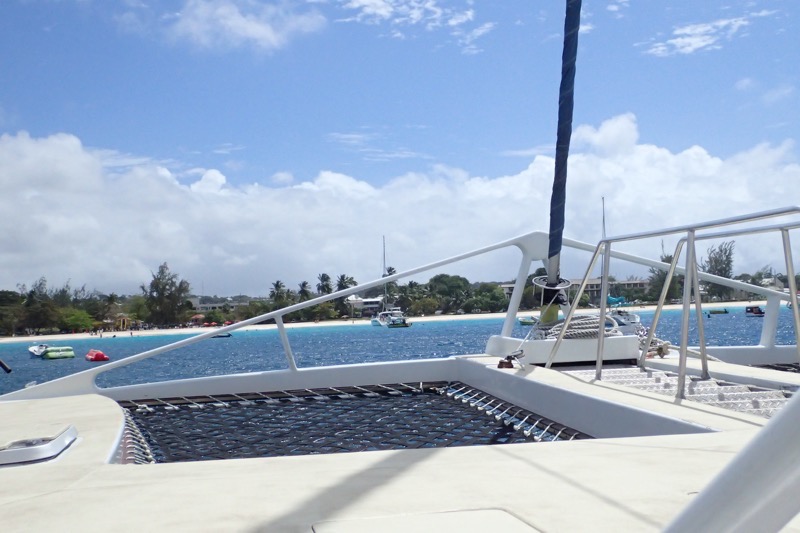
We found ourselves on a full day catamaran tour of Payne’s Bay in Barbados*, with three stops scheduled – one for snorkelling with sea turtles, another stop with an opportunity for snorkelling on a shipwreck, and a final stop at a lovely white sand beach for a swim or a bit of a wander. Lunch was included, and (in spite of people’s enquiries about the possibility of sharks in the area), the most dangerous thing I saw all day, was the open bar! Seriously – as much free grog as people could put away. After the snorkelling of course…
The catamaran was a lovely modern boat with plenty of space for up to 85 passengers – I think we were closer, in numbers, to about 60 (in age demographics too, come to think of it). It was BCDs all ’round unfortunately, and because Barbados is so closely aligned with the US and so accustomed to US tourists, the BCDs were mandatory. Not so impressed at that, I have enough trouble diving down, without a bloody bouncy device. But c’est la vie! Aunty Mary and I had our own snorkels and face masks, but we hadn’t packed our fins. As it turned out there were no fins allowed, and we could quickly see why. Most of these people were not frequent snorkellers and I must have been kicked by persons with various situational awareness challenges, about four times.
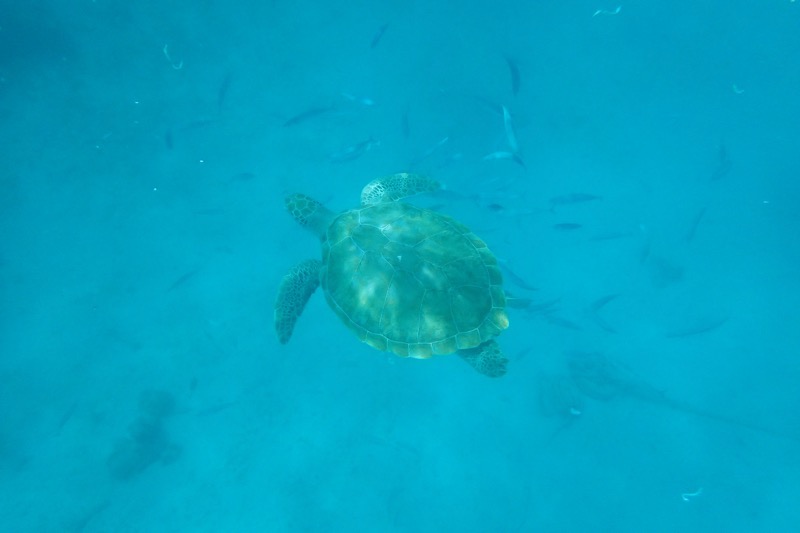
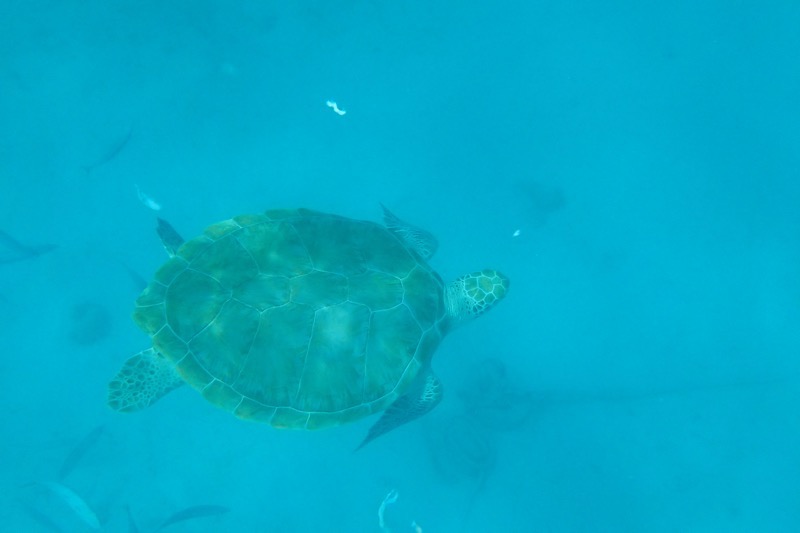
The turtles were completely oblivious of the sudden influx of well-fed cruise ship tourists and were swimming in among us just floating on the current and doing turtle type things. They were quite happy to swim up close to us. Hint for new players, if the turtle swims away from you – don’t chase it… They’ll come back, but not if they think they’re being chased. These guys were about 3’ long, so not as big as the turtles we swam with in the Whitsundays, but they were a lot more comfortable around people I think.
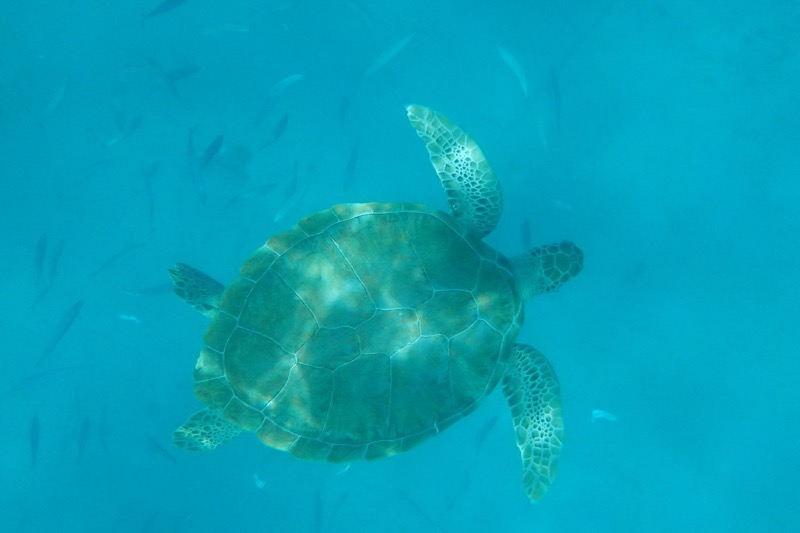
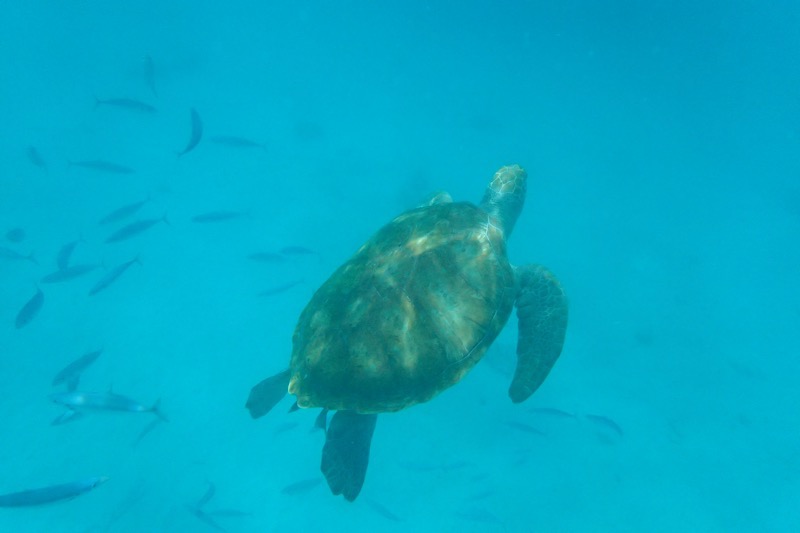
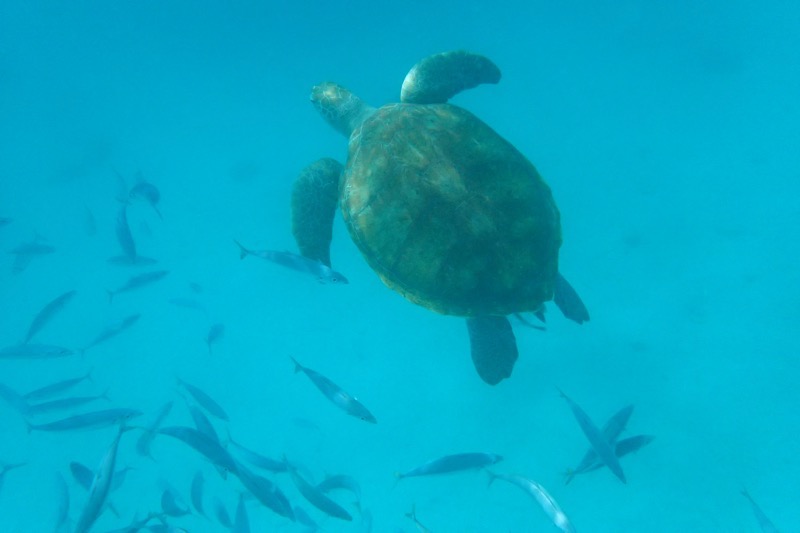
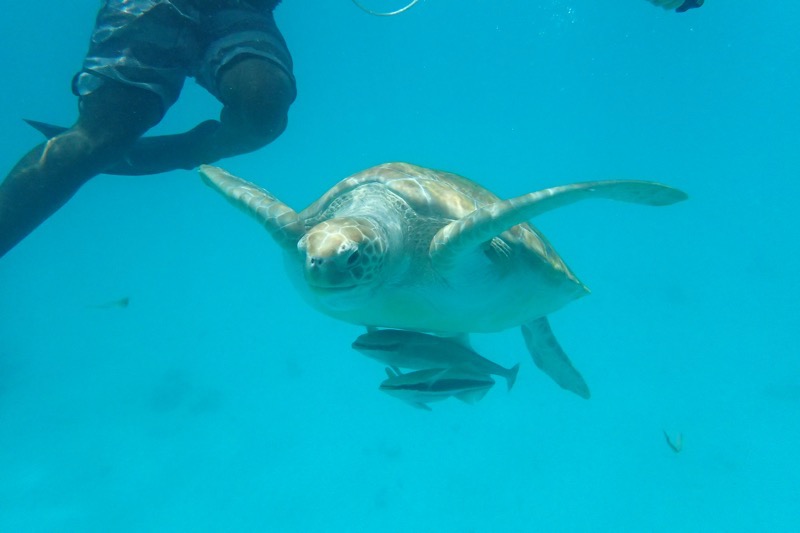
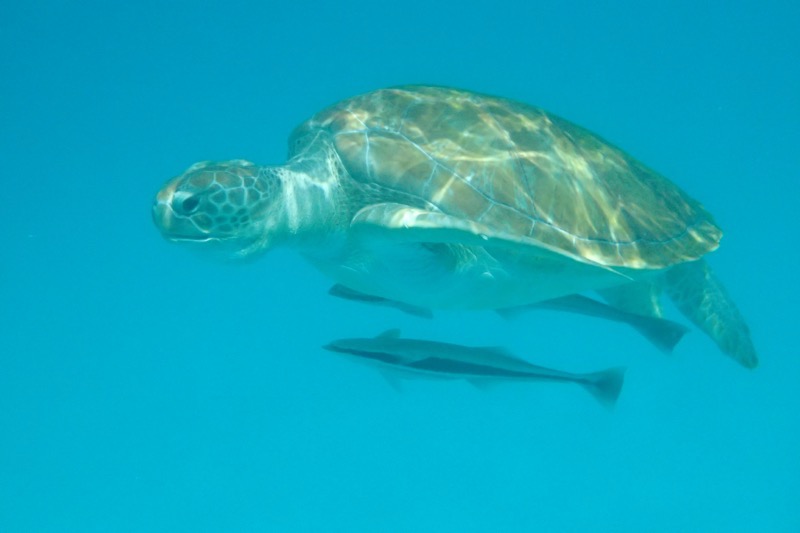 Turtle bum…
Turtle bum…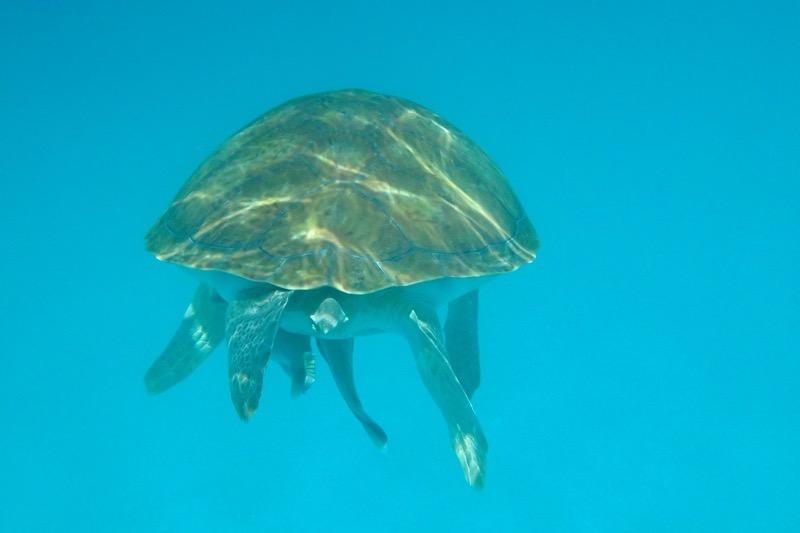
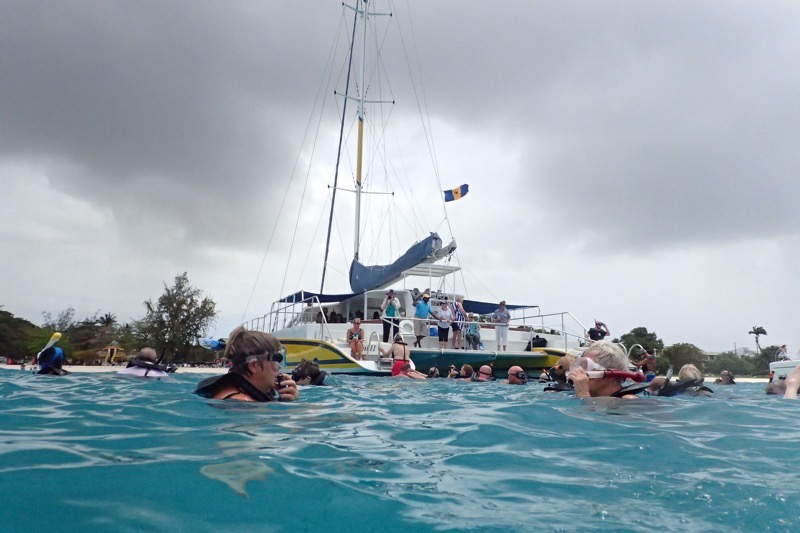
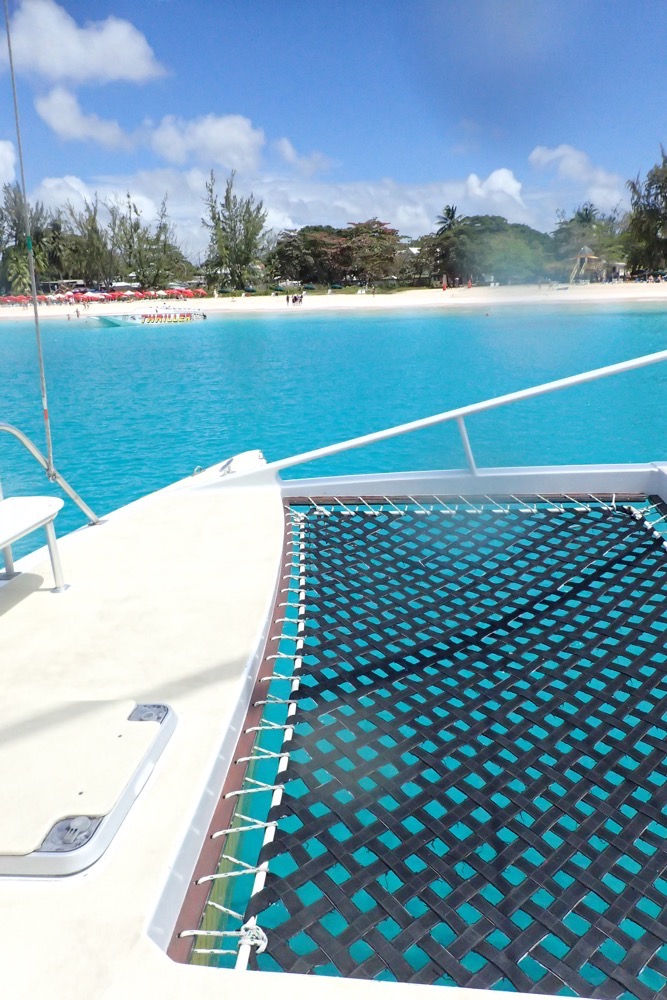
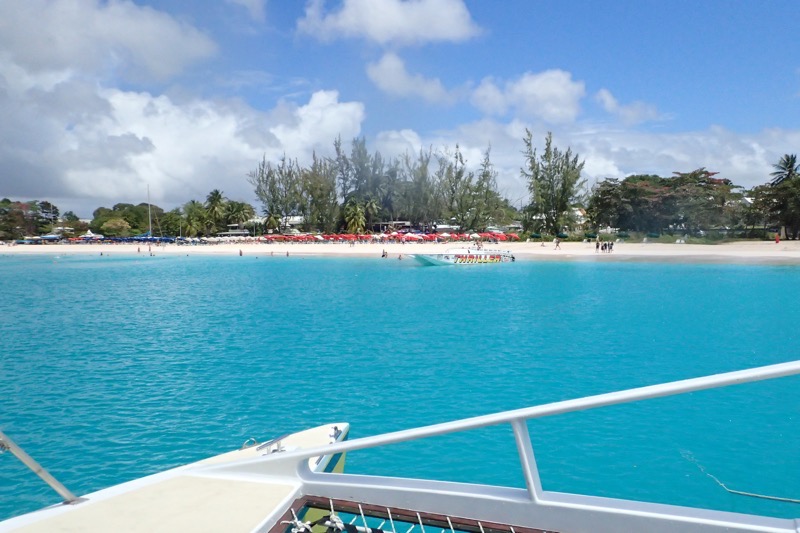
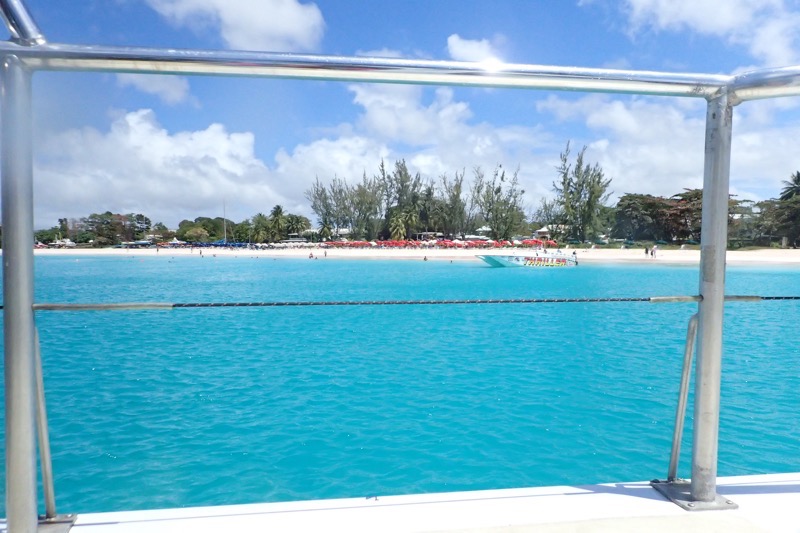
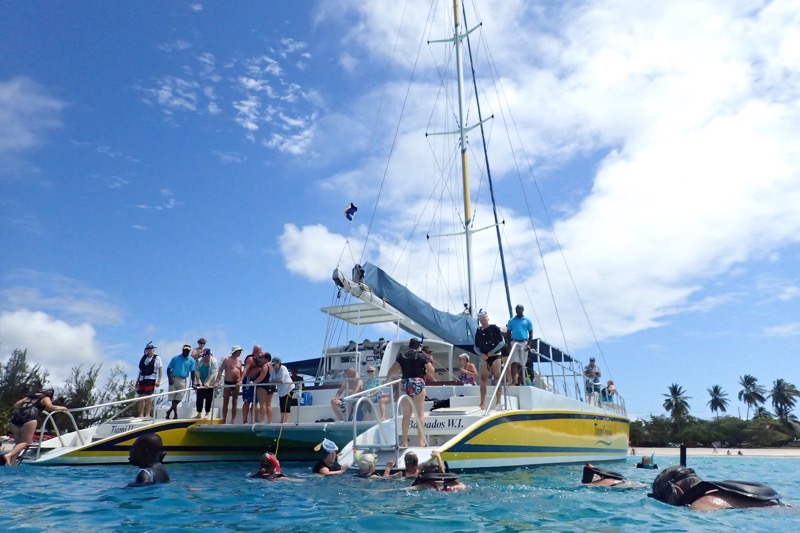
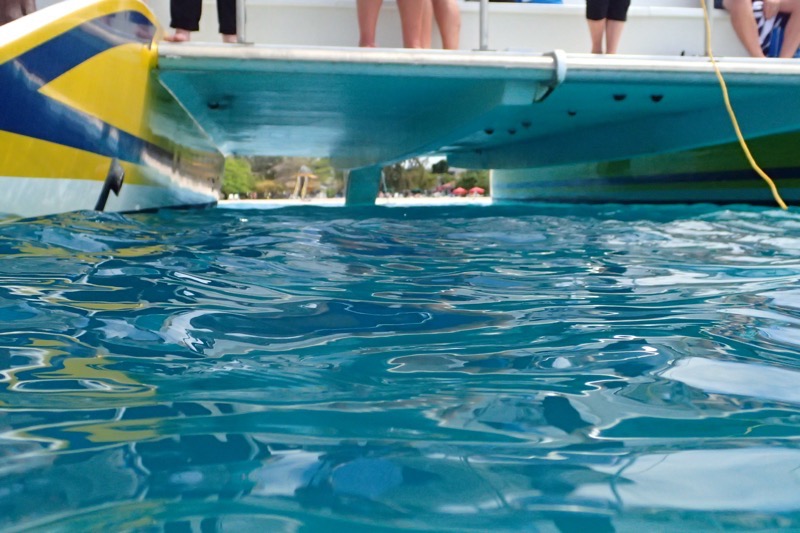 After our little turtle swim, we moved the boat about a kilometre or so and were directed towards a dark shadow underwater to explore a recent shipwreck. The boat itself had been a famous party boat (the name of which escapes me right now), and it had sunk in about 2002, so it didn’t have lots of established corals on it, but it was a nice haven for lots of fishes. It was a bit of a struggle to swim the 50m or so against the current to get to the shipwreck, but because I was the first to jump in off the catamaran deck rather than wait for the steps, I managed to have a paddle around and a look about before the rest of the group caught up. Once the rest of the group got out there, all my photos have dog paddling OAPs in them! lol. One of the boat crew who was supervising in case anyone got into trouble in the water had bought out some food to feed the fishes and when he suddenly threw it all in the water, the fishes came up out of the wreck and I found myself surrounded by these little stripey little guys. It was very cool.
After our little turtle swim, we moved the boat about a kilometre or so and were directed towards a dark shadow underwater to explore a recent shipwreck. The boat itself had been a famous party boat (the name of which escapes me right now), and it had sunk in about 2002, so it didn’t have lots of established corals on it, but it was a nice haven for lots of fishes. It was a bit of a struggle to swim the 50m or so against the current to get to the shipwreck, but because I was the first to jump in off the catamaran deck rather than wait for the steps, I managed to have a paddle around and a look about before the rest of the group caught up. Once the rest of the group got out there, all my photos have dog paddling OAPs in them! lol. One of the boat crew who was supervising in case anyone got into trouble in the water had bought out some food to feed the fishes and when he suddenly threw it all in the water, the fishes came up out of the wreck and I found myself surrounded by these little stripey little guys. It was very cool.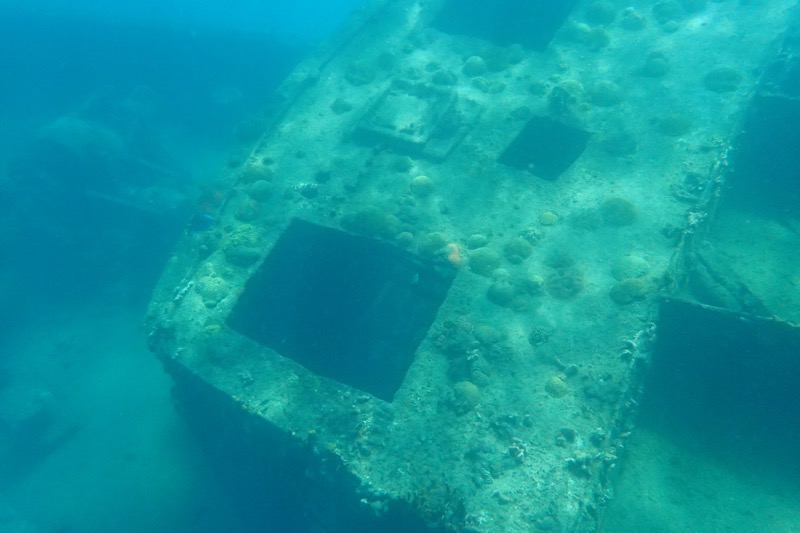
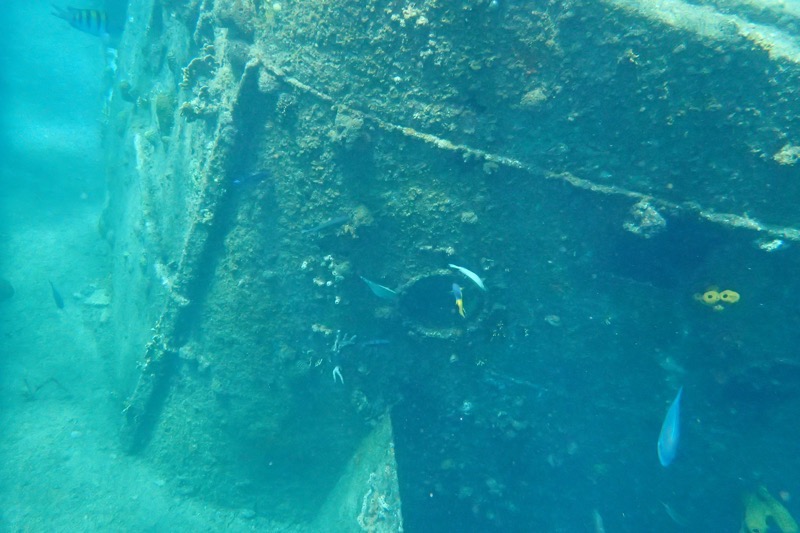
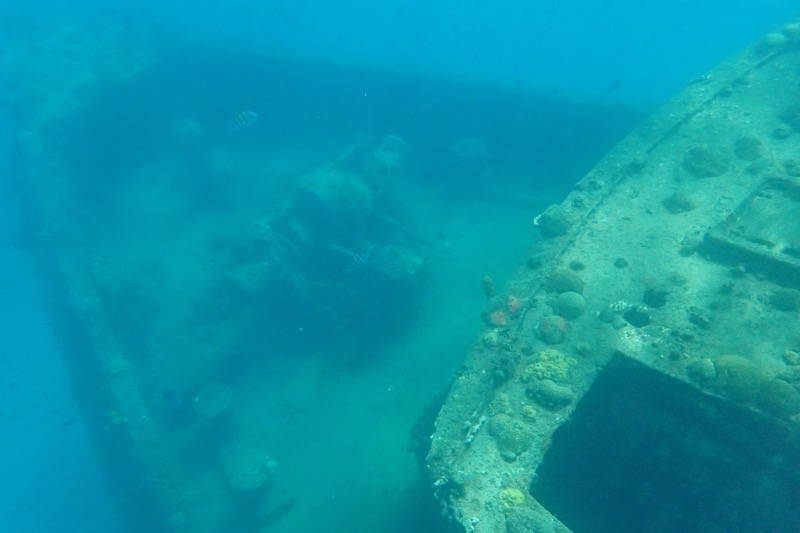
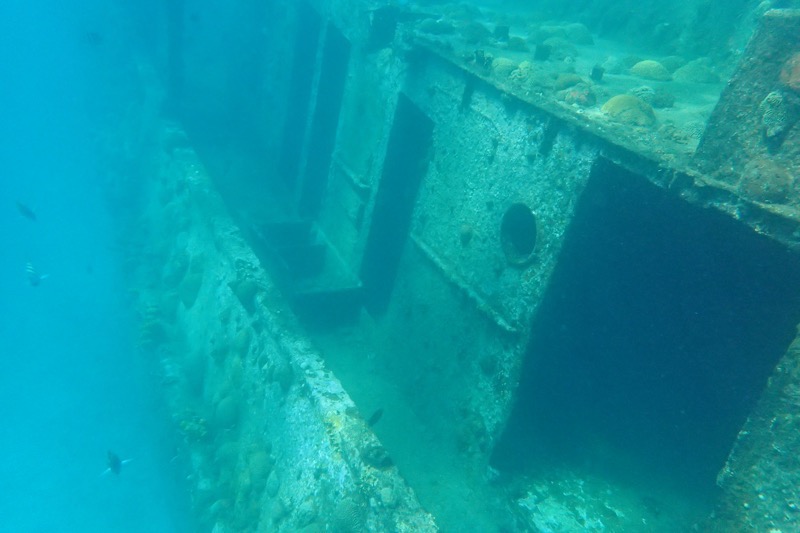
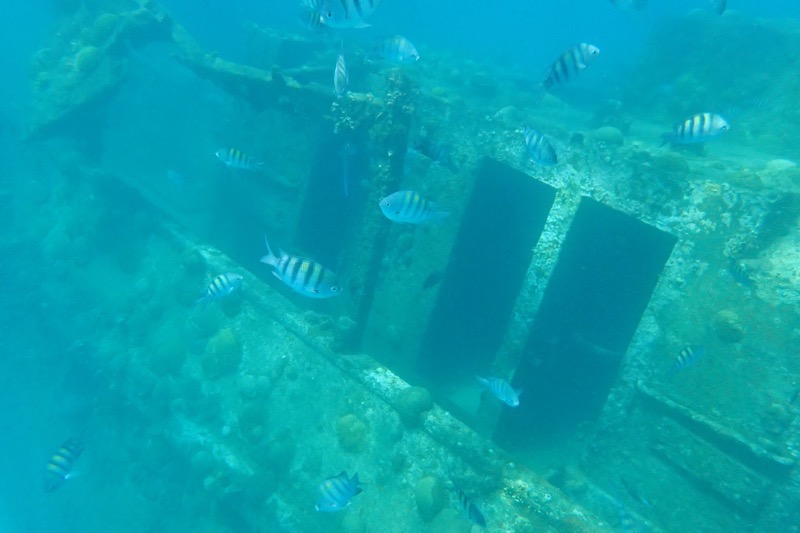
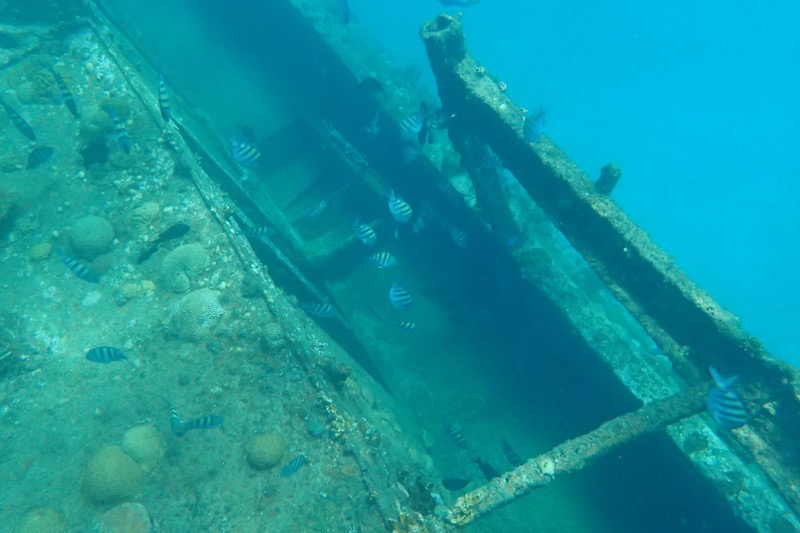
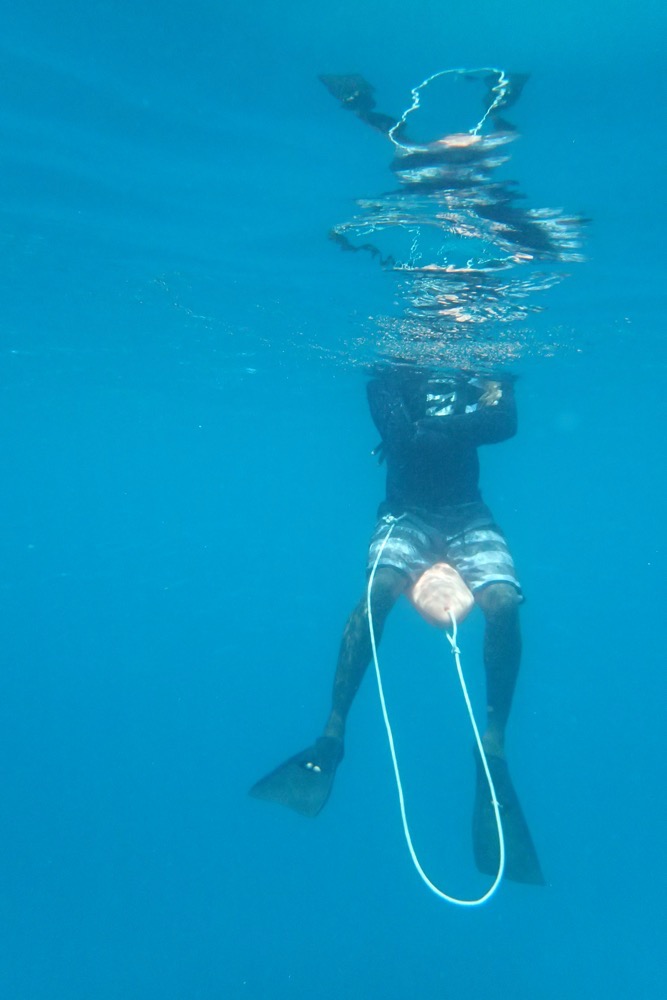
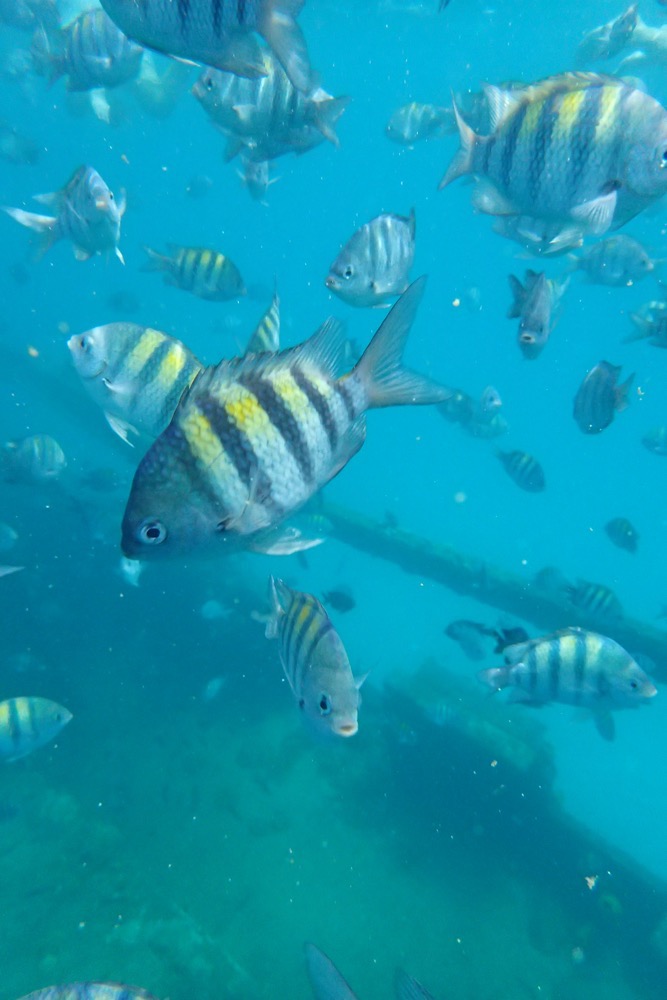
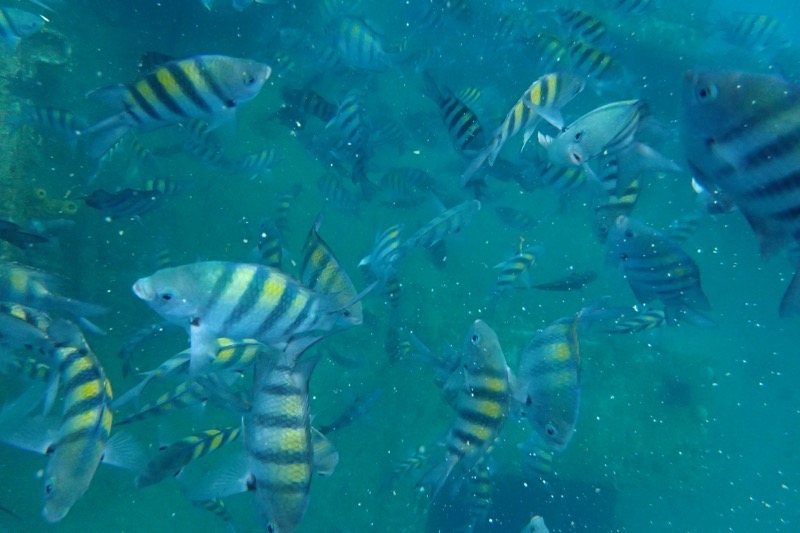
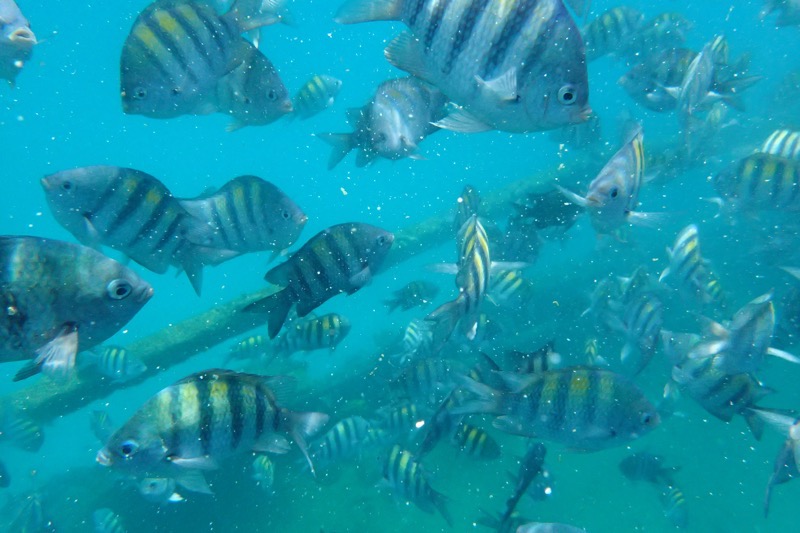
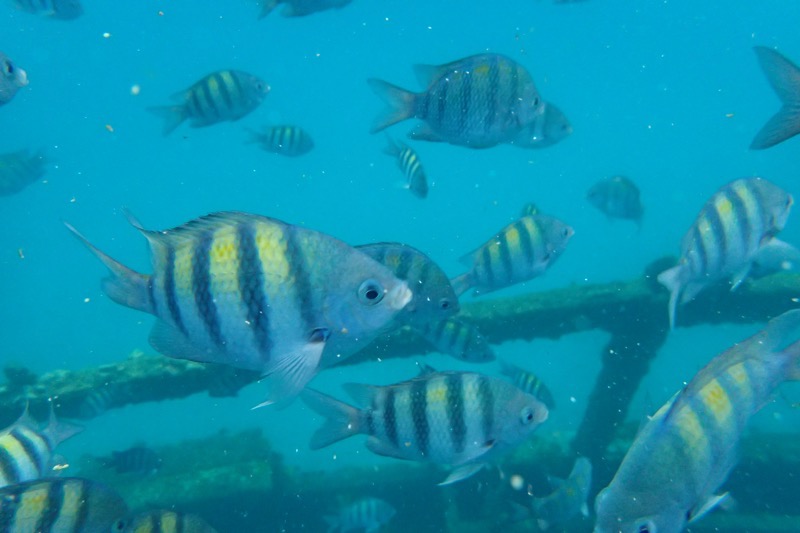
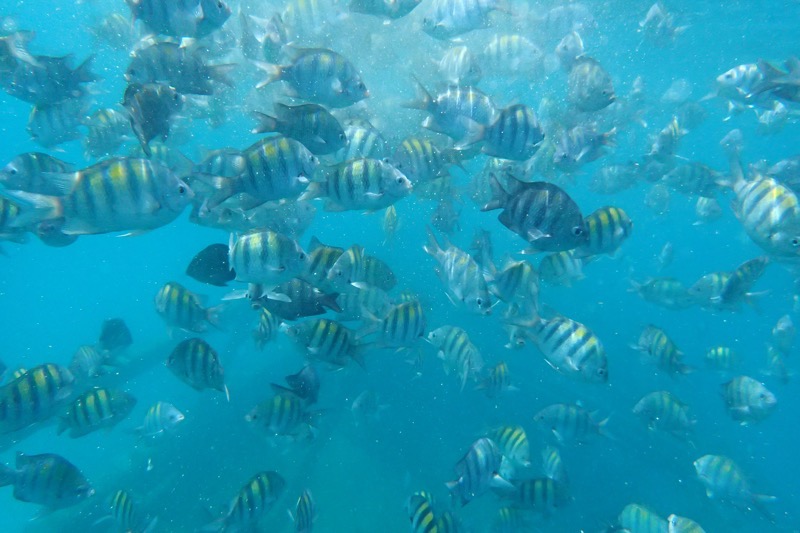
After this, we had lunch of BBQ chicken, fried fish, cheesy macaroni, salads and ALL the rum punch. The bar was fully stocked with just about every spirit and mixer you could think of, as well as wines and a local keg of beer. Ever seen an Australian knock back free grog? No, me neither, and it was flowing strong and plentiful, so much so that no one even complained when Bob Marley’s, ‘Buffalo Soldier’ came on for the fourth time!
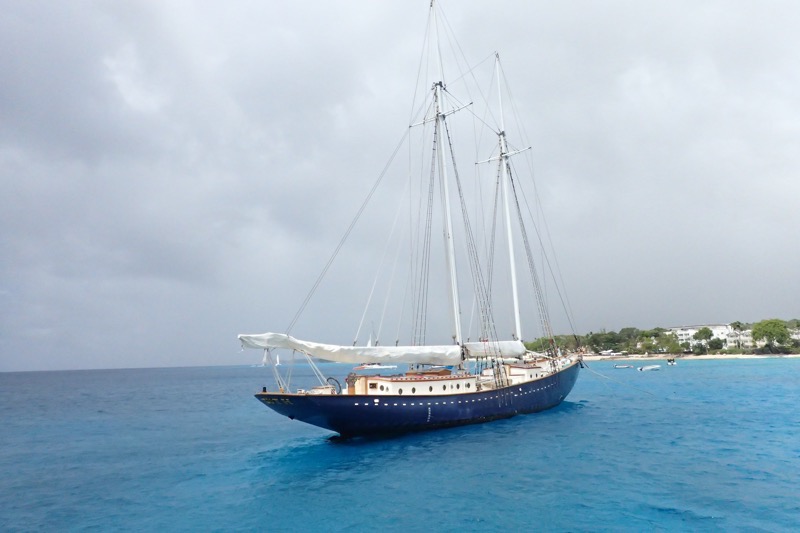
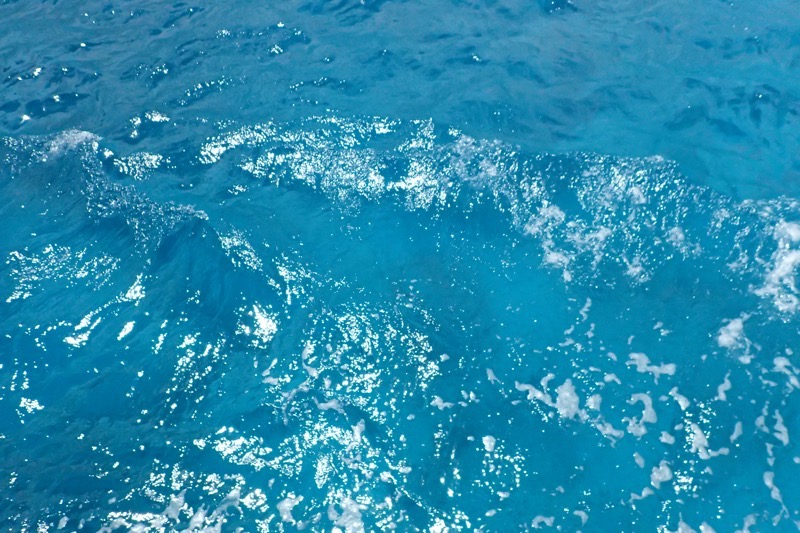
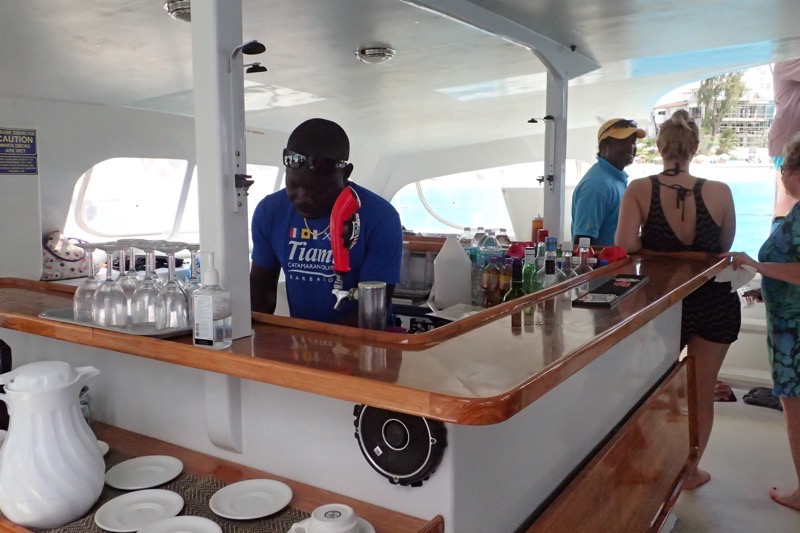
What a beautiful day… after lunch, we hoisted sail and went down to some beautiful sandy beaches for another dip – those that weren’t too busy enjoying the boat and the booze that is. The crew were busy telling us of famous local residents – Rhiannon owns this large white house up on the beach, Paul Simon often zooms past on his jet ski to say ‘hello’ (actually, they told us that Paul Simon came past once to say g’day to James the captain of our little boat, and they had an English high school cricket team on the boat… the crew told the cricketers that Paul Simon was coming to say ‘hi’, the teens, having very little idea of who that was said hello to the famous singer, and then promptly all down trowed and mooned him!). I guess if you had a choice and could live in Barbados or LA, I know which one I’d be choosing.
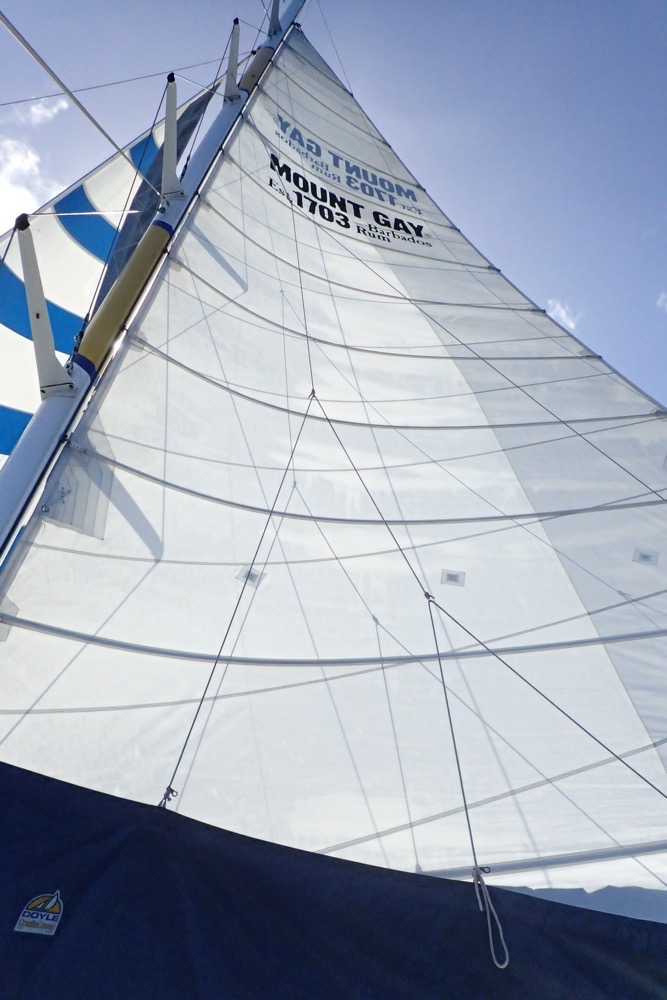
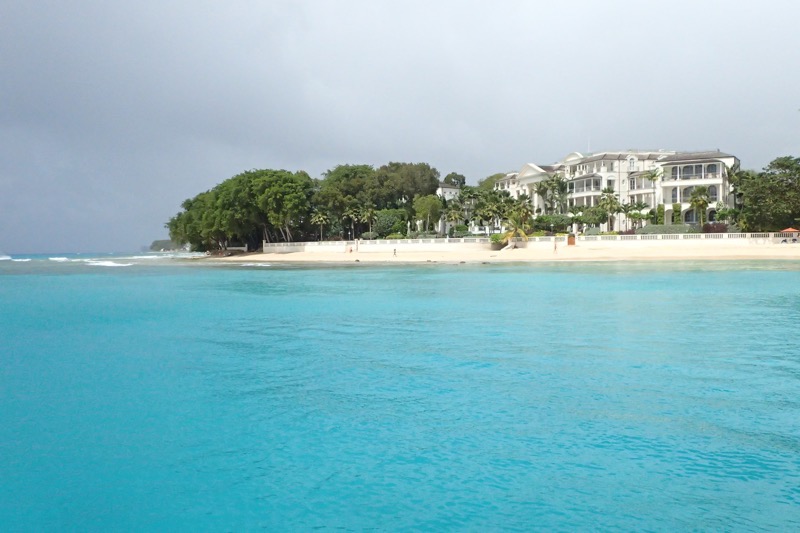
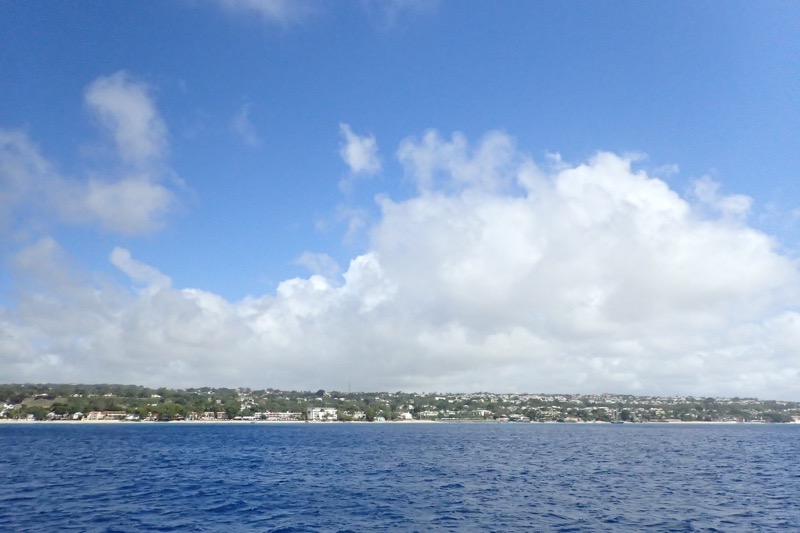
After our beach stop, it was back to the docks. I had a thoroughly enjoyable day and would highly recommend Tiami Catamaran Cruises if you’re ever in Barbados and want a lovely day out on the water. The only downside of doing a tour like when you are only in town for one day is that we didn’t get to see anything of the island – its villages, the town or anything else. We had originally planned a half day snorkel tour, and then a few hours to check out the town, but things didn’t go to plan… instead we still had a marvellous day, but to be honest, the things we saw and did – we could have been off Airlie Beach or Townsville or Cairns. Yep, we are just that spoiled living in Australia, that I thought sailing around Barbados for the day was just like home!
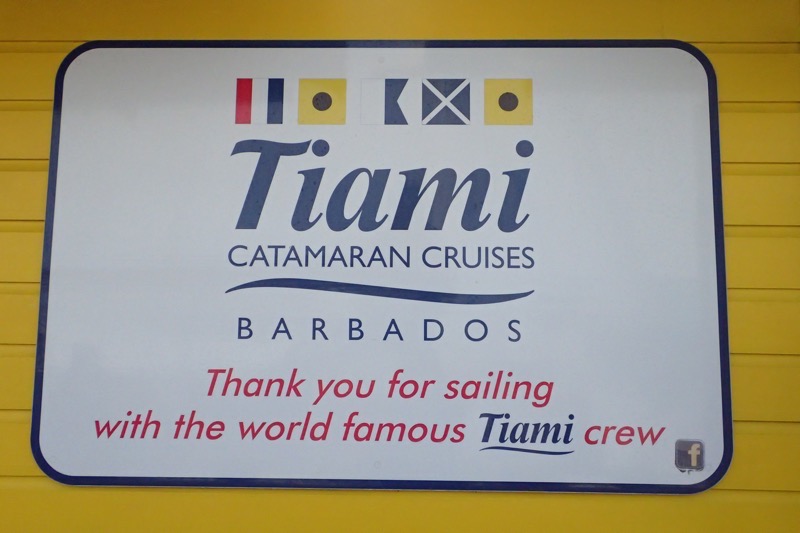
EPILOGUE (or maybe it should have been the prologue…?!):
*We had a tour booked through the ship today to go snorkelling with some turtles or something (more evidence of my getting fed up searching shore activities), only we ran into some unexpected hiccoughs with the logistics of getting ashore. And by ‘we’, I mean, the entire fucking ship. I woke up at 0530 and we were not moving. This is not normally a bad sign, sometimes it means we are ahead of schedule or the local pilot is embarking… but when we were still not moving at 0630, I was mentally doing a little ‘uh-oh’.
Turns out there was a dirty big P&O ship – the Azura – in dock already in Barbados, and they were doing an overnight stop, so naturally they had snivelled the best spot at the dock. No problem ordinarily, but they had roped off a secure area around their ship (this is SOP for all ships), and we were not able to traverse through that secure area. This is a problem, as they were between us and the port terminal. So at the last moment, our ship of nearly 2000 passengers was advised that we were going to have to use the port’s shuttle system to drive us the, what? 300m from our ship to the port terminal. And the problem with this is… their shuttles only seated approximately 25 people.
No shit. OMG, I felt so sorry for all the customer service facing staff involved in this mess, but they had to hand out tender tickets to call numbers to get people off the ship for a 300m drive. All the people with ship tours were meeting at the cruise terminal – normally not a problem when you can just walk straight off, but this? We got to the dining room to collect a ticket at 0750 and were given tickets numbered 744 and 745… which was not great when we were supposed to meet our tour group at 0820 at the terminal. We took up a seat in the dining room and patiently waited for some numbers to be called. The first batch I heard were number 32 to 57 or something, and it was, ‘Oh dear’. People got really cranky really quickly, but there was nothing the staff could do about it. It’s just one of those things. I was determined that nothing was going to wind me up today – after Iguazu, I am just accepting that some things are beyond our control and there is no point in getting all wound up about something. So we waited. And unfortunately were forced to listen to the griping of the people around us who were very vocal in their displeasure.
Eventually, we got called and processed off the ship. Got into our shuttle, drove the 300m and ta-da! We were at the cruise terminal. It was now about 0930. We ran into a very harried looking Ilena, the ship’s Shore Tours Director, who informed us that our tour had left, that they couldn’t hold it any longer for us. There was about six of us there who had missed it. I shrugged, and thought, ‘Oh well, we will cab into town and find something else to do, and they will refund us for the tour cost. No biggie, there are turtles to snorkel with back home.’ Instead, Ilena said she had two different tour options she could put us on – they both went to the turtles and one was leaving at 10 am, and the other leaving at noon. We went, ‘Sure. We will join the group leaving now.’ She scribbled a different code on our tickets and off we went to join a different bus.
We climbed on the bus with some others who had missed our 0820 group, and we were asking each other if anyone knew what this tour was actually doing… at which point the uptight old biddy behind me said (quite loudly), that, “*Those* people were on a cheaper tour, they shouldn’t be coming with us on our expensive tour!” Oh FFS. The ship is doing what they can to ameliorate the losses of people who, through no fault of their own, were unable to make their scheduled tours. We didn’t care which tour we were thrown on… well, I didn’t – especially if it meant I didn’t have to replan our day on the fly! If we had been a bit later we might have found ourselves shanghaied onto a rum distillery tour or something. But seriously? Some people will find complaint with anything. I am getting a bit tired of these world-weary constant cruisers who know everything, have no patience, and who are all too happy to bitch and moan about ANYTHING.

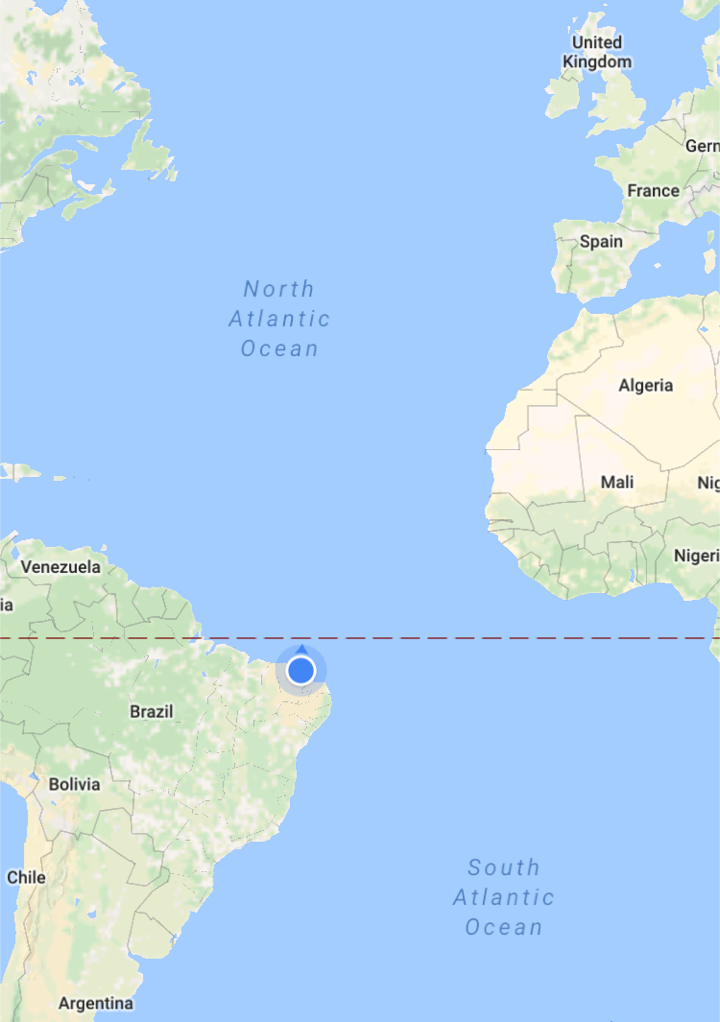
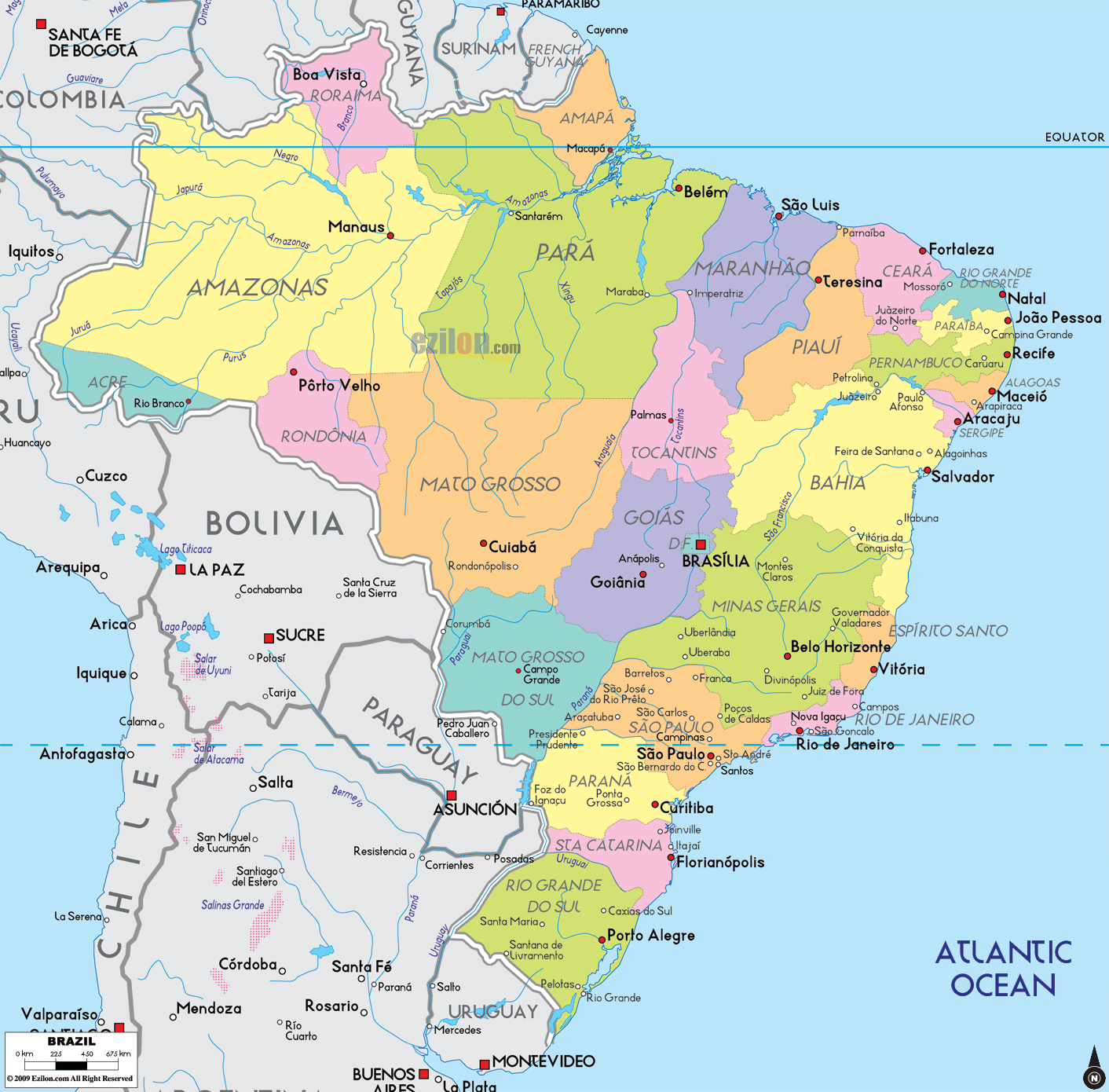
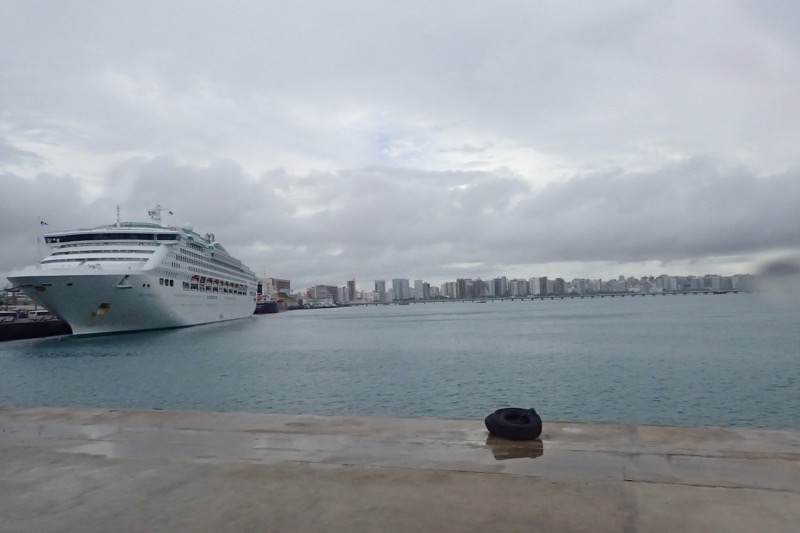
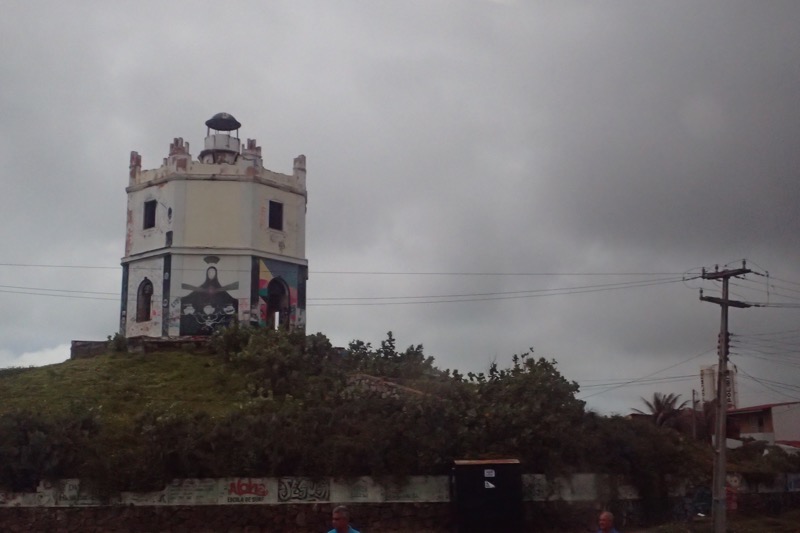
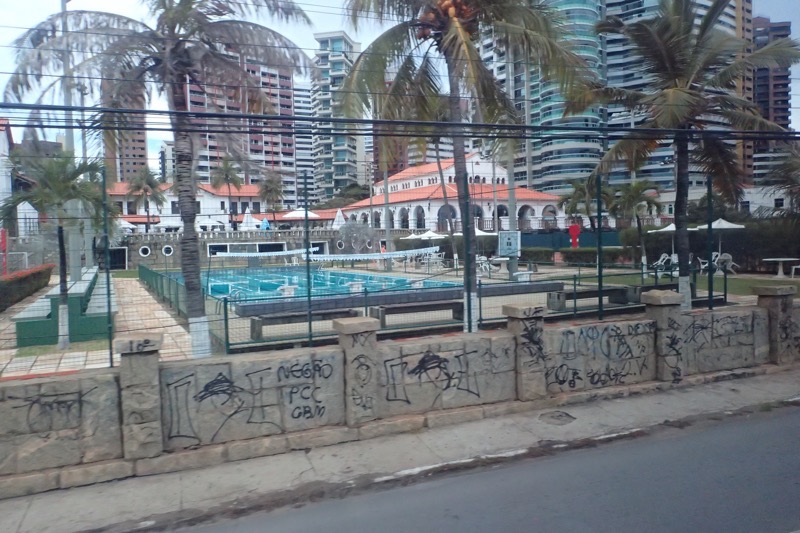
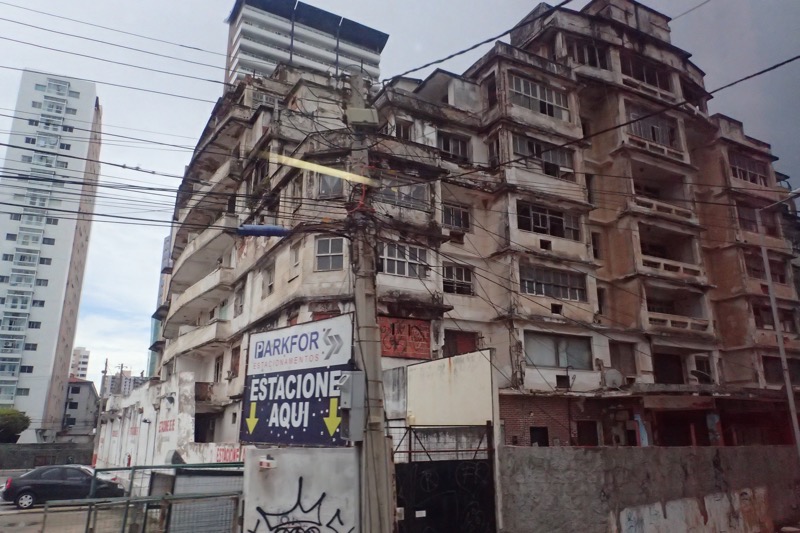
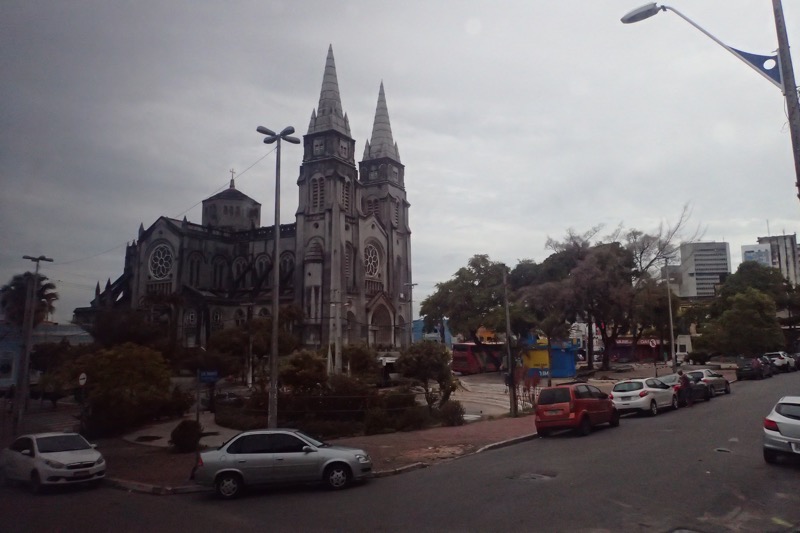
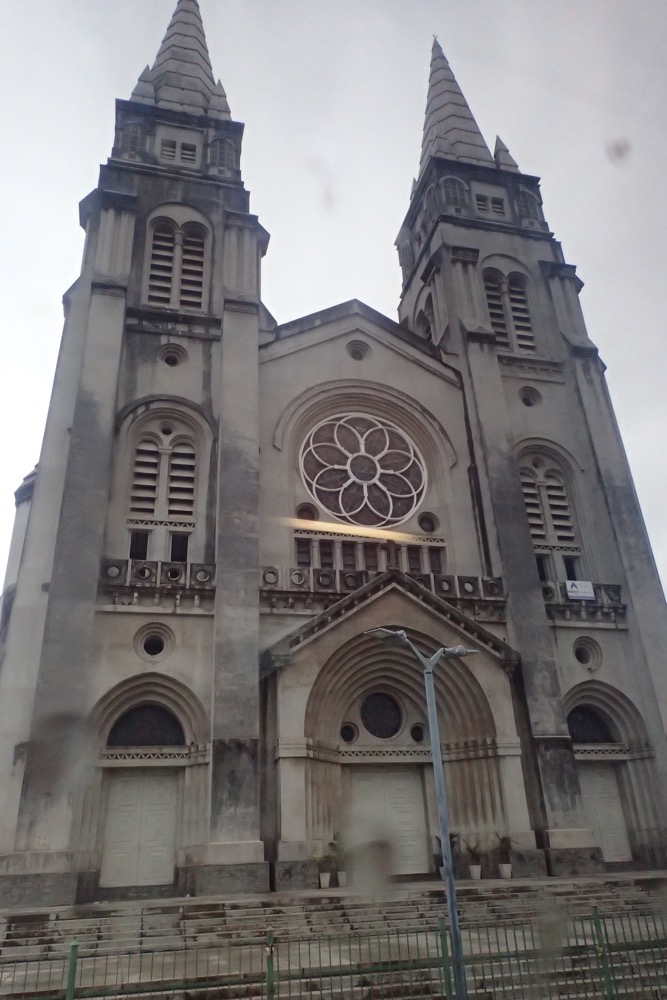
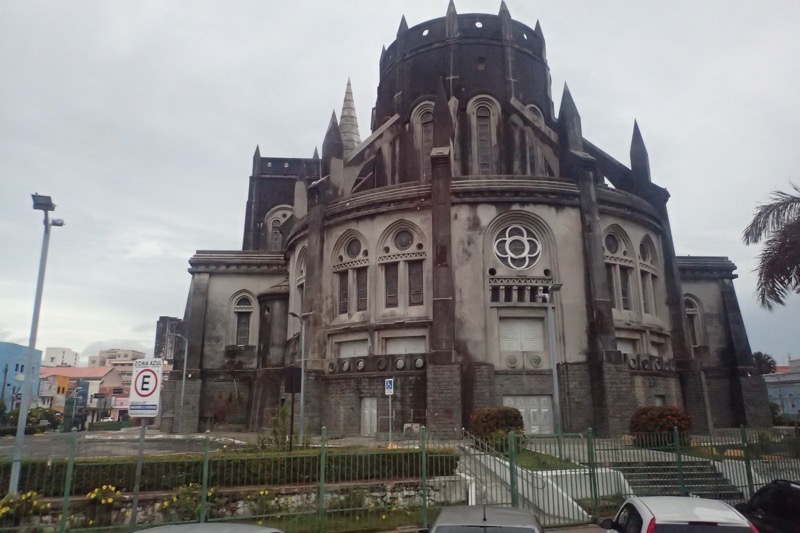
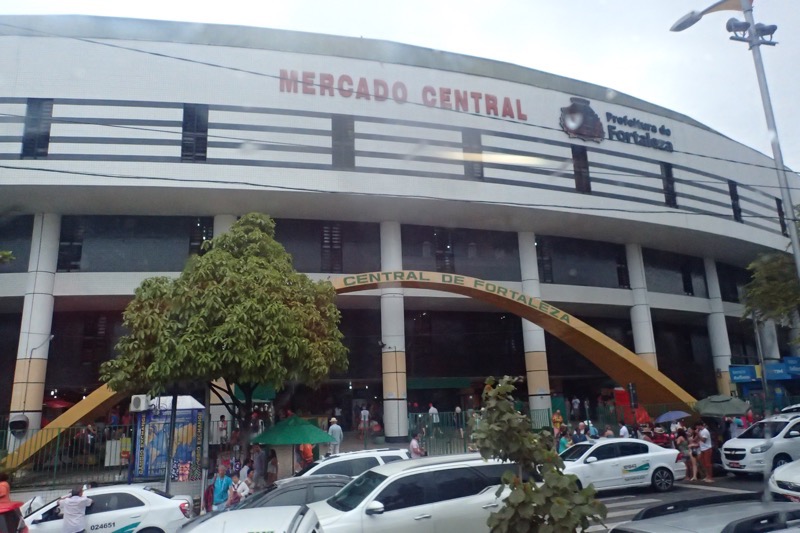
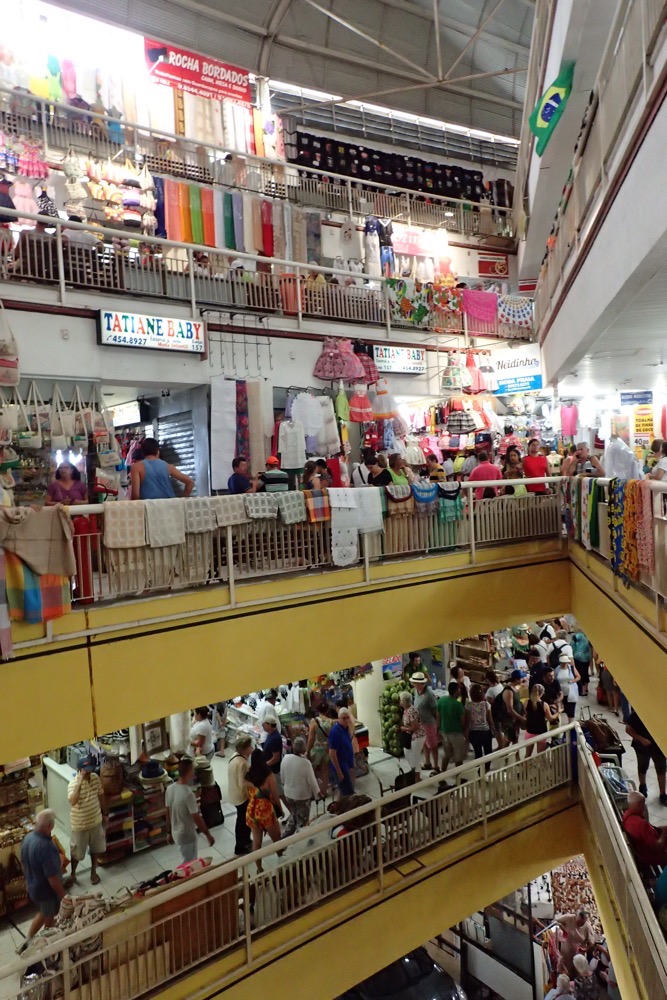
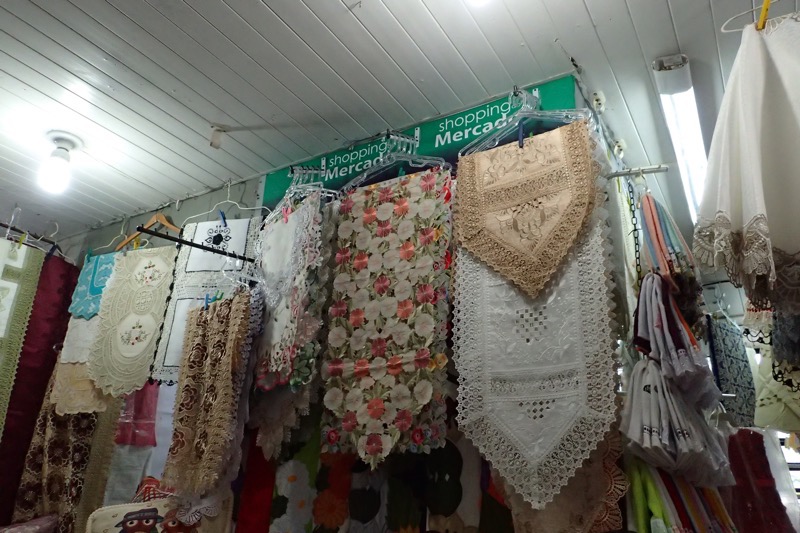 No lace, Mrs Bennet!
No lace, Mrs Bennet!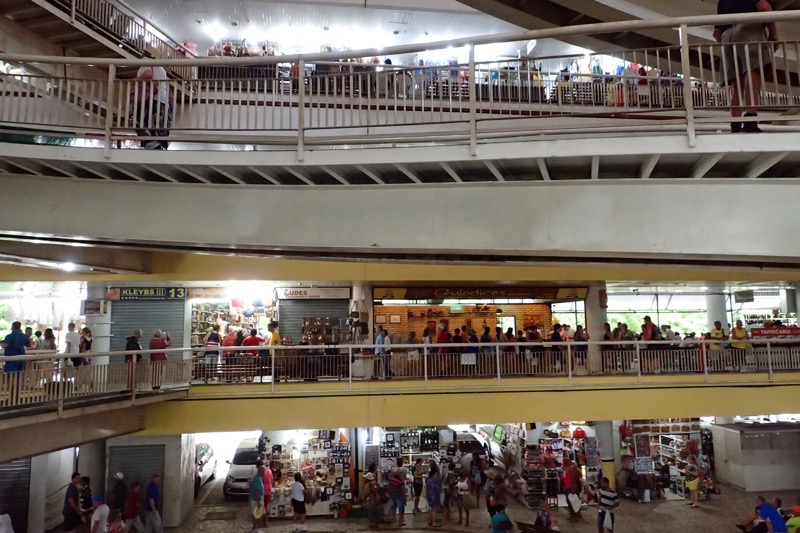
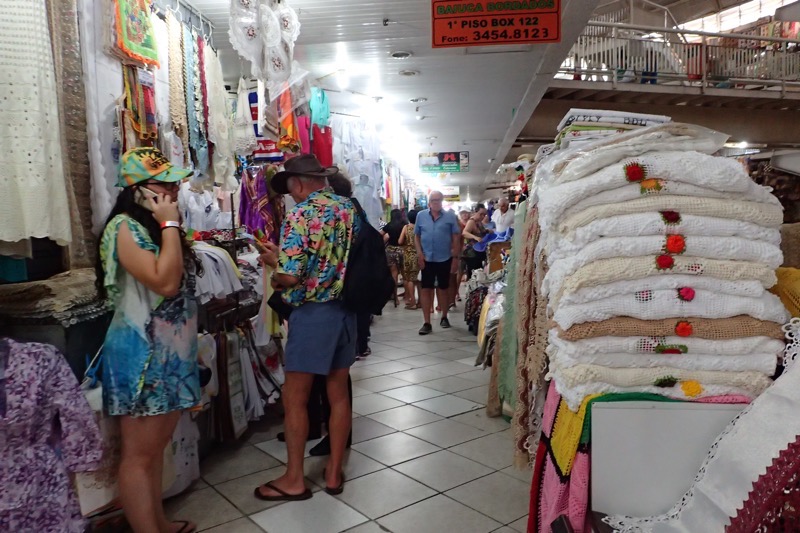








 Drove past the old prison – right in the centre of the city.
Drove past the old prison – right in the centre of the city.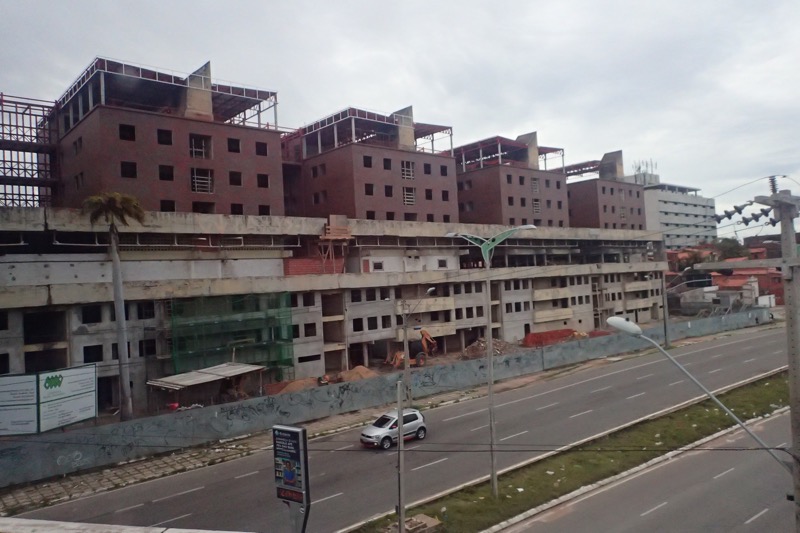
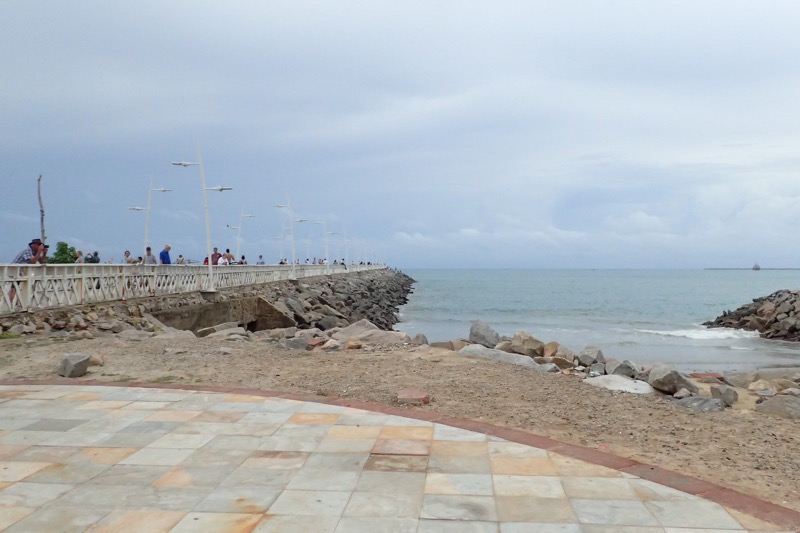
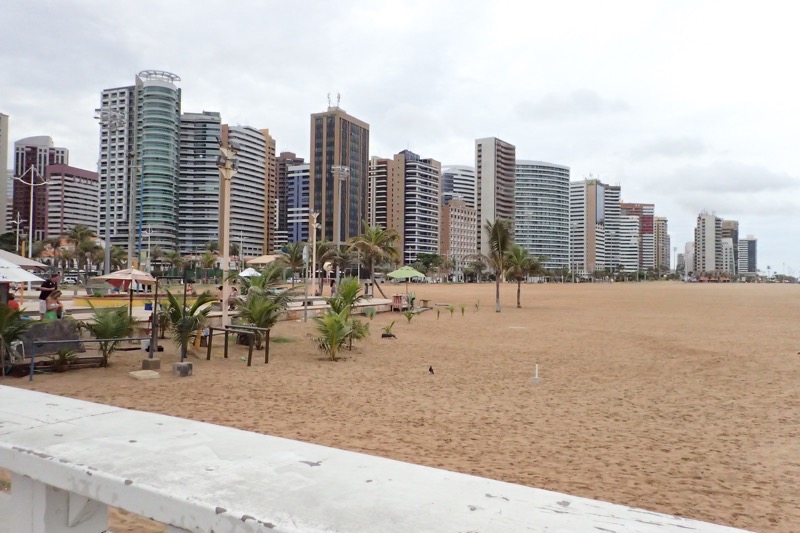
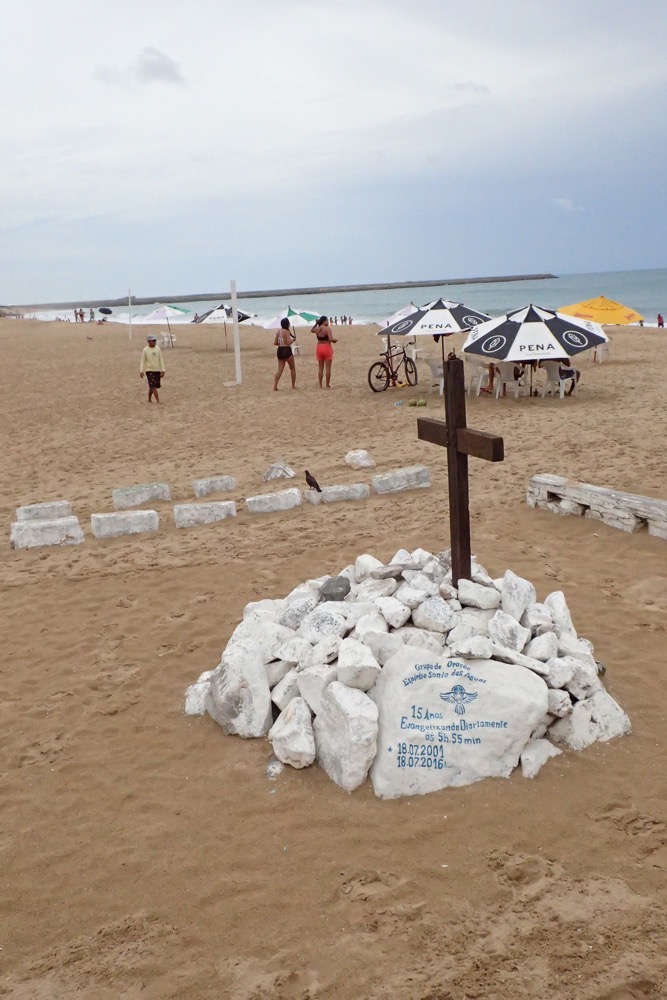 This could be quite a nice play to holiday… and it is apparently very popular with domestic tourists, as well as foreign ones.
This could be quite a nice play to holiday… and it is apparently very popular with domestic tourists, as well as foreign ones.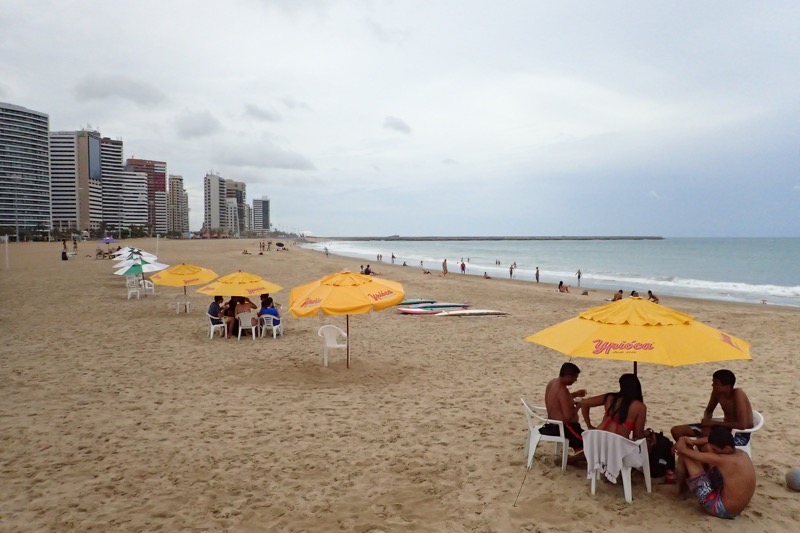
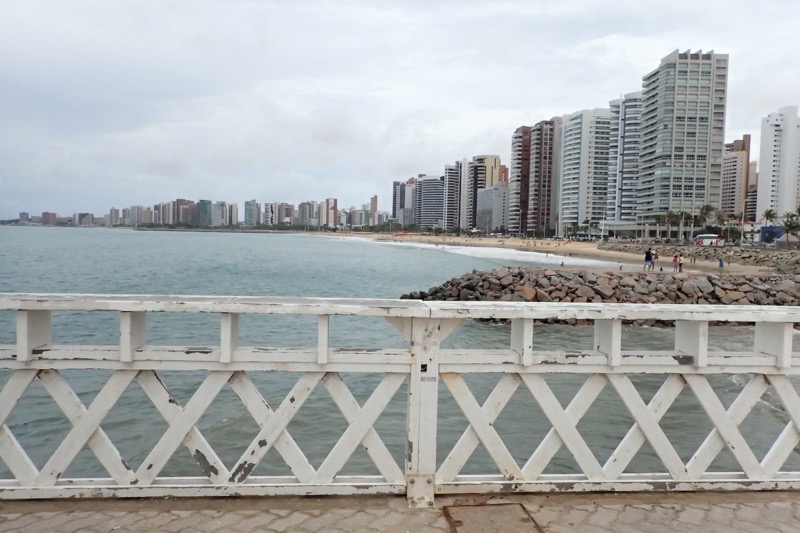
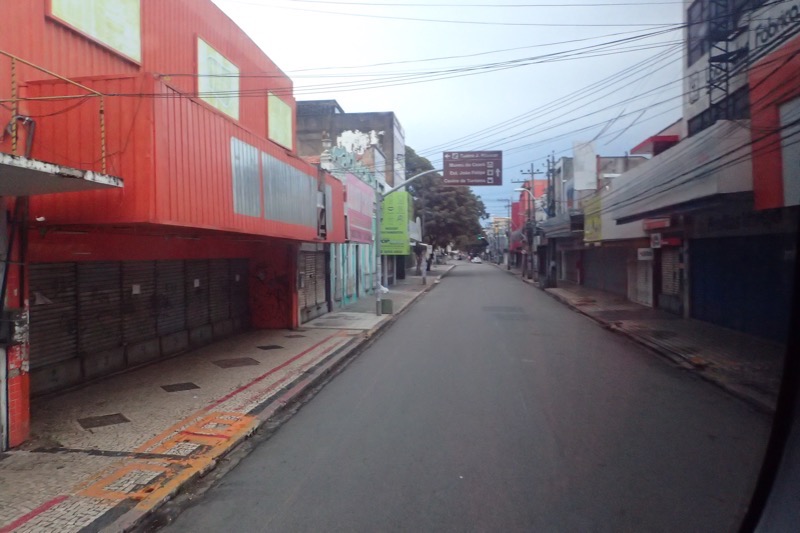
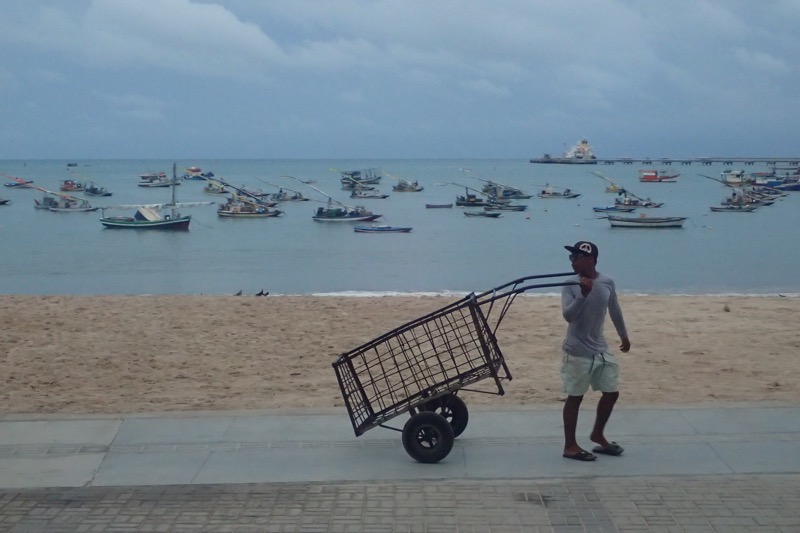
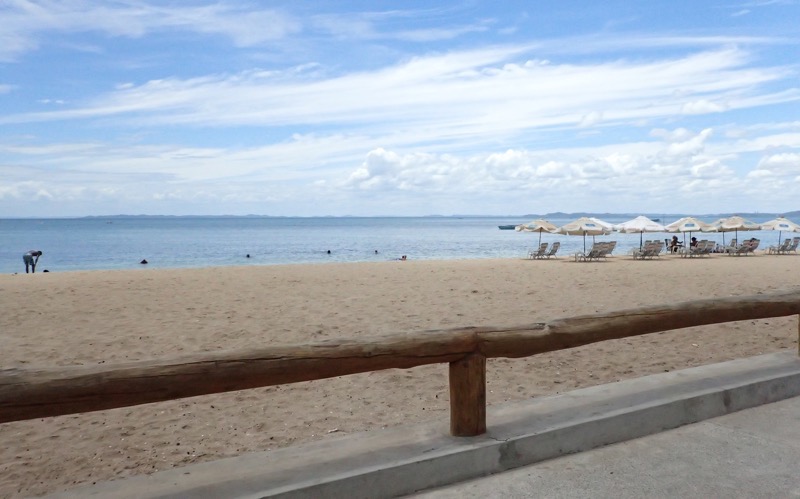
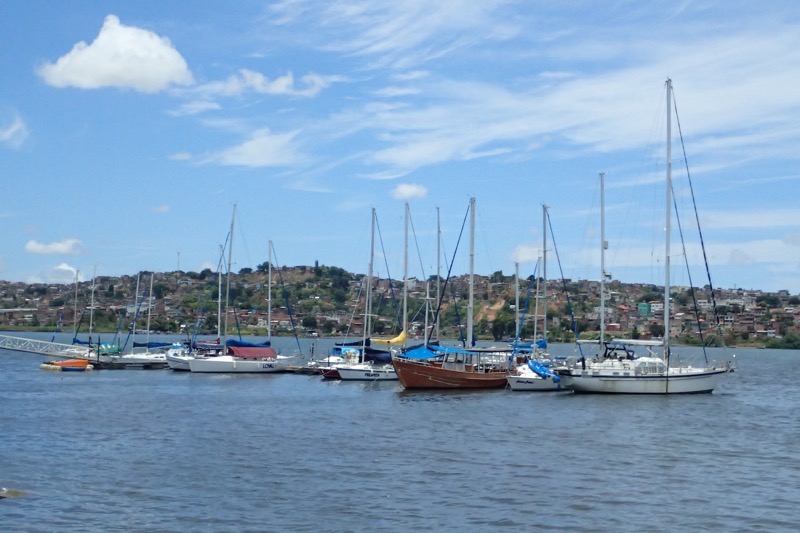
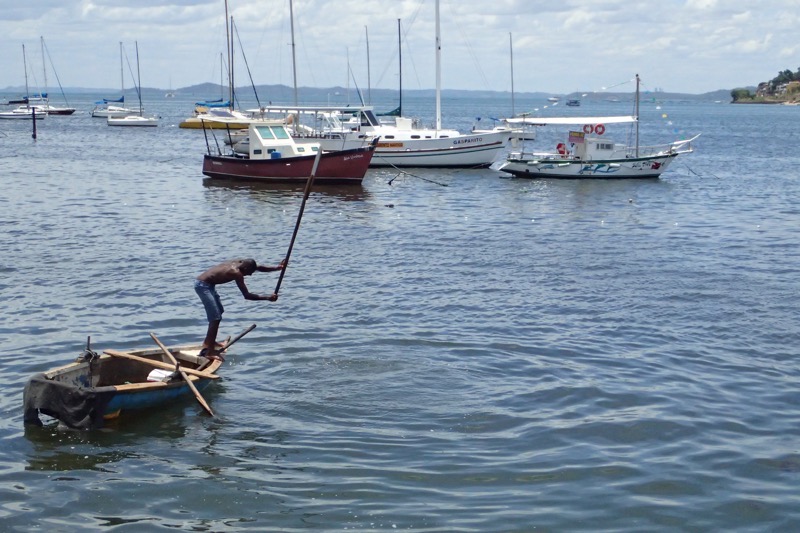
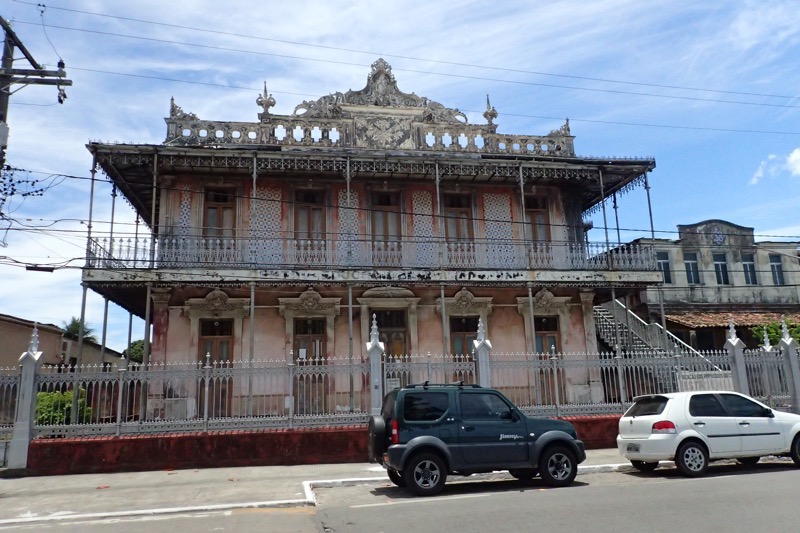
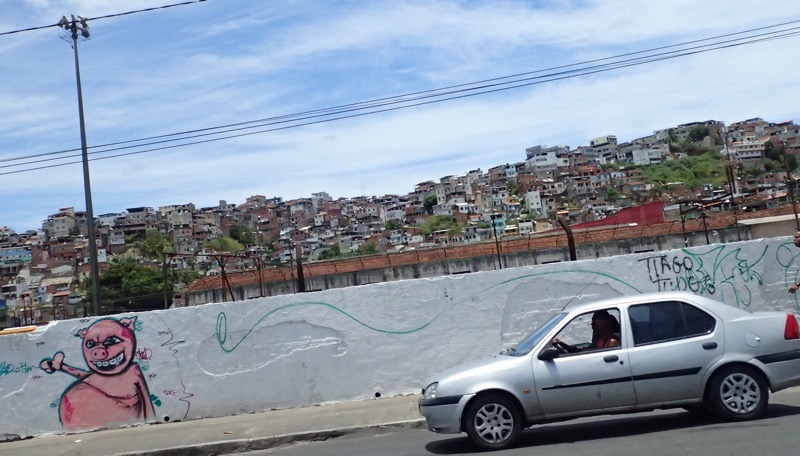
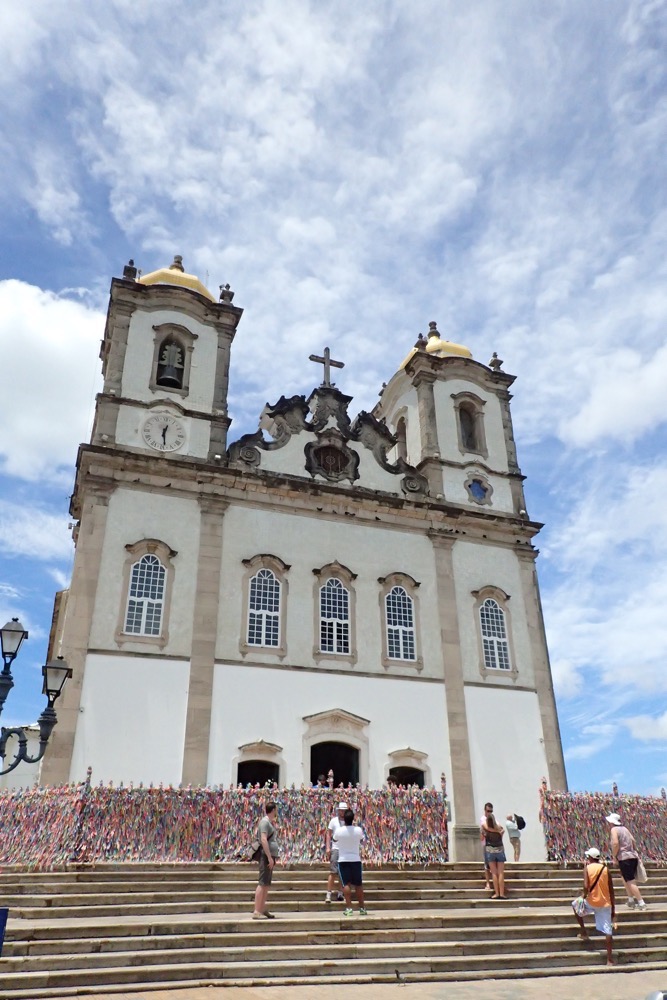
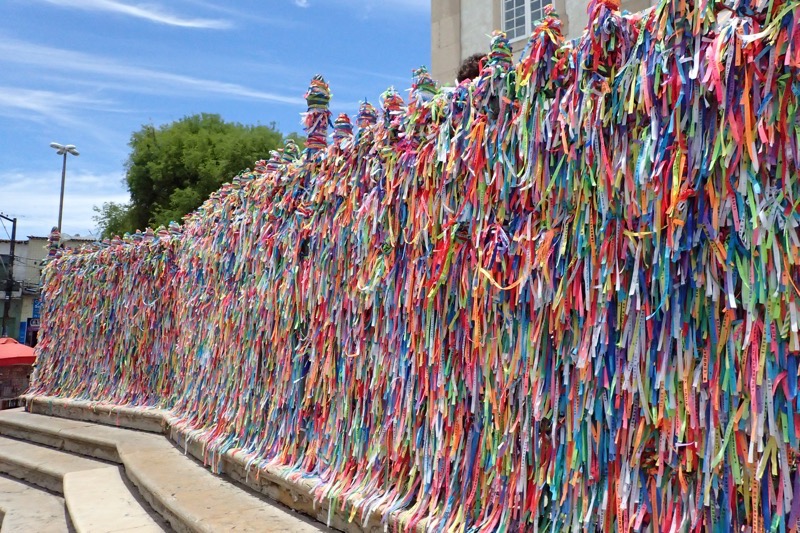 People flock to the Church of Bonfim to tie printed coloured ribbons the fences and gates of the Church and you tie the ribbon, you make three wishes… traditionally for health and/or prosperity etc,. They believe when the ribbon falls off the fence, your wishes will come true. It is also not unusual to see people wearing Bonfim ribbons, carrying their wishes around with them, waiting for them to fall off.
People flock to the Church of Bonfim to tie printed coloured ribbons the fences and gates of the Church and you tie the ribbon, you make three wishes… traditionally for health and/or prosperity etc,. They believe when the ribbon falls off the fence, your wishes will come true. It is also not unusual to see people wearing Bonfim ribbons, carrying their wishes around with them, waiting for them to fall off.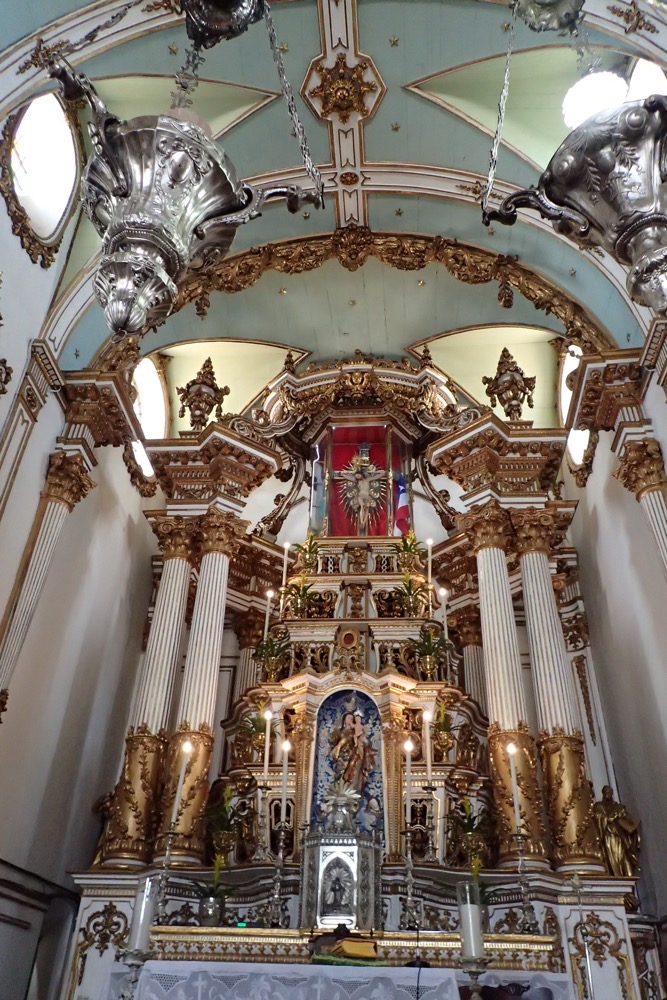
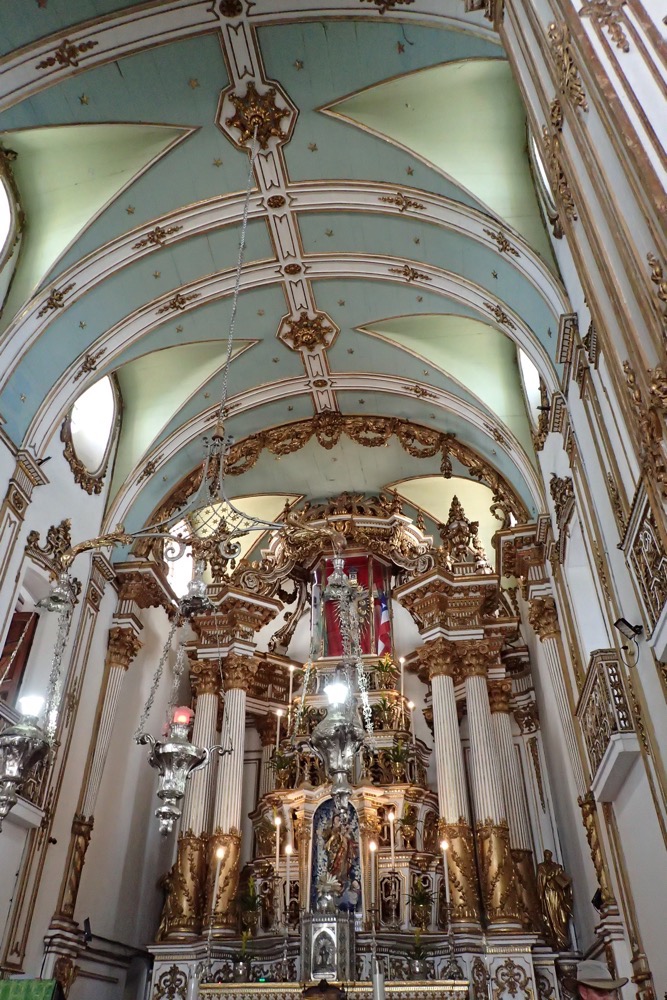 17thC Portuguese ceramic tiles…
17thC Portuguese ceramic tiles…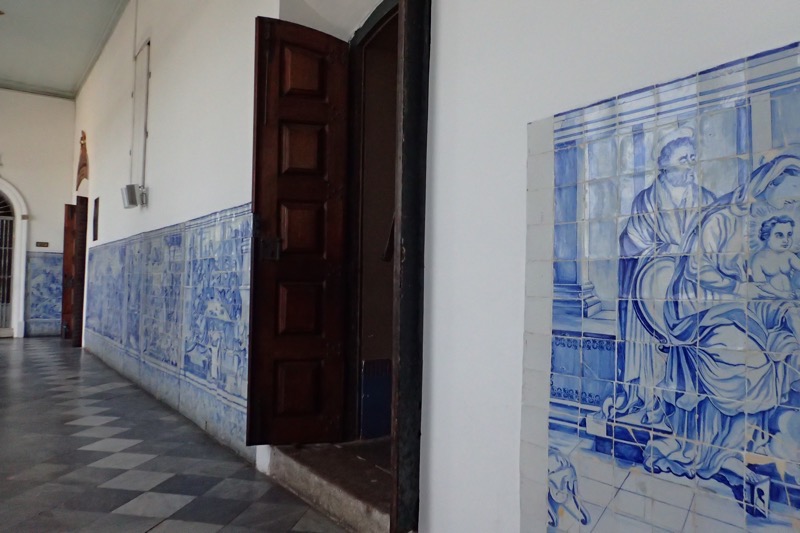
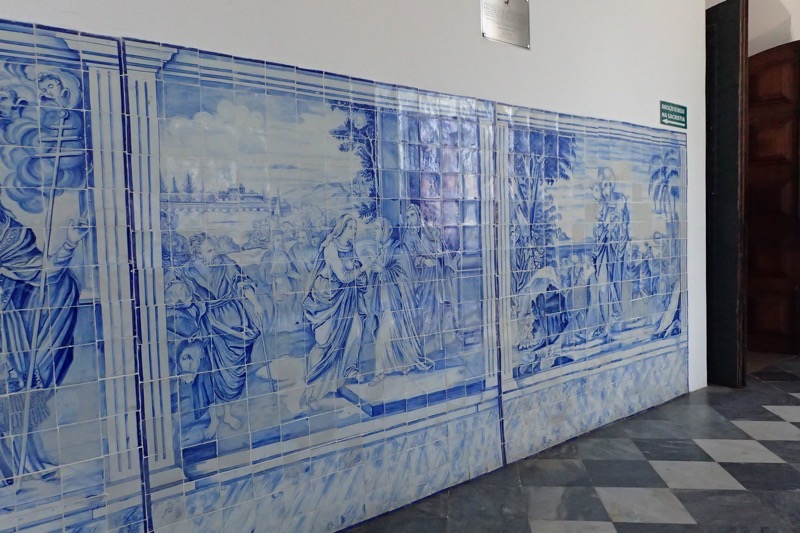
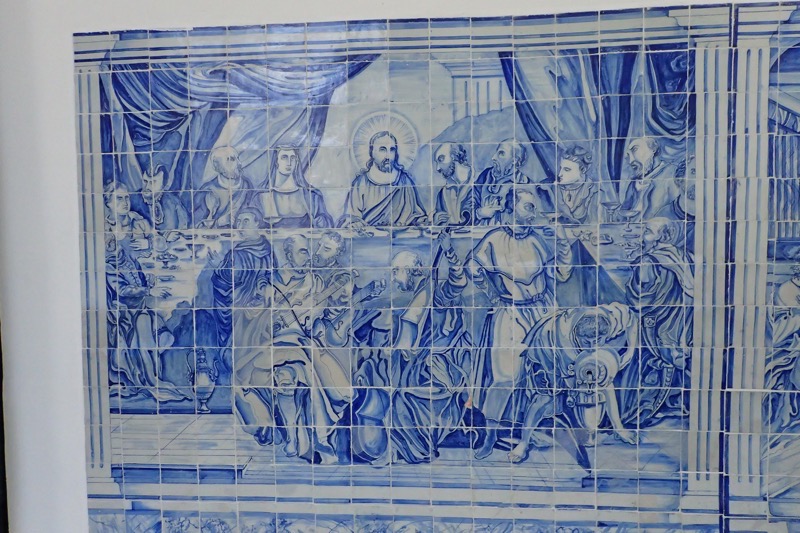 The sacristy,
The sacristy,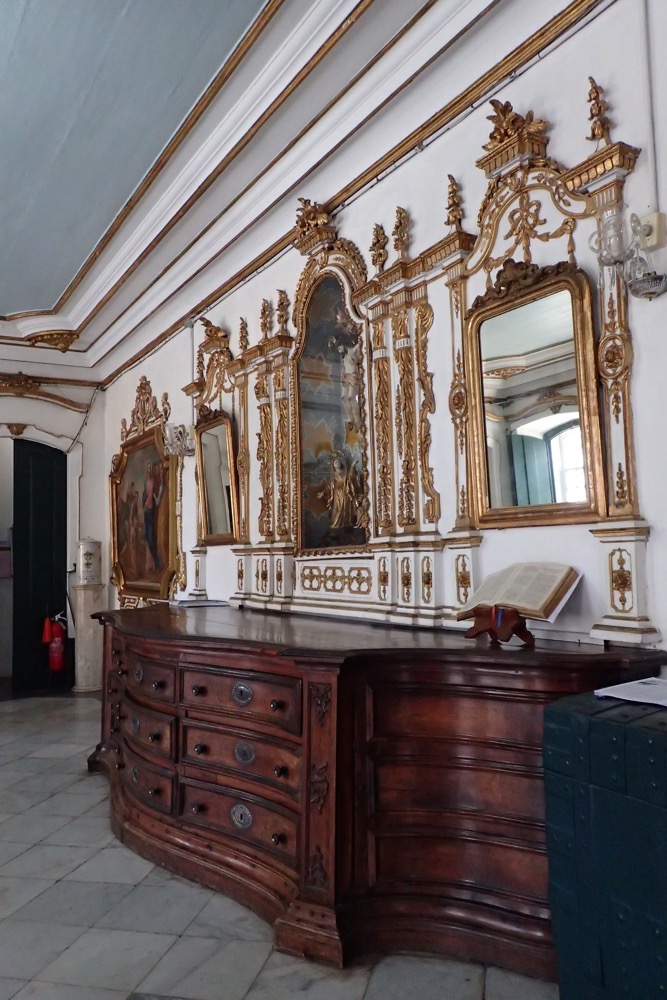 Water font used as part of cleansing and washing rituals…
Water font used as part of cleansing and washing rituals…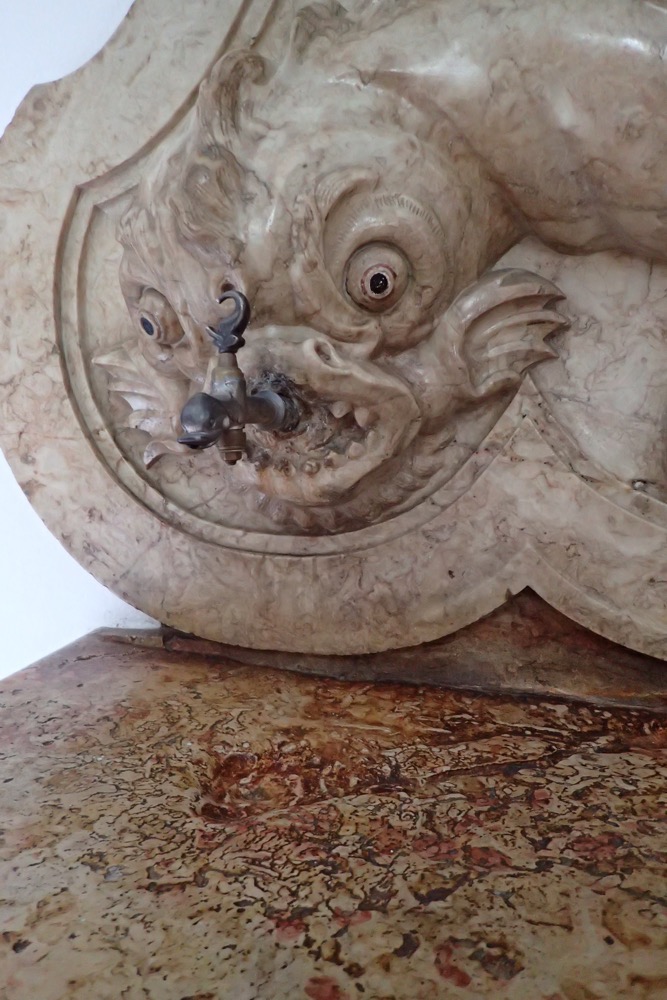 My ‘wishes’ – the yellow one in the middle.
My ‘wishes’ – the yellow one in the middle.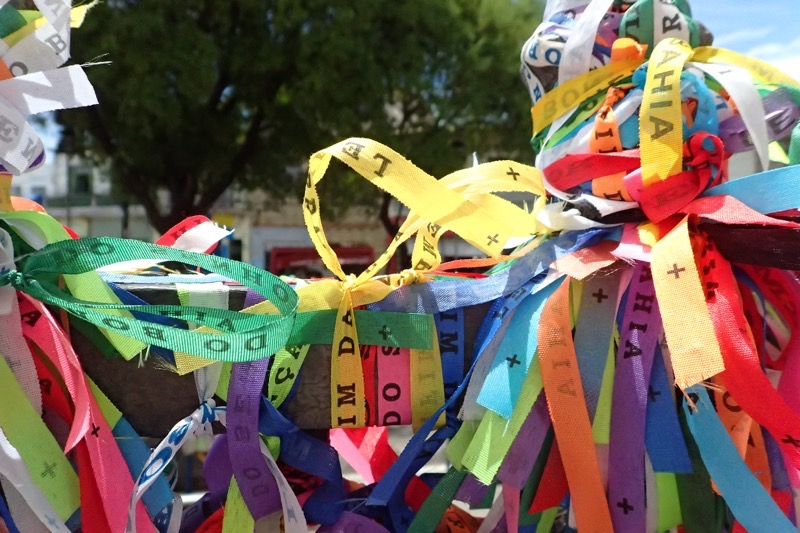
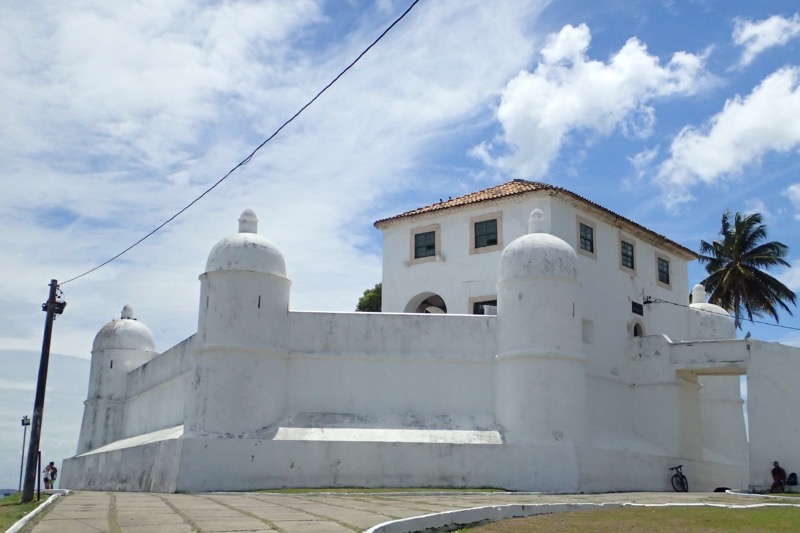
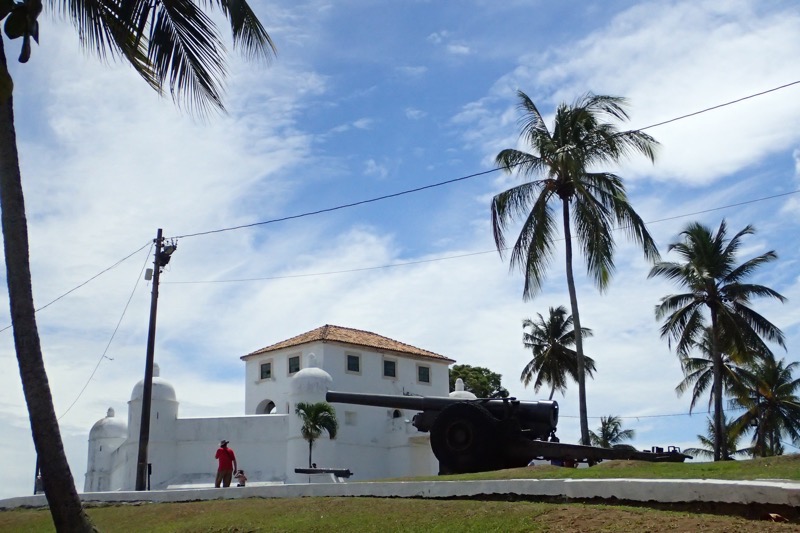
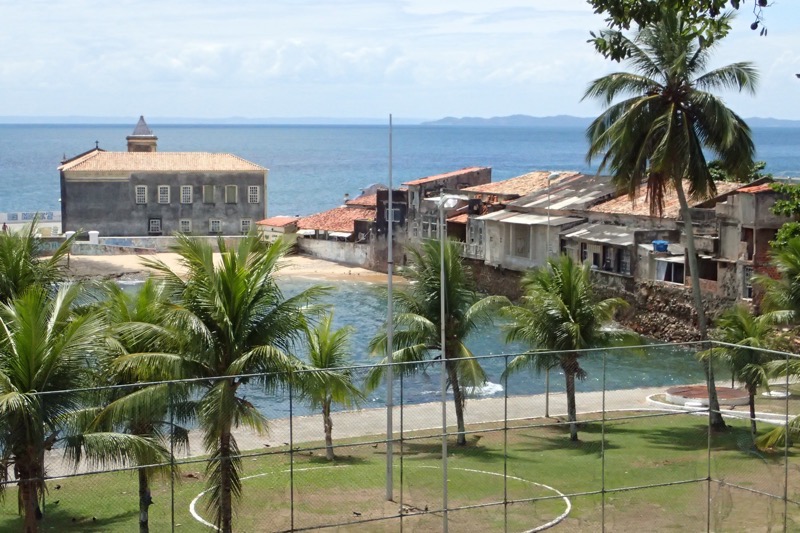 Bon Voyage Beach…
Bon Voyage Beach…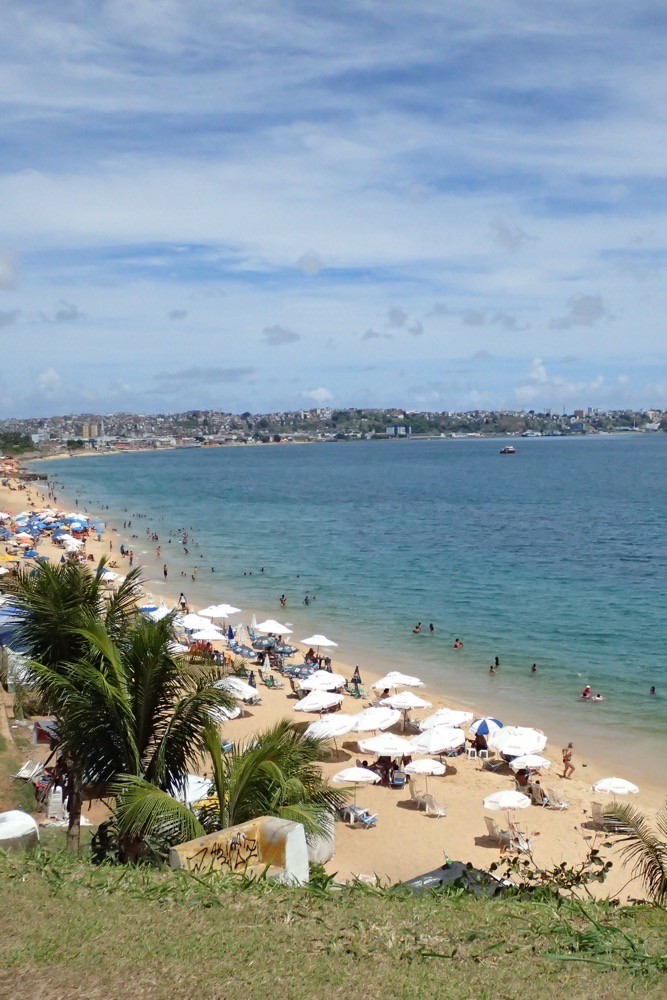
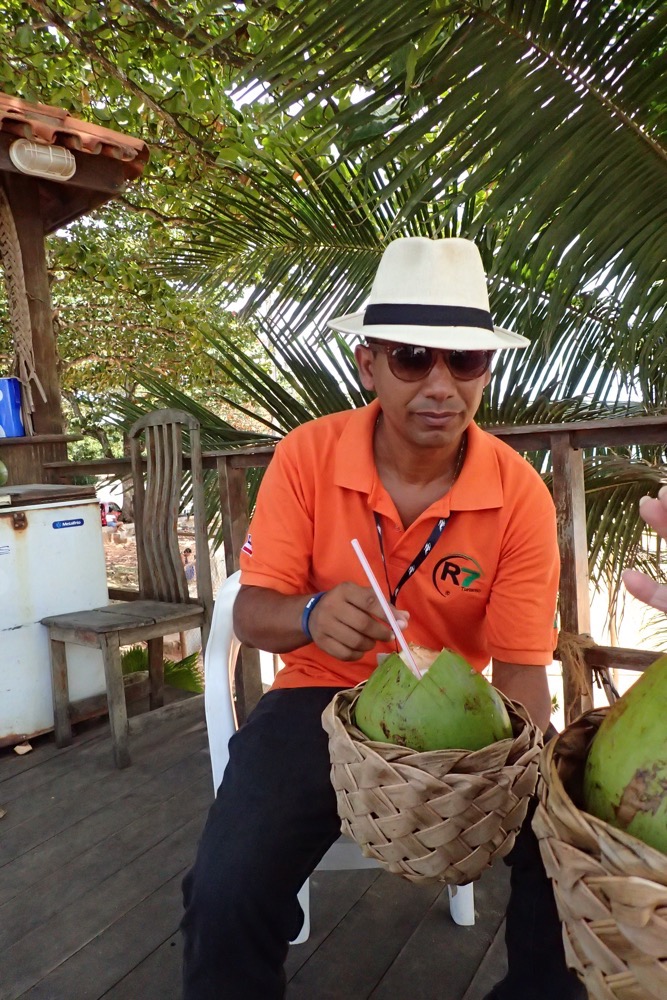
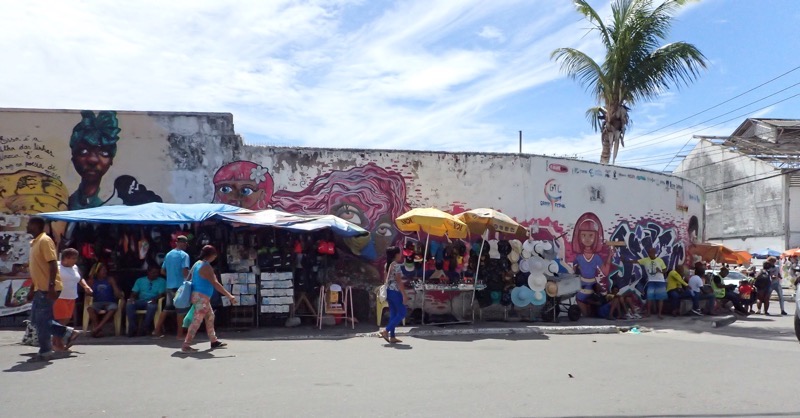
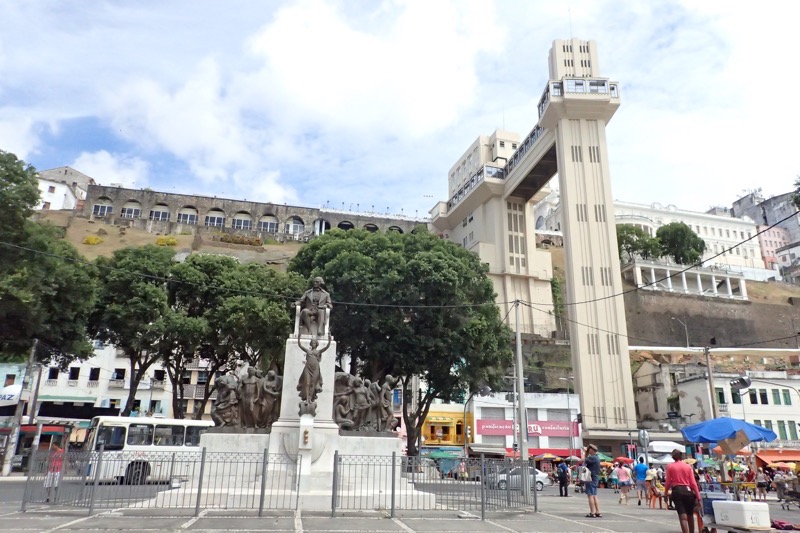
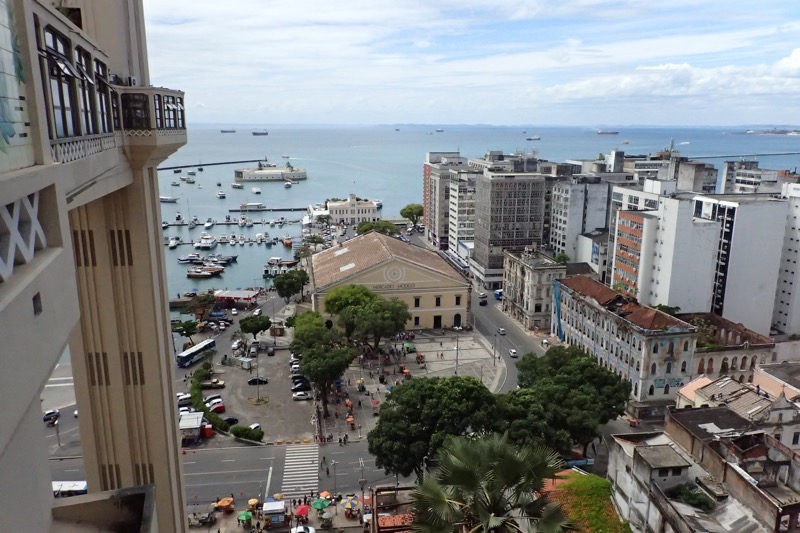
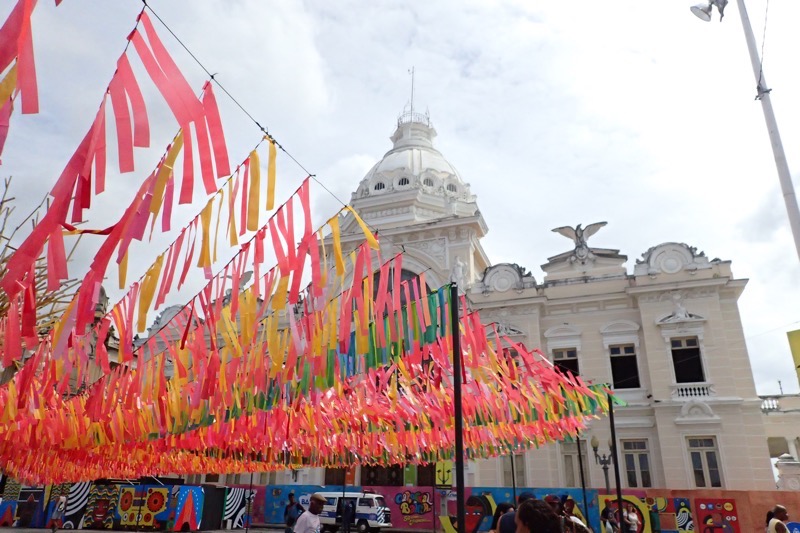
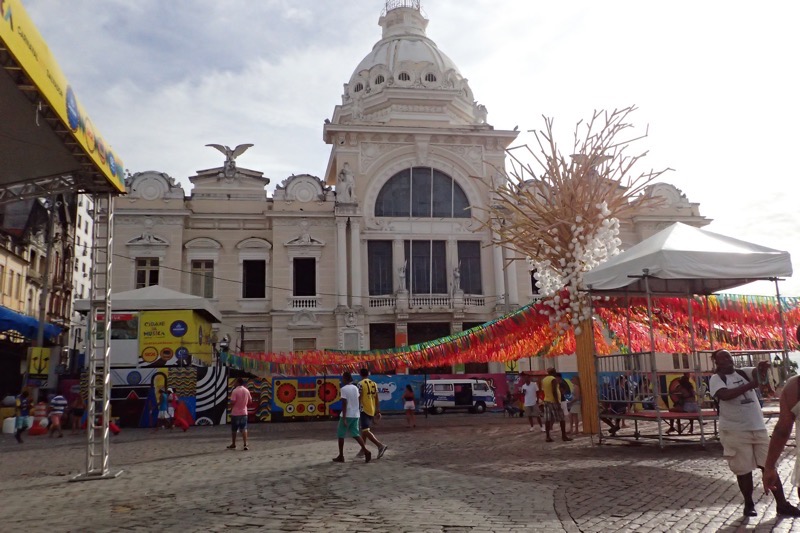
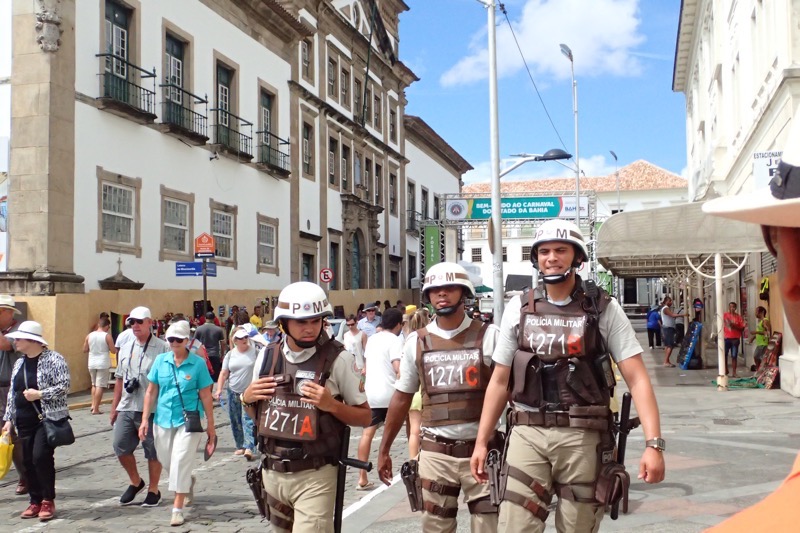 Notice about sexual harassment that was given to tourists on a handy fan.
Notice about sexual harassment that was given to tourists on a handy fan.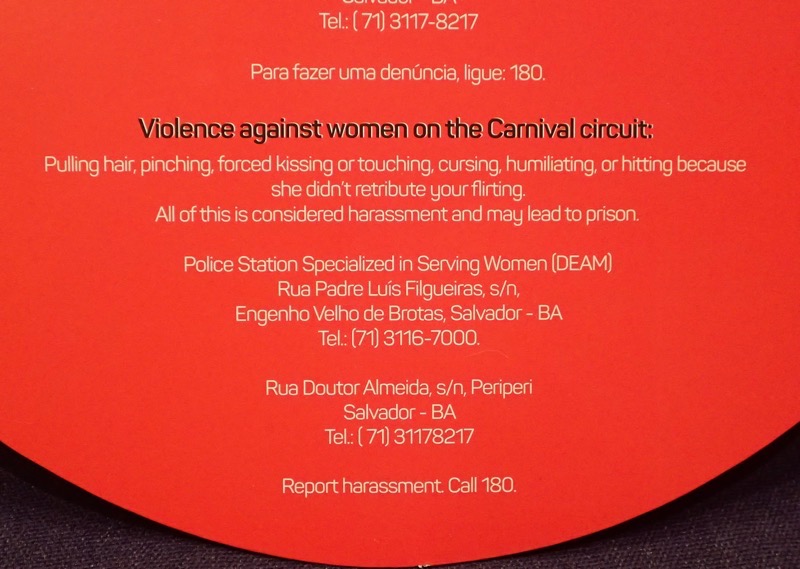
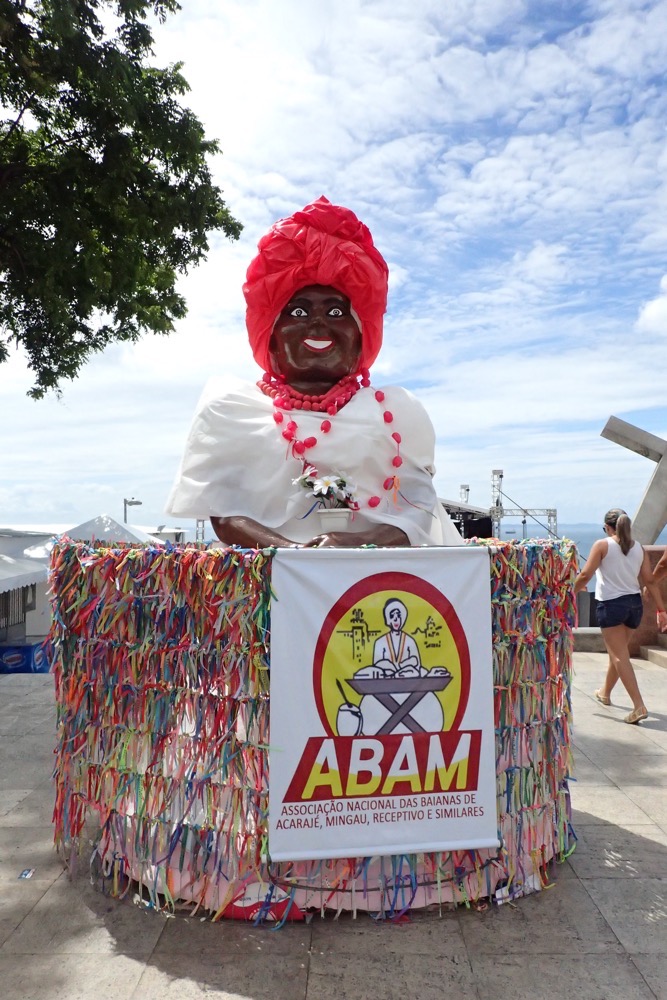
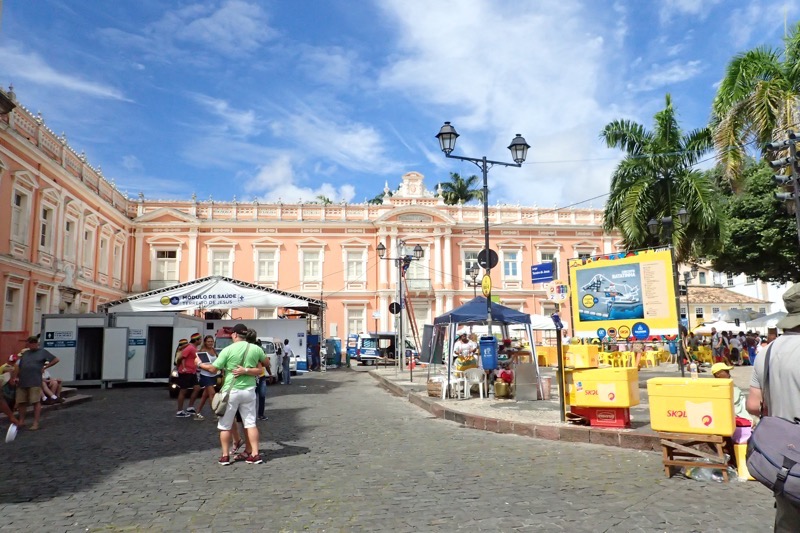 Locals getting ready for the influx of people for Carnivale.
Locals getting ready for the influx of people for Carnivale. 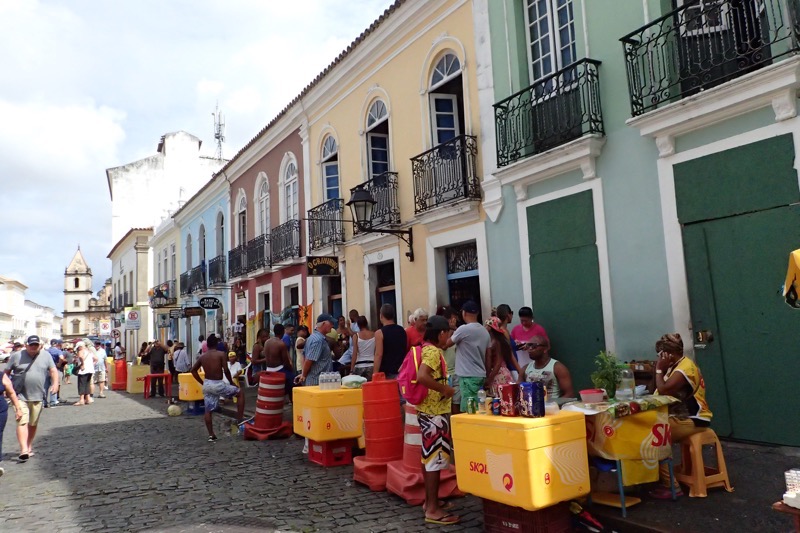
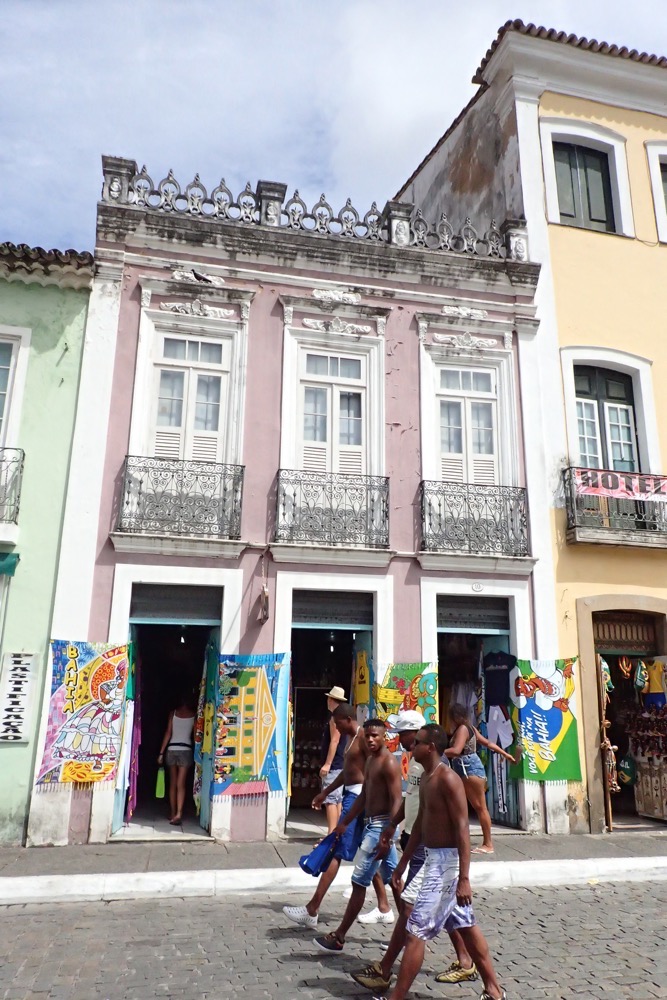 Winding cobblestone streets.
Winding cobblestone streets.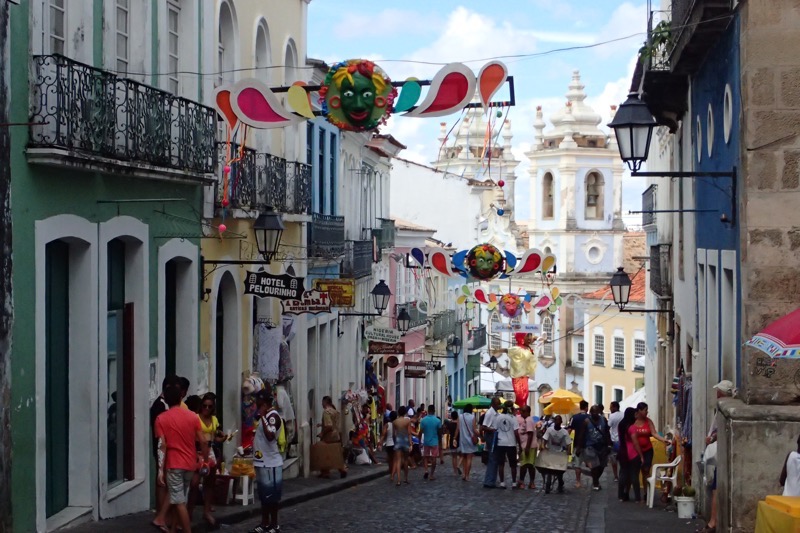
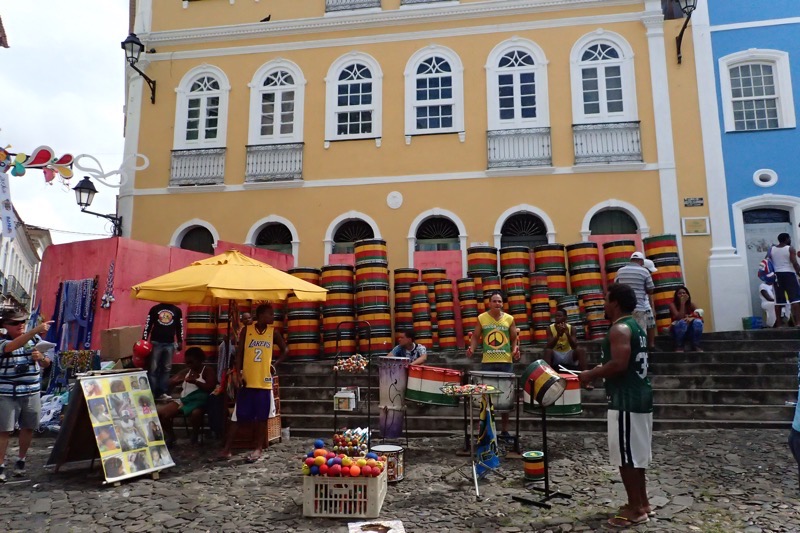
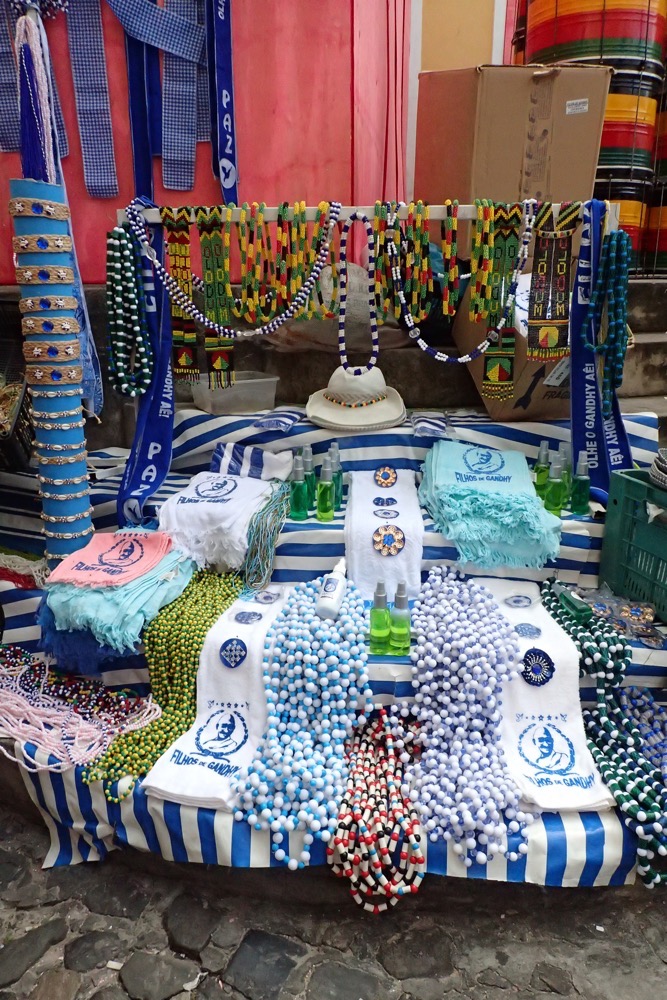 The Ghandi group selling souvenirs (no idea what Ghandi has to do with a street Carnivale in Brazil, only from what I can ascertain, any group of people can get together over a common interest and create a troupe to dance and parade together – and these guys like Ghandi’s message of peace and love).
The Ghandi group selling souvenirs (no idea what Ghandi has to do with a street Carnivale in Brazil, only from what I can ascertain, any group of people can get together over a common interest and create a troupe to dance and parade together – and these guys like Ghandi’s message of peace and love).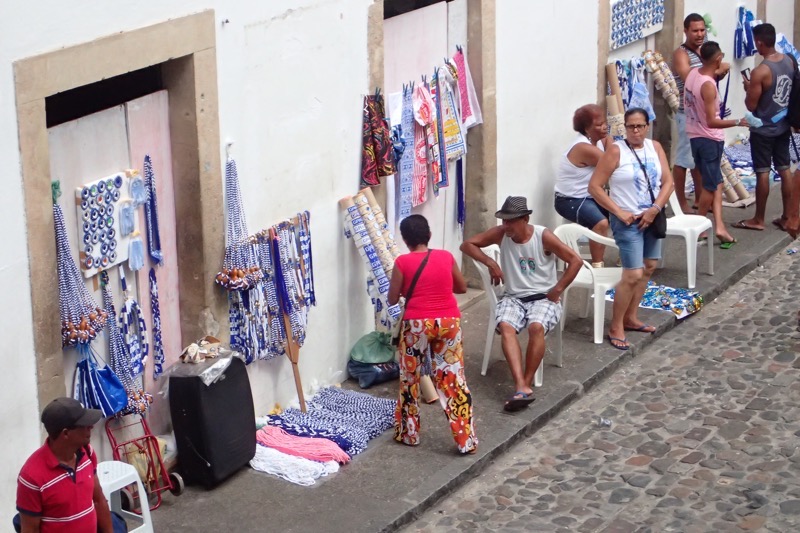
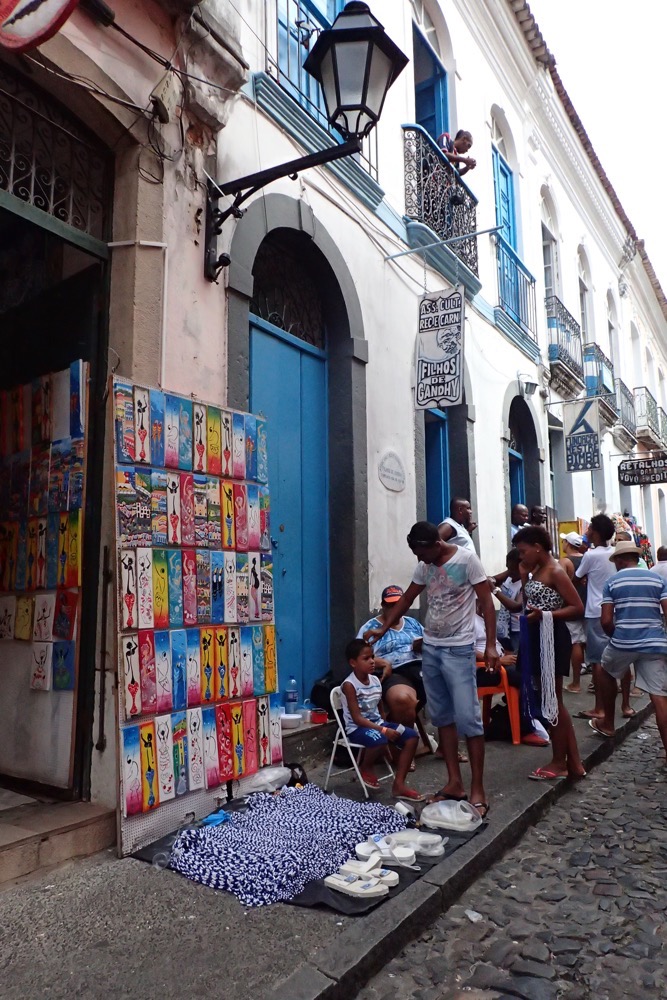
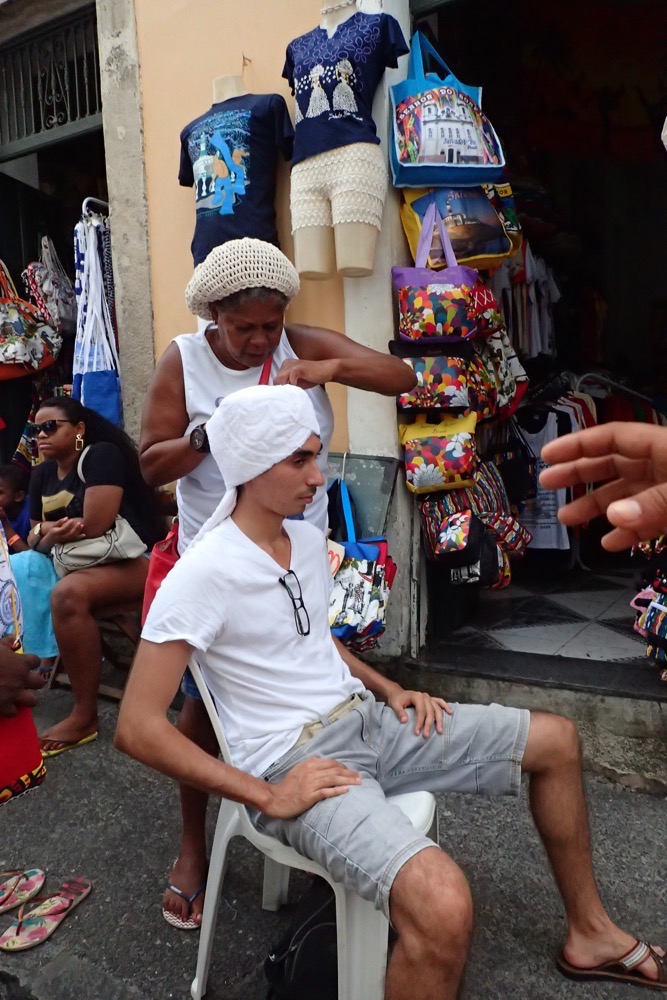
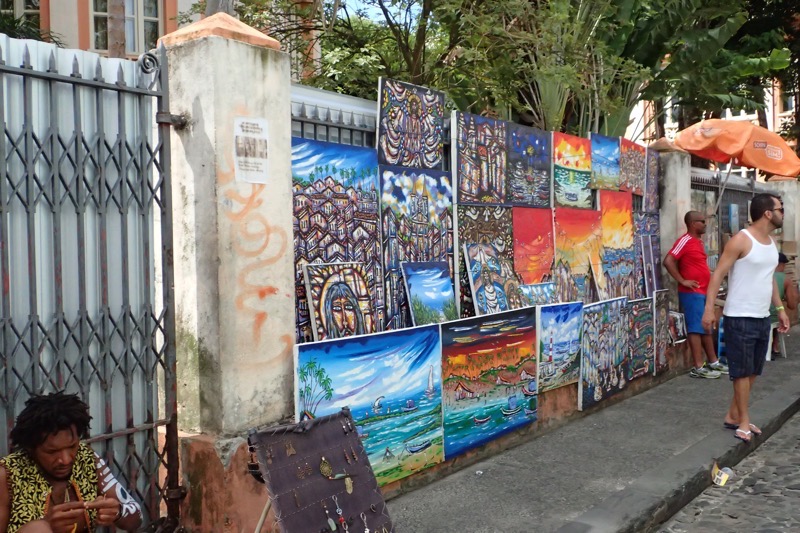

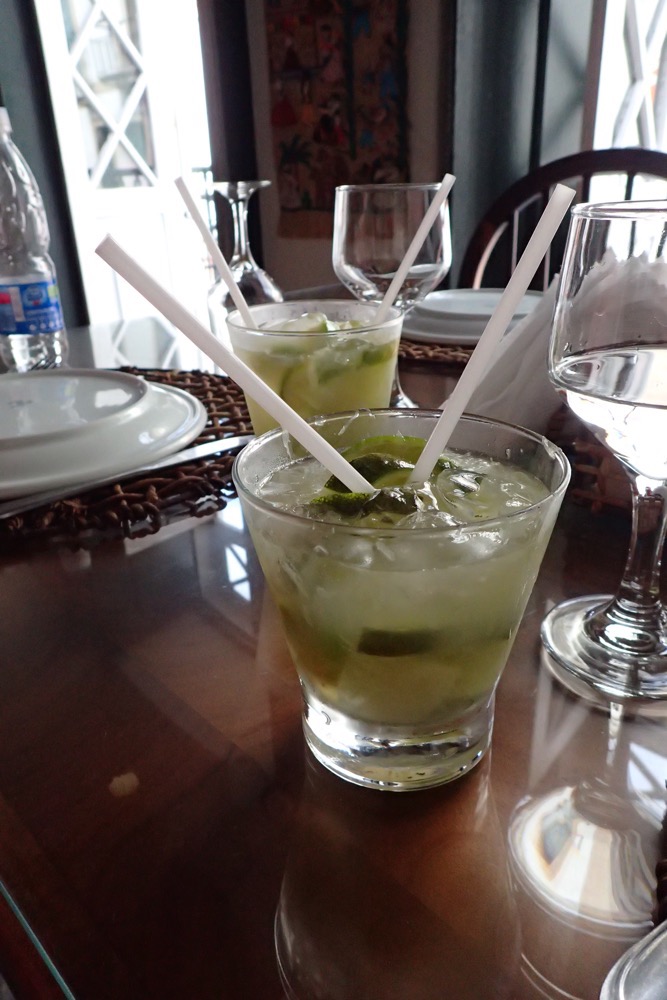
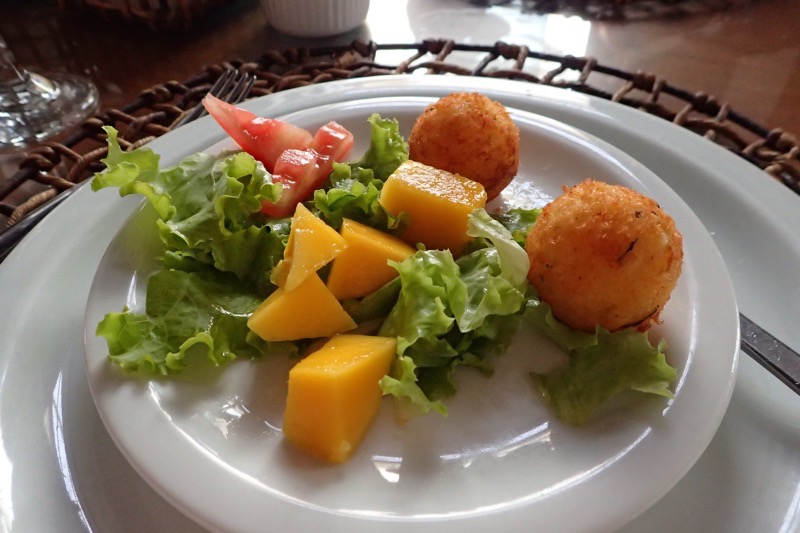
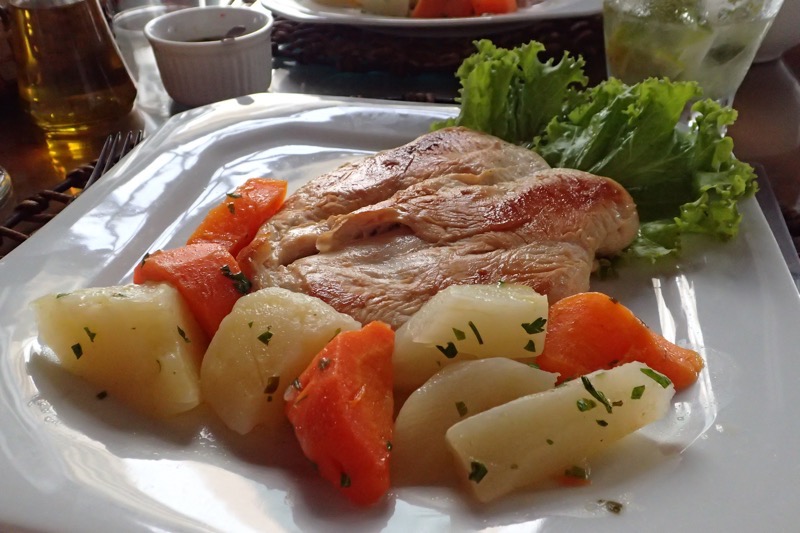
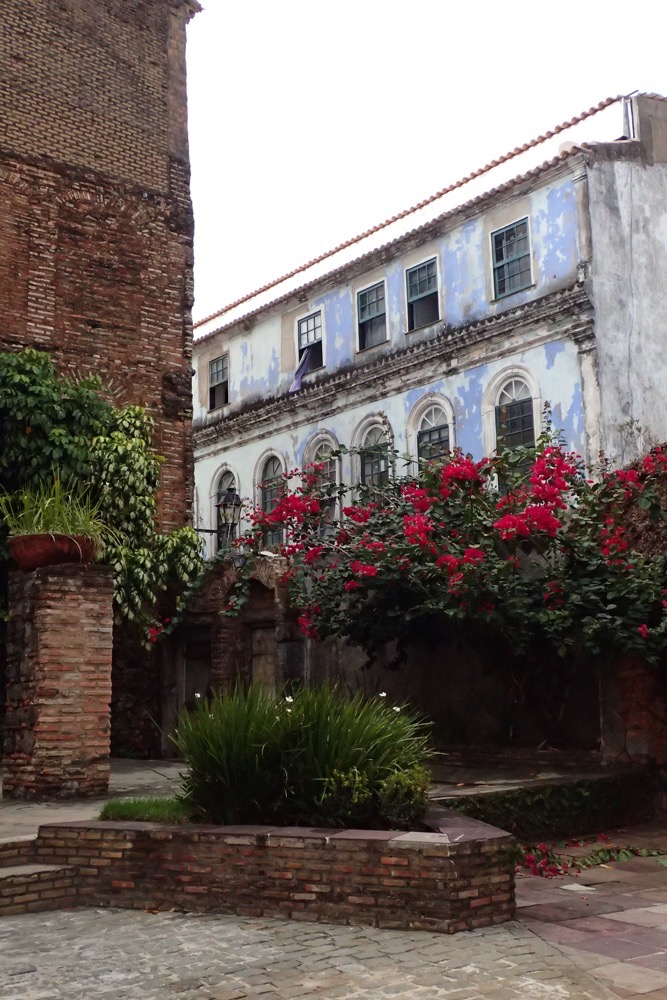
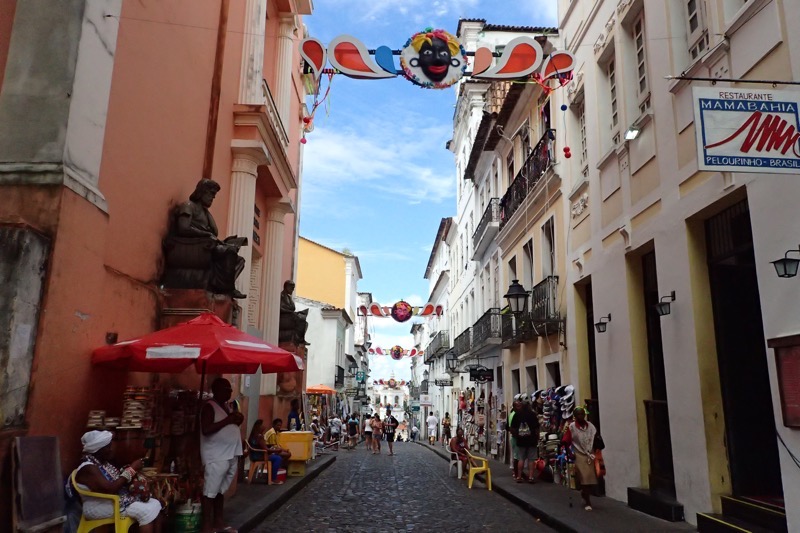
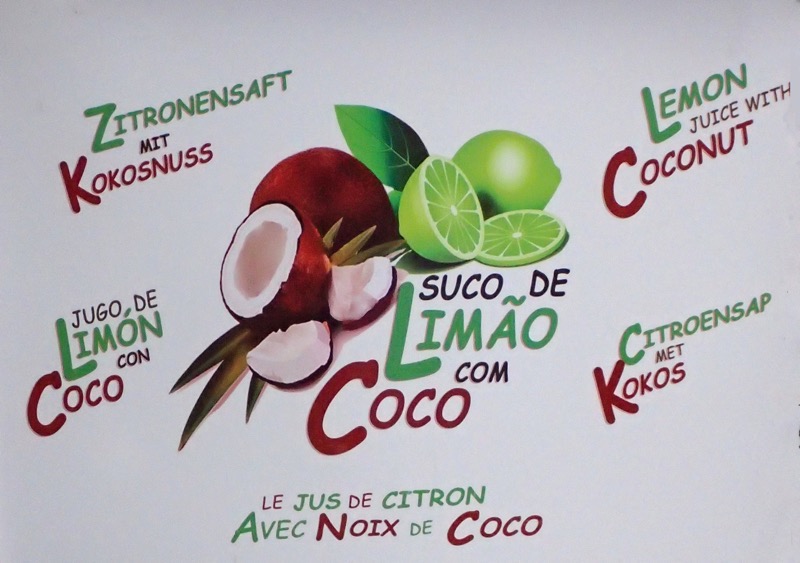
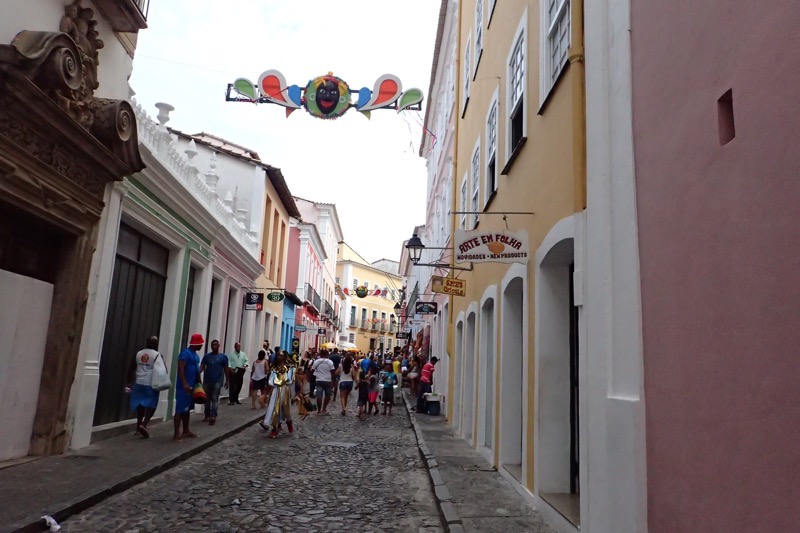 A shop owner dressed as a rich Bahia woman for the Carnivale… white was for wealthy people, and colours for working class people.
A shop owner dressed as a rich Bahia woman for the Carnivale… white was for wealthy people, and colours for working class people.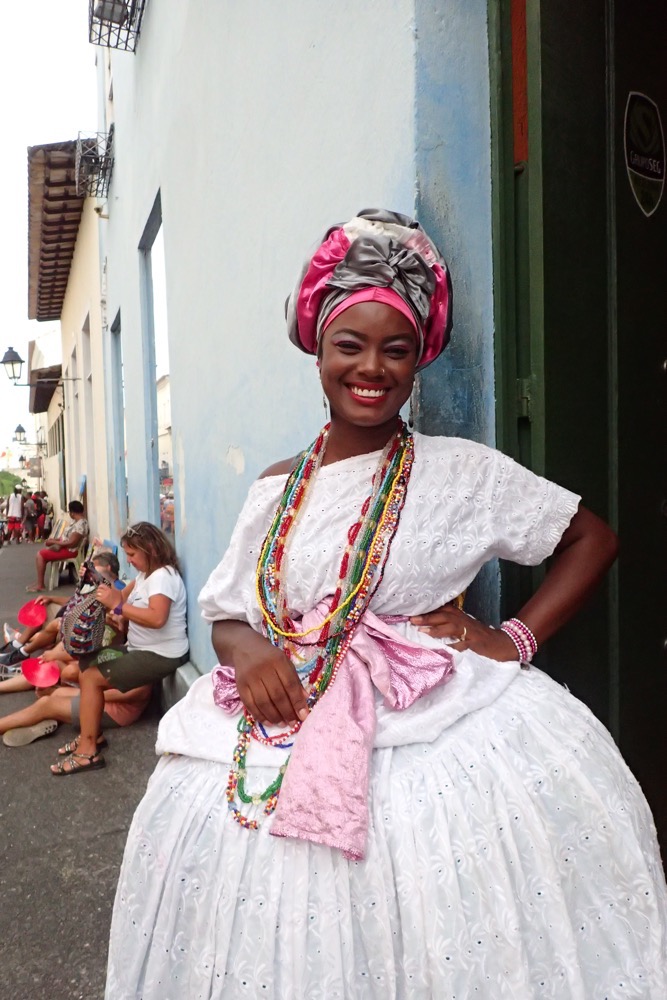
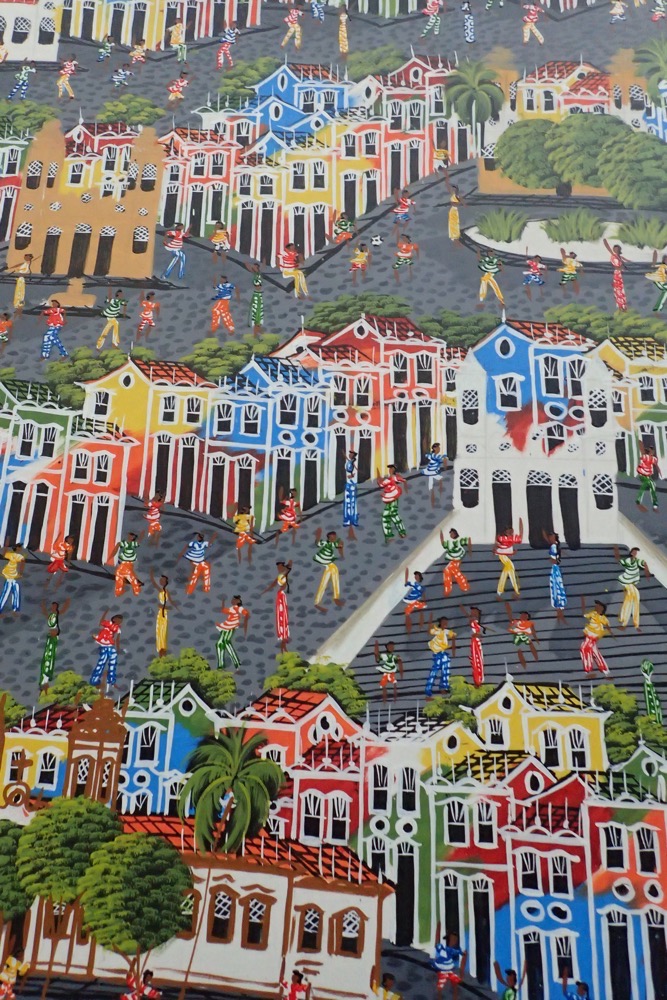
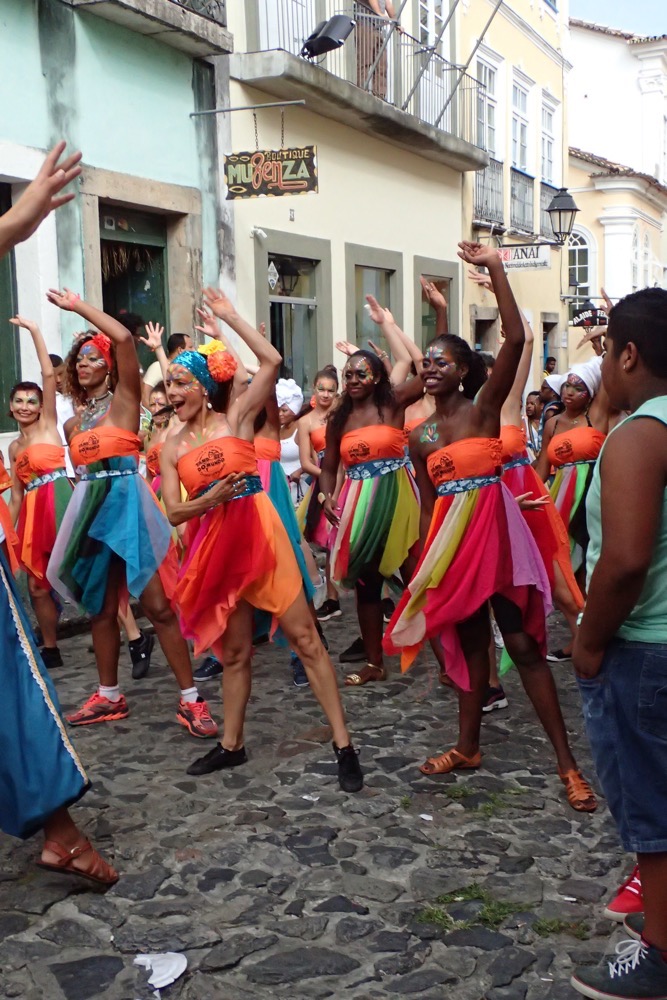
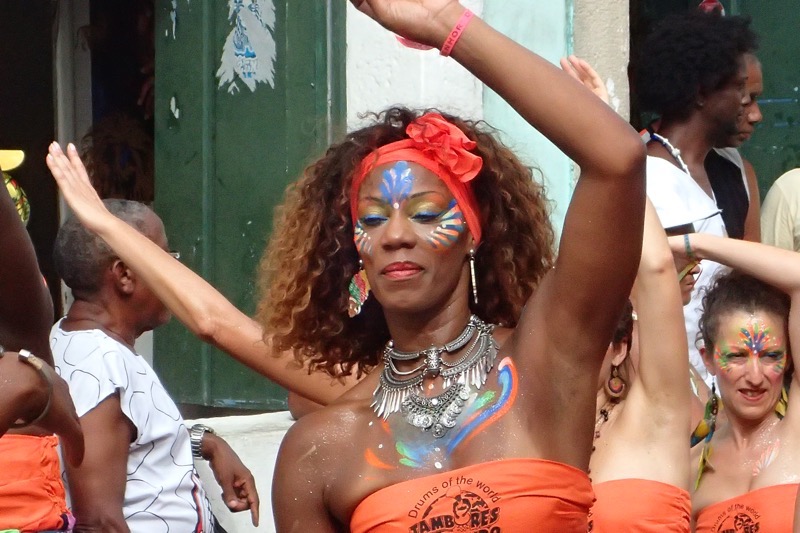
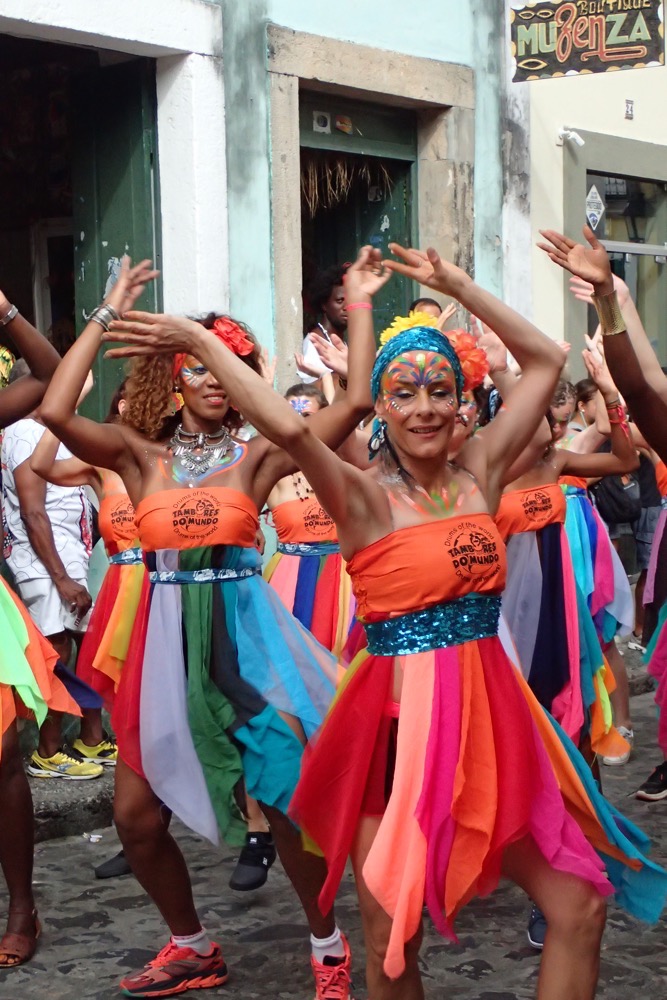
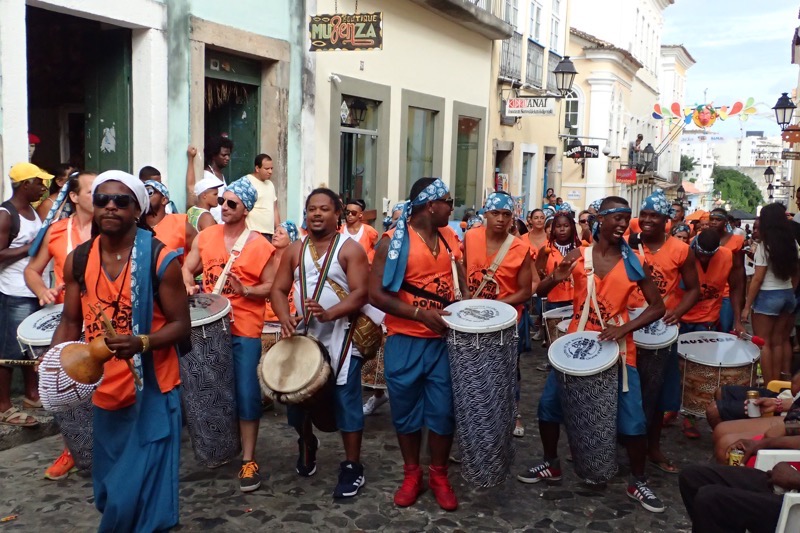 I also saw these gorgeous little girls dressed up to participate, but they were drawing so much attention that they were too shy to dance. 🙂 I was very gratified to see them wearing hearing protection if they were going to be surrounded by these drums for hours.
I also saw these gorgeous little girls dressed up to participate, but they were drawing so much attention that they were too shy to dance. 🙂 I was very gratified to see them wearing hearing protection if they were going to be surrounded by these drums for hours.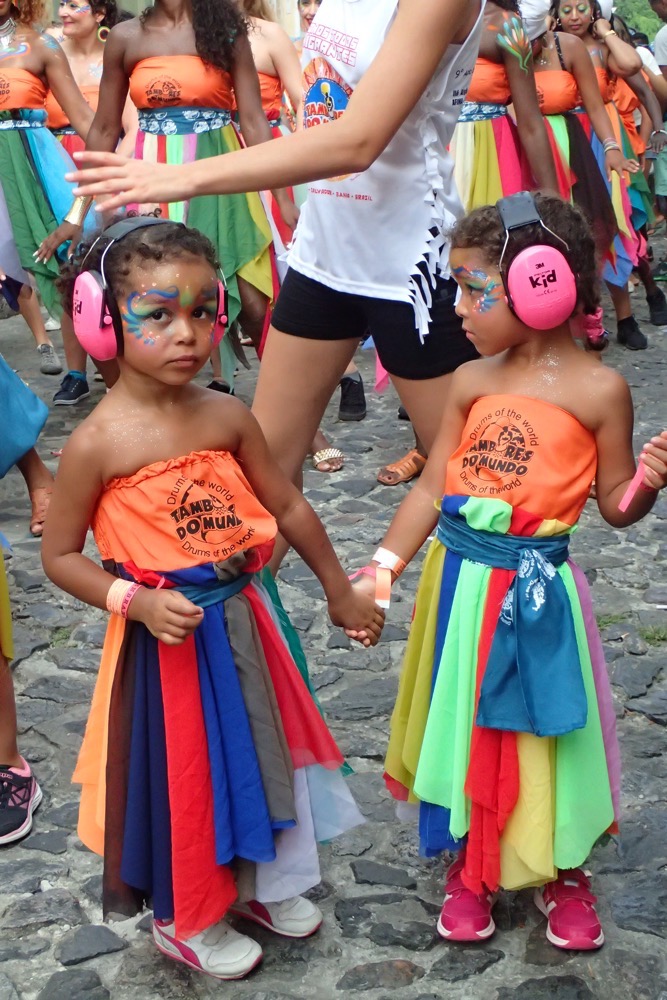
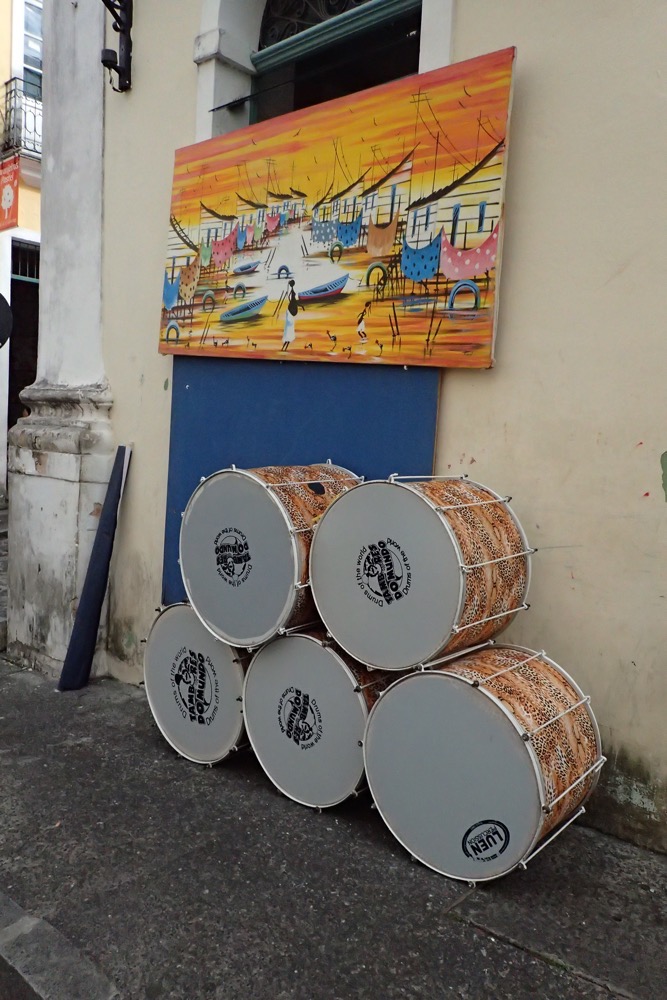
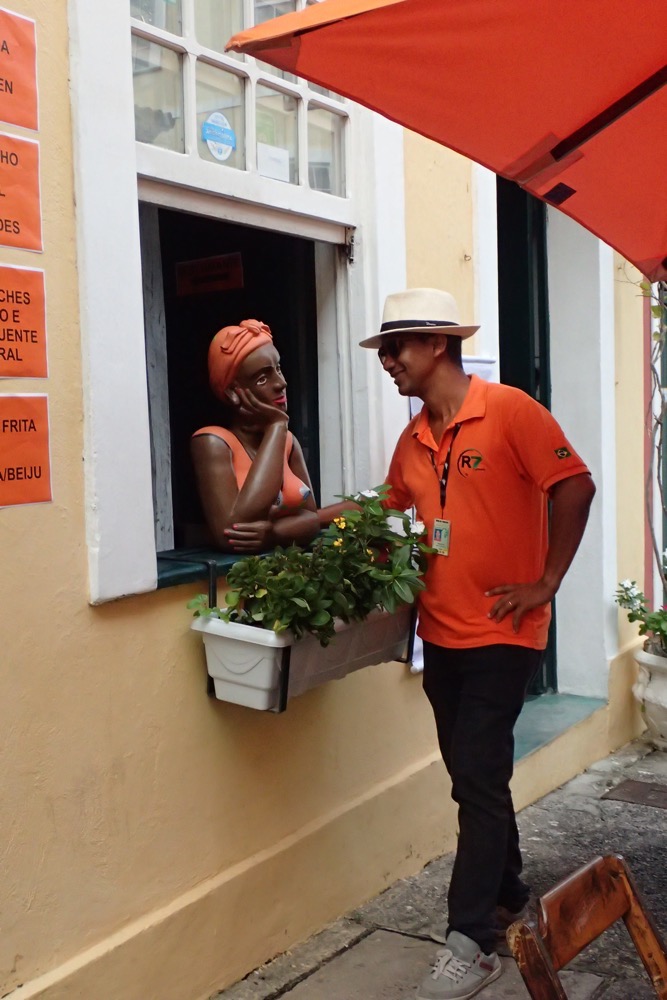
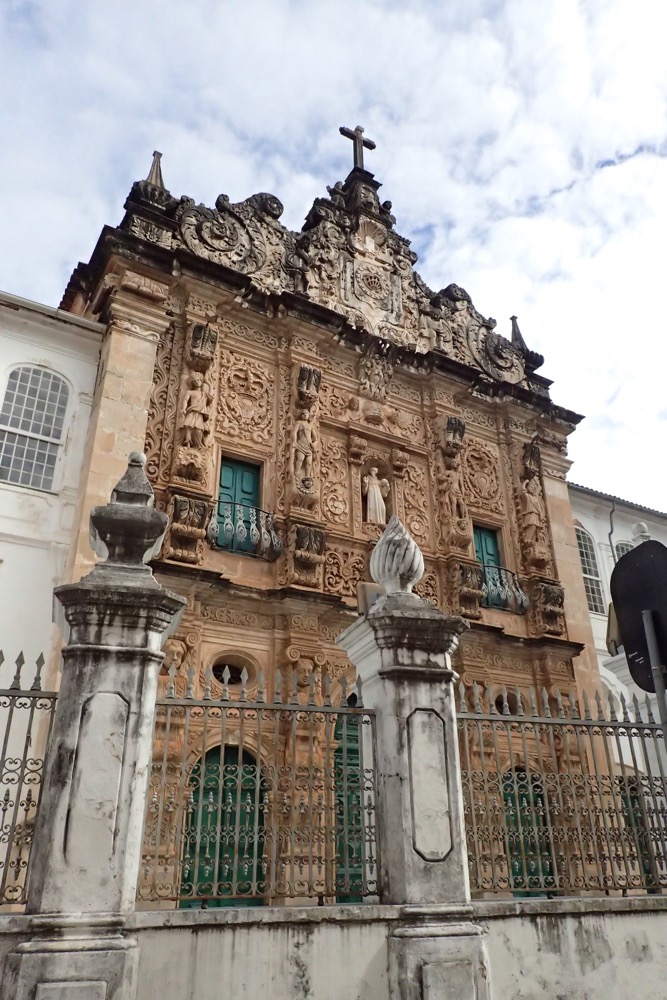
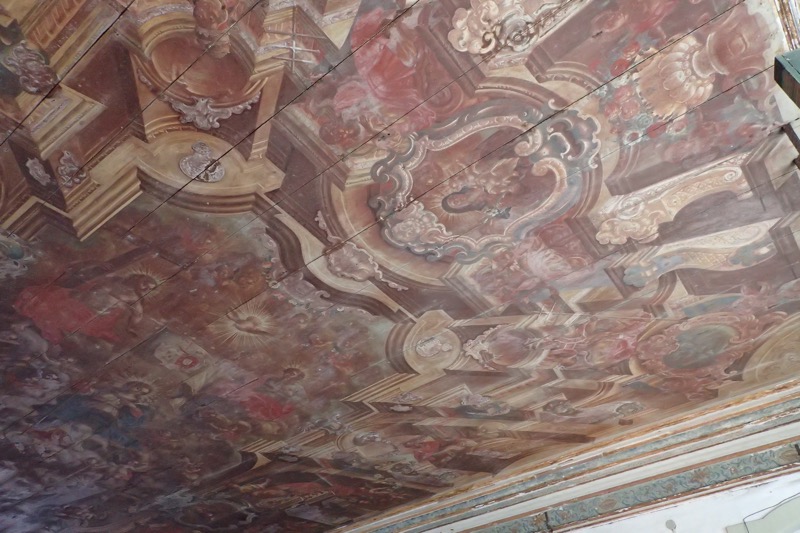
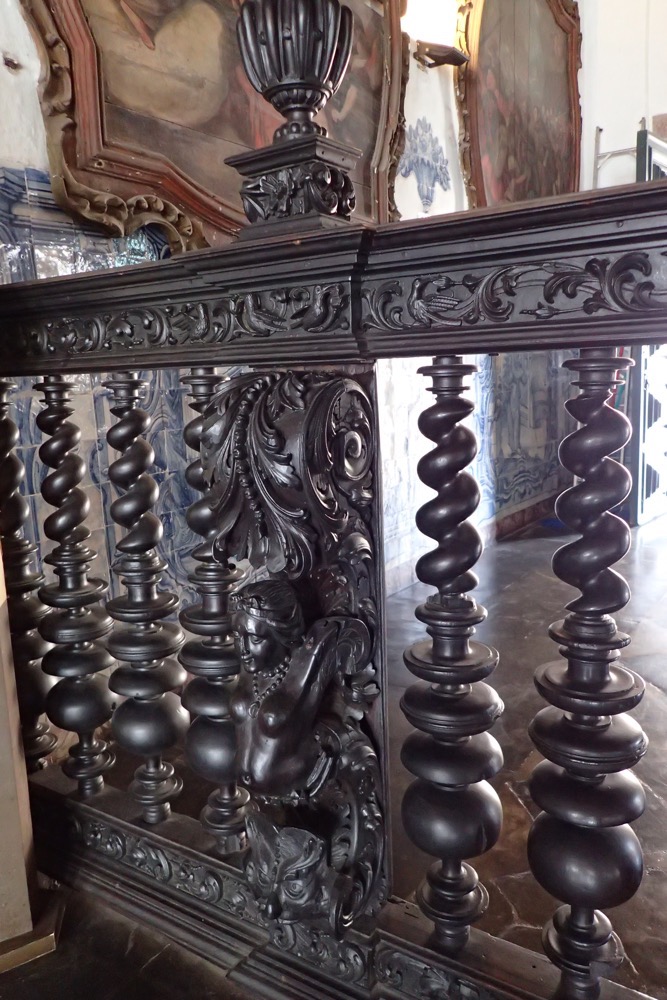
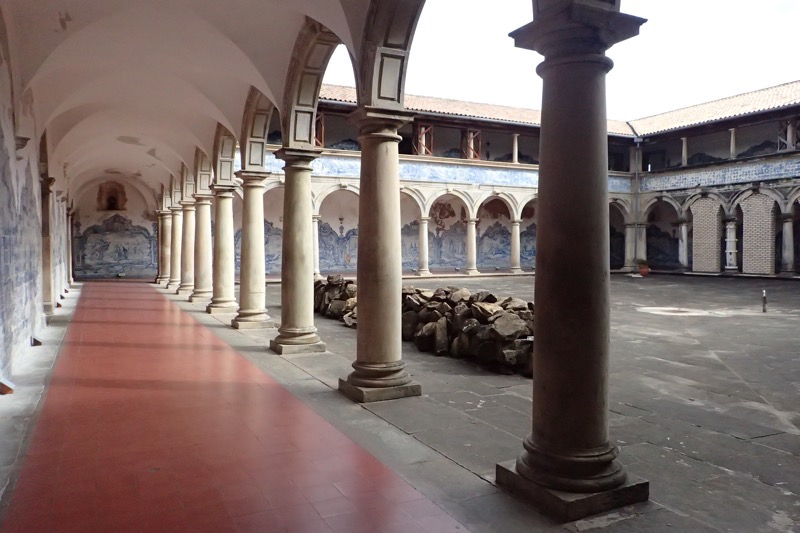
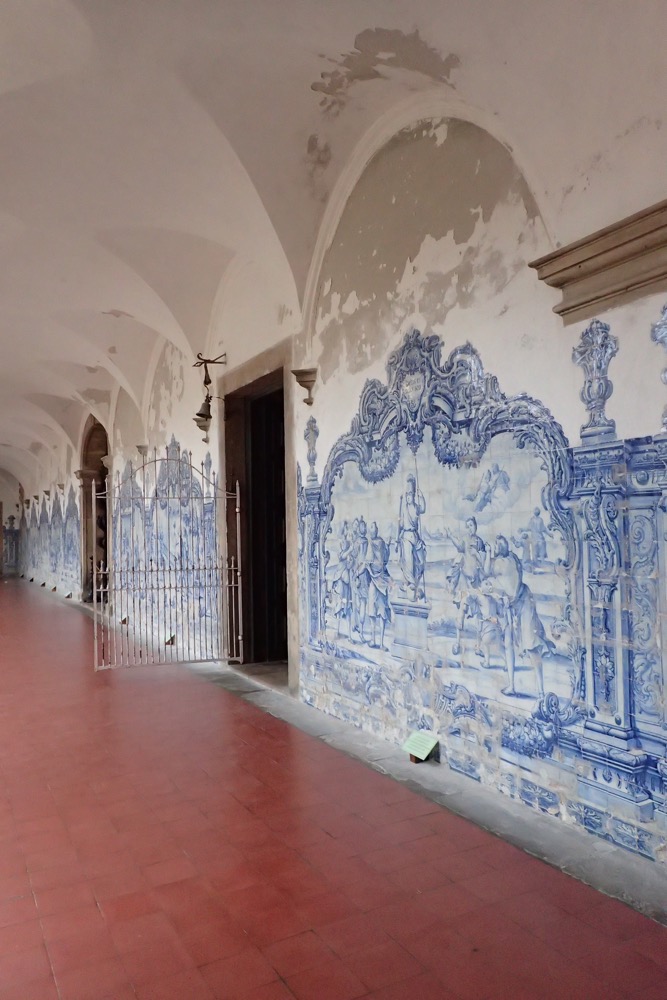
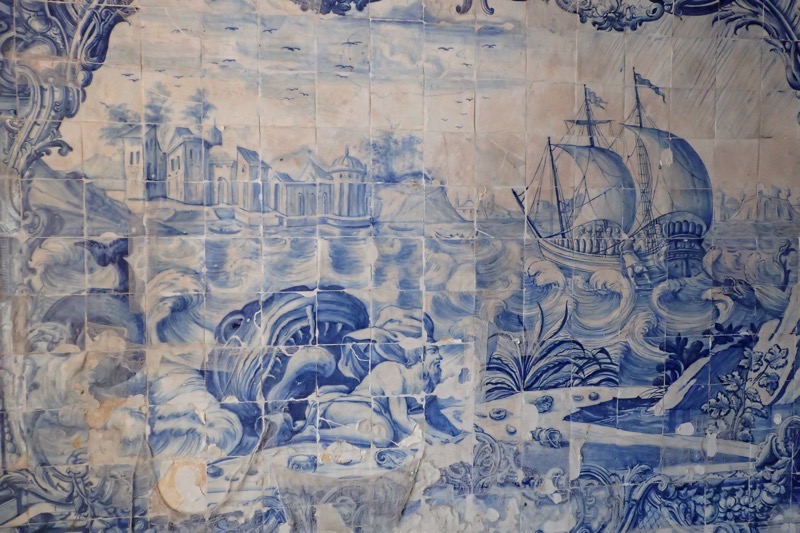
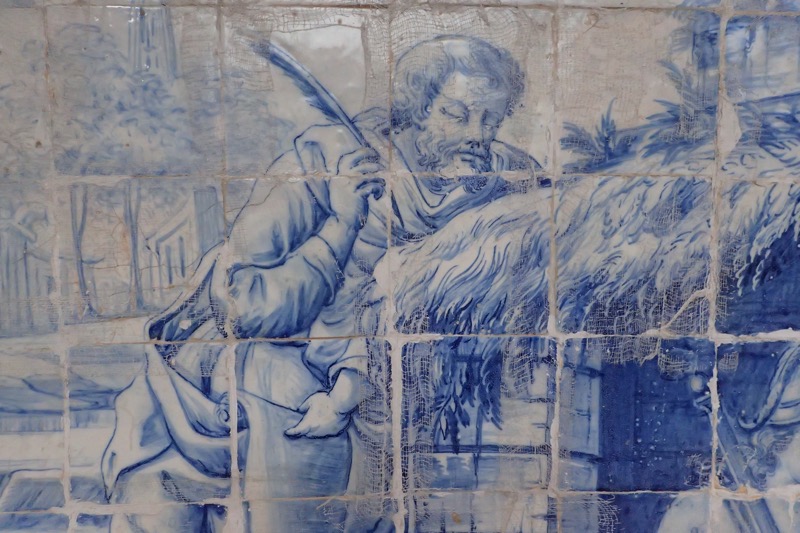
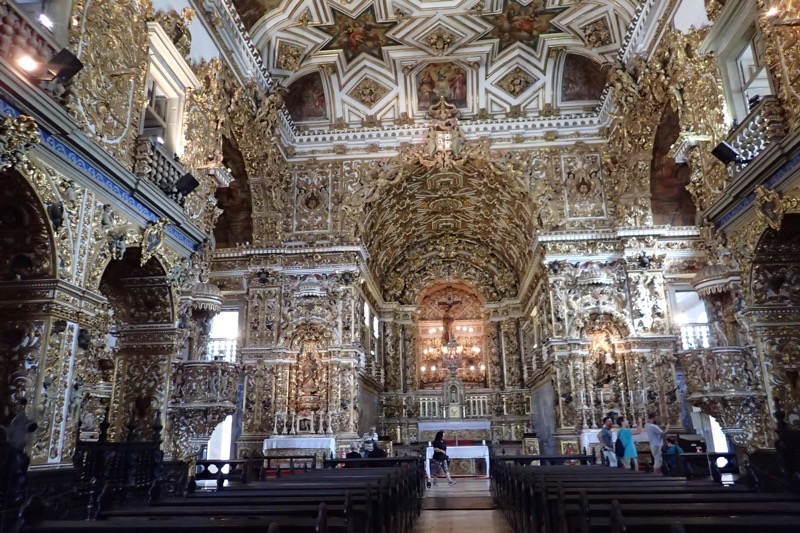
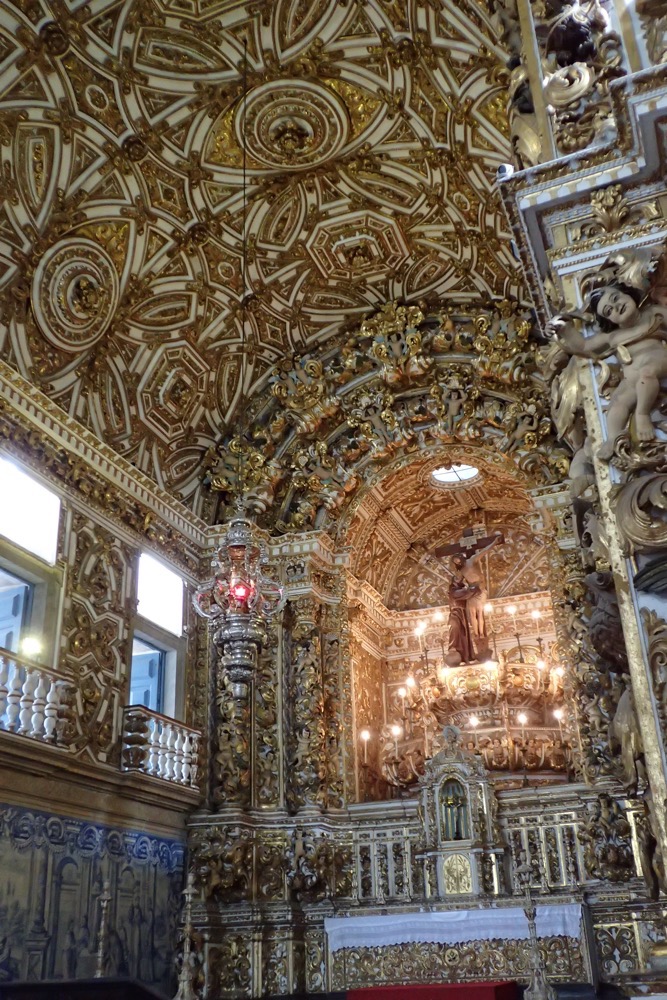
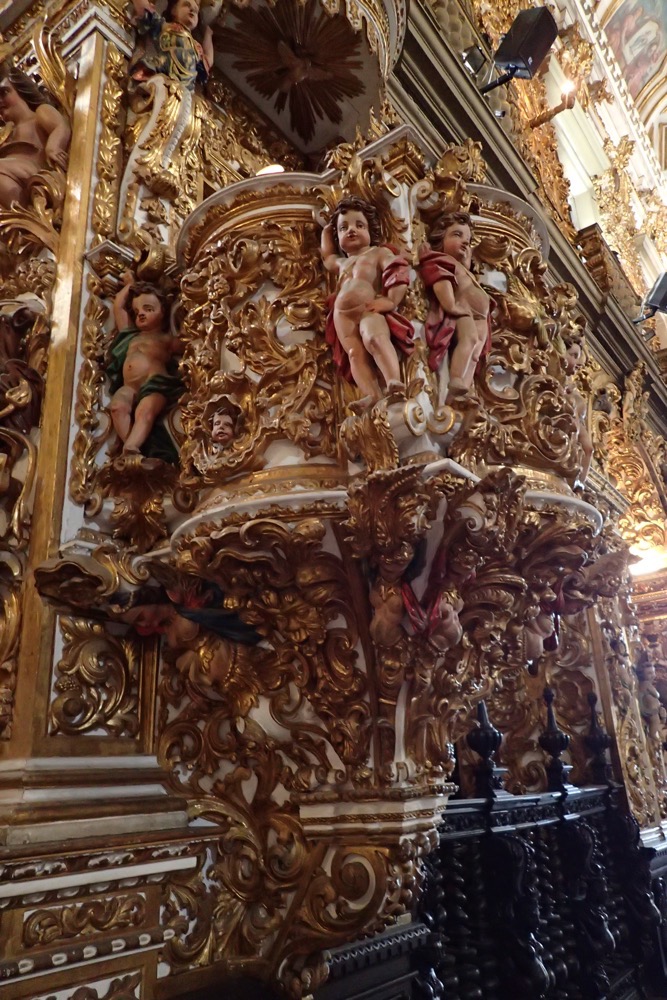 This place is a treasure and is a hugely important part of the region’s history, but it needs an enormous injection of cash and a lot of work to keep it for future generations. But at the same time, how can modern Brazil justify that sort of expense, when right outside this historic district are areas of abject poverty? It’s a conundrum; the modest entry fee and the occasional fundraiser are not going to be sufficient to save this place from the damage caused by time. It is beautiful but also somewhat sad.
This place is a treasure and is a hugely important part of the region’s history, but it needs an enormous injection of cash and a lot of work to keep it for future generations. But at the same time, how can modern Brazil justify that sort of expense, when right outside this historic district are areas of abject poverty? It’s a conundrum; the modest entry fee and the occasional fundraiser are not going to be sufficient to save this place from the damage caused by time. It is beautiful but also somewhat sad.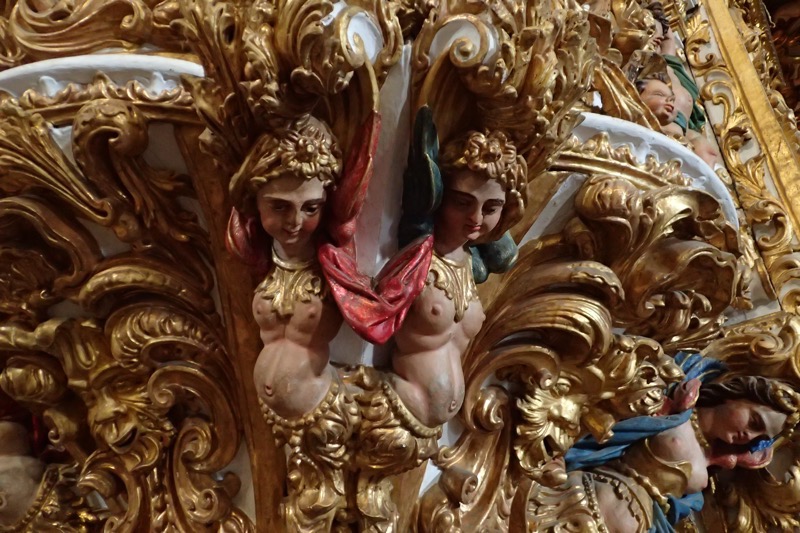
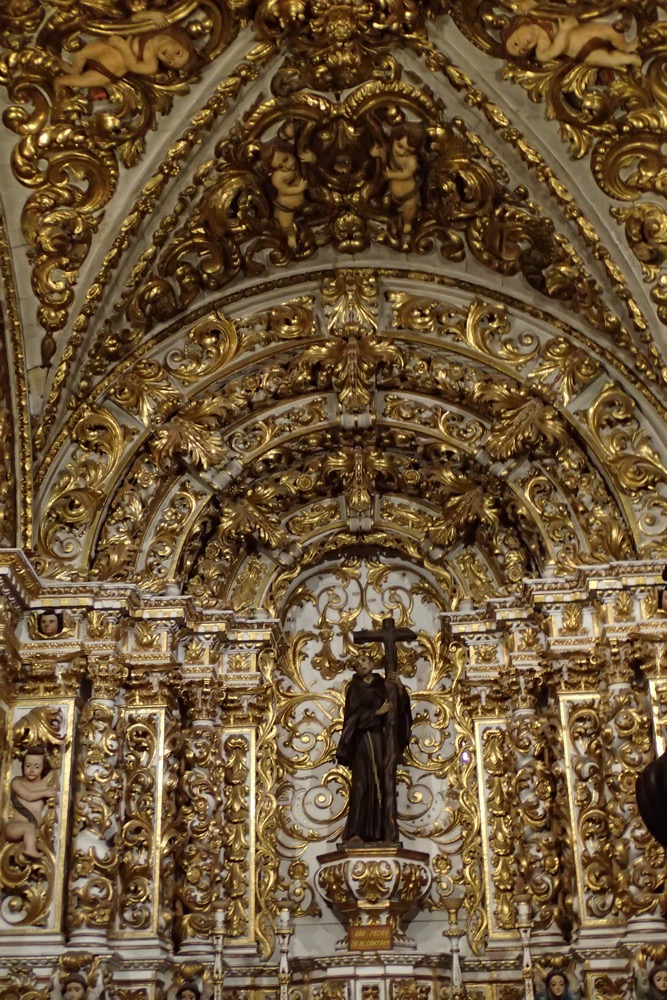
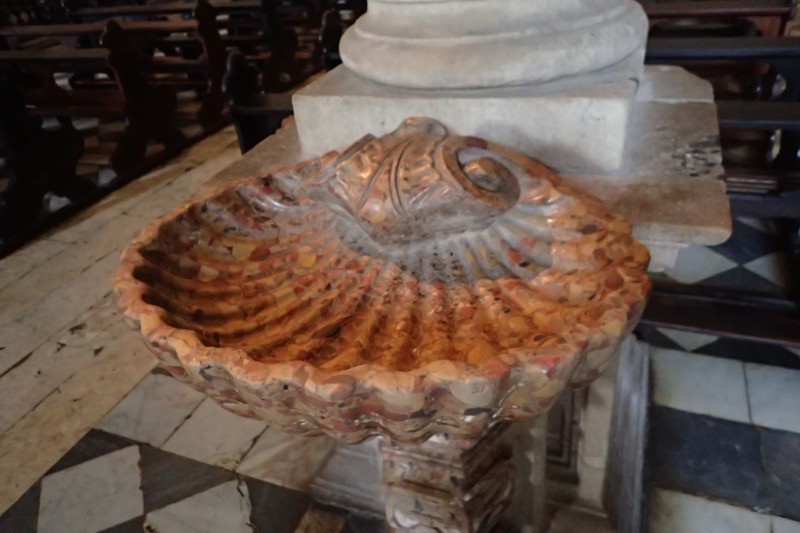
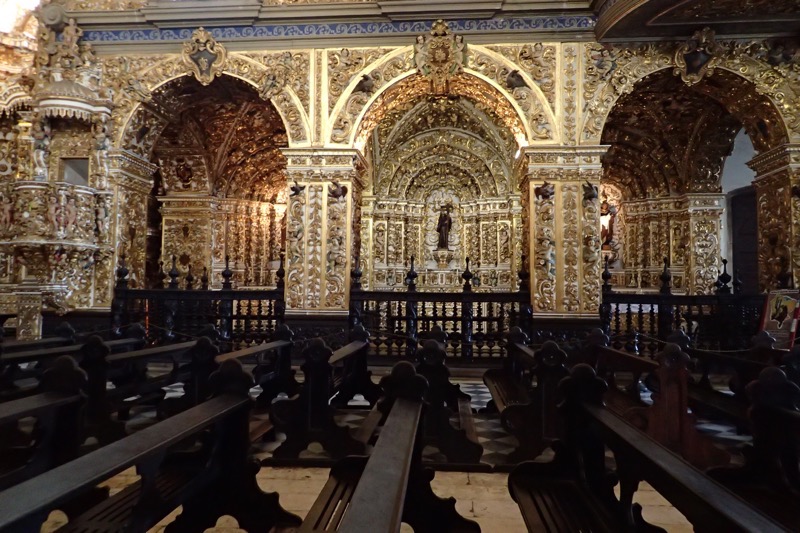
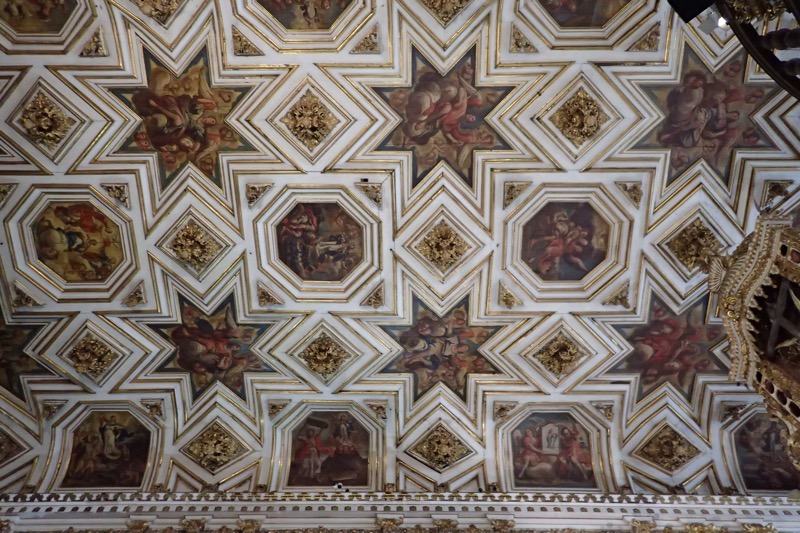
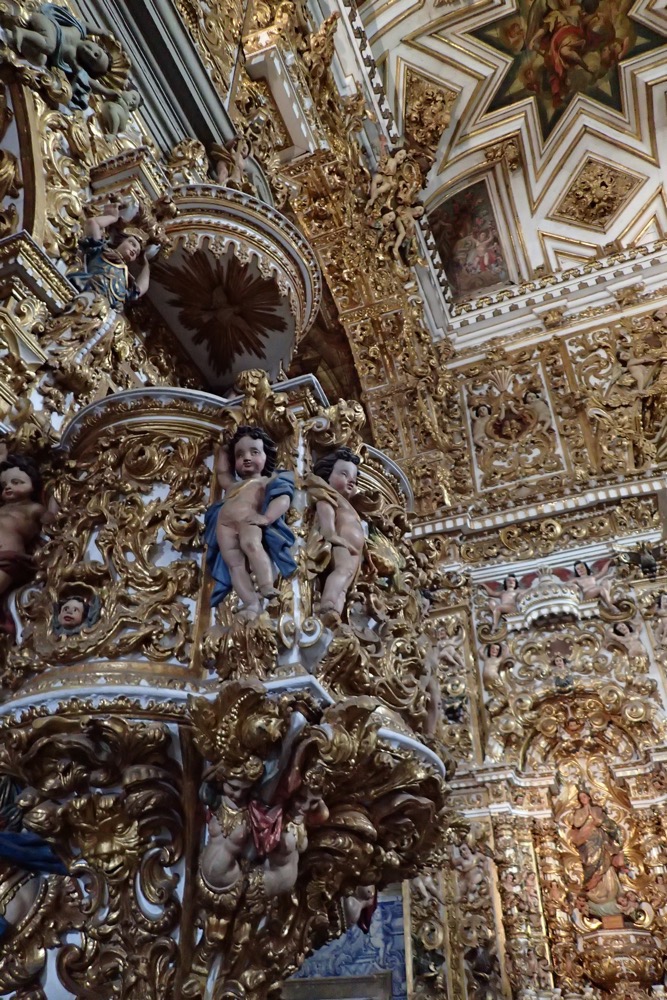
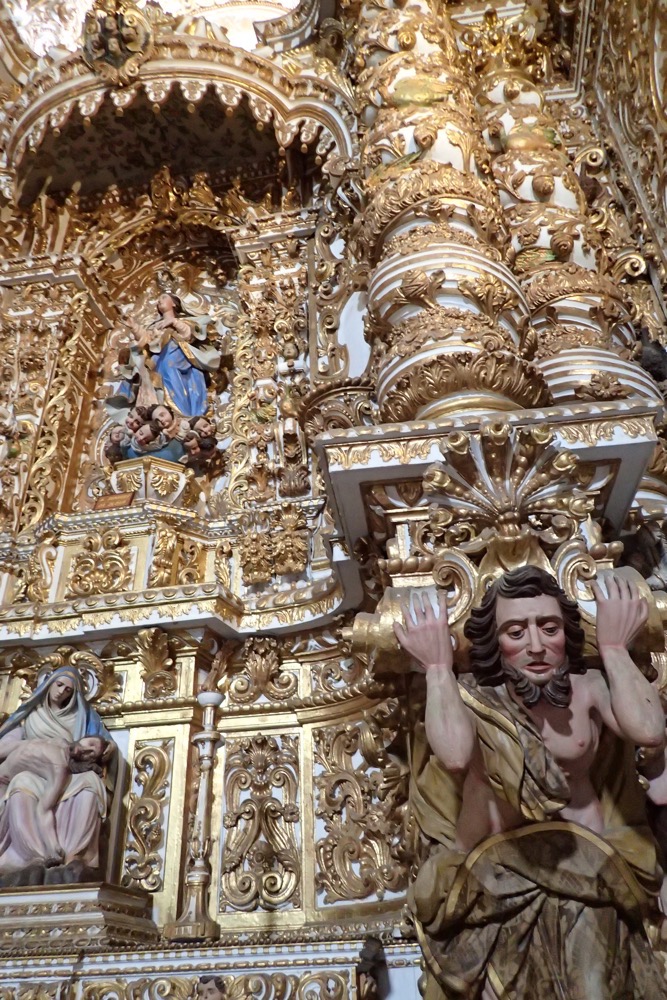
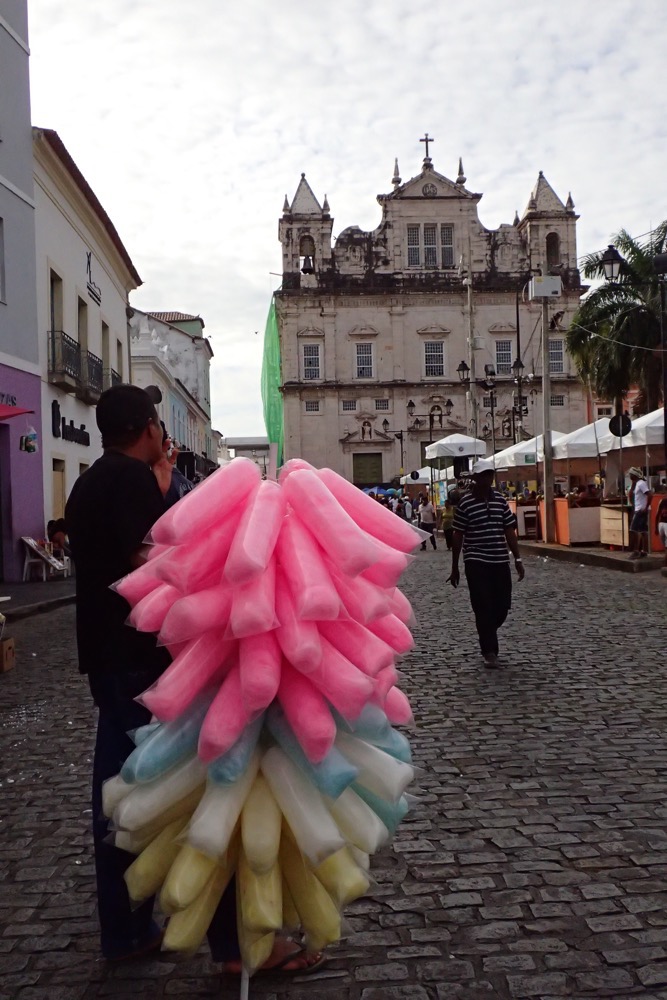
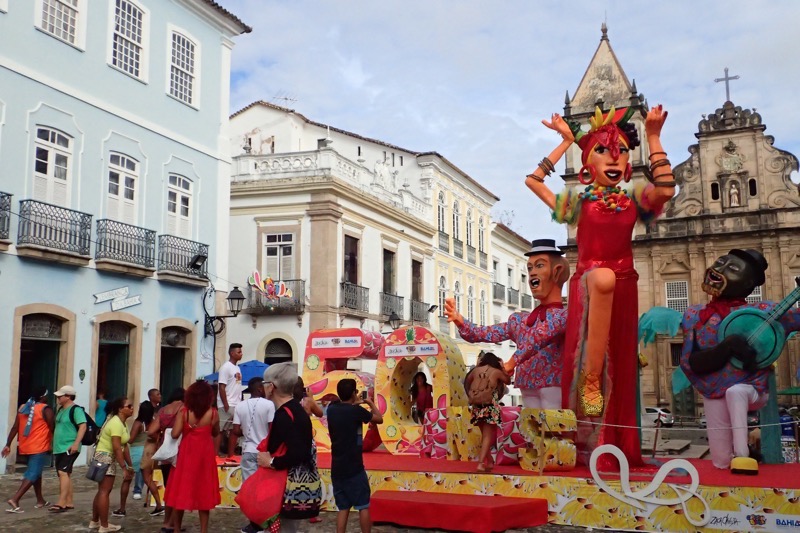
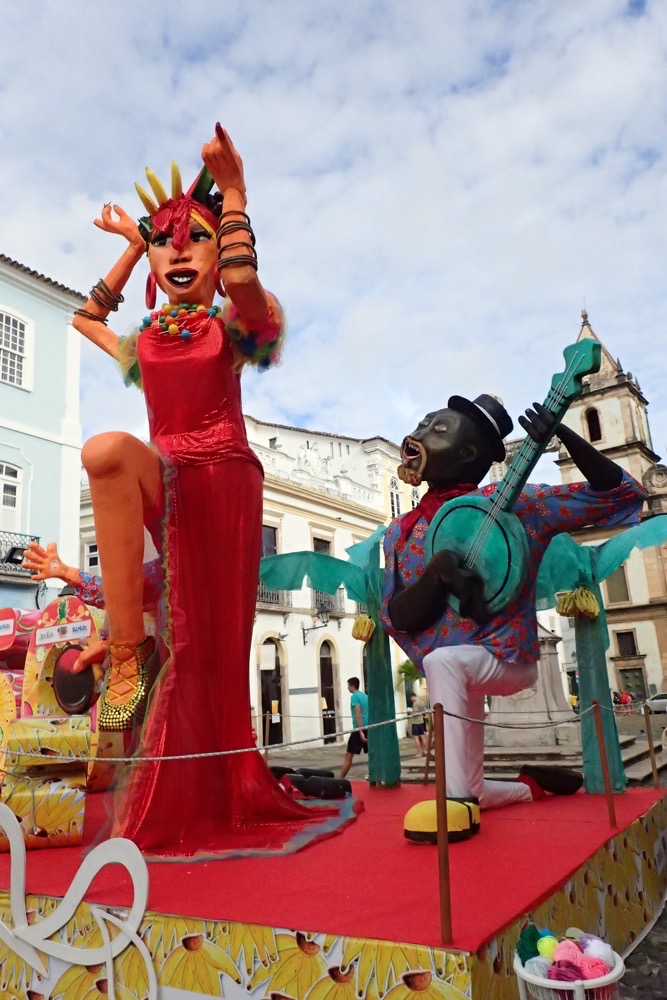 I don’t know what this guy is supposed to be – but I bet he had a ball being it!
I don’t know what this guy is supposed to be – but I bet he had a ball being it!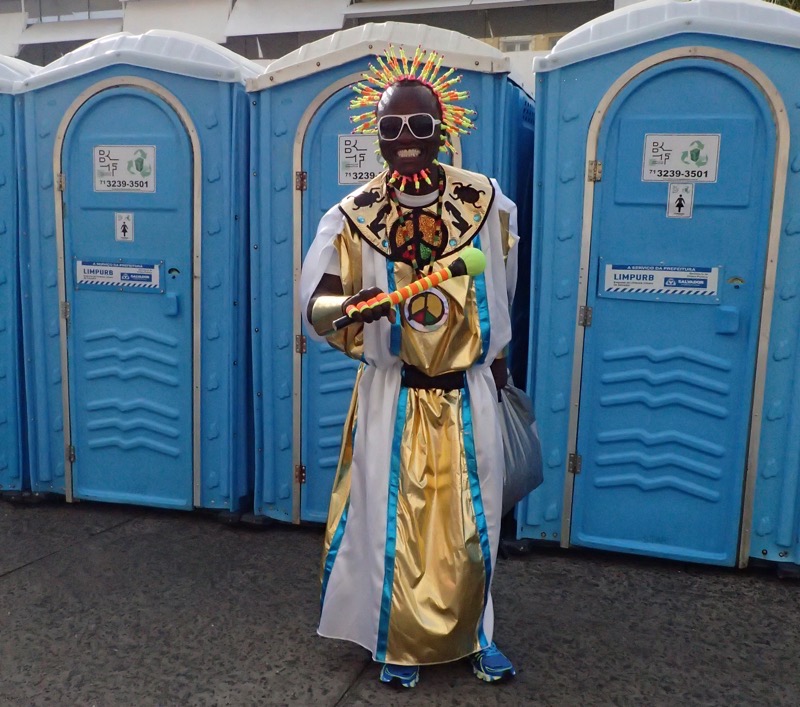
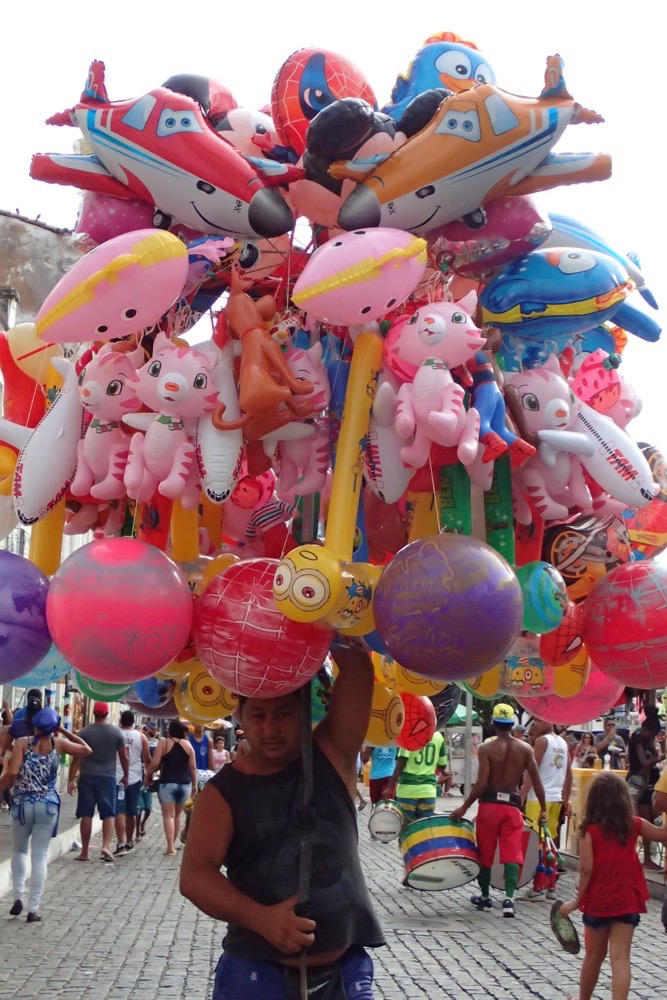 It was already about 4pm by this time, and we wanted to head back to the ship by 5pm, so we made our way back to the elevator to go back to the Lower City to have a look around the Mercado Modelo; a large undercover handicraft market. It is always very interesting to see the different crafts that people make in different parts of the world – here there are lots of typical souvenirs (magnets, mugs, shot glasses, t-shirts), but also lots of handmade crocheted table runners, ceramic dolls, beaded necklaces made from coconut shell, brightly coloured clothing, musical instruments and local pickled chilis. Markets like these are always a feast for the eyes and potentially an assault on the nose… but this market was so hot and stuffy, I thought Aunty Mary was going to faint on me, so we weren’t there very long.
It was already about 4pm by this time, and we wanted to head back to the ship by 5pm, so we made our way back to the elevator to go back to the Lower City to have a look around the Mercado Modelo; a large undercover handicraft market. It is always very interesting to see the different crafts that people make in different parts of the world – here there are lots of typical souvenirs (magnets, mugs, shot glasses, t-shirts), but also lots of handmade crocheted table runners, ceramic dolls, beaded necklaces made from coconut shell, brightly coloured clothing, musical instruments and local pickled chilis. Markets like these are always a feast for the eyes and potentially an assault on the nose… but this market was so hot and stuffy, I thought Aunty Mary was going to faint on me, so we weren’t there very long.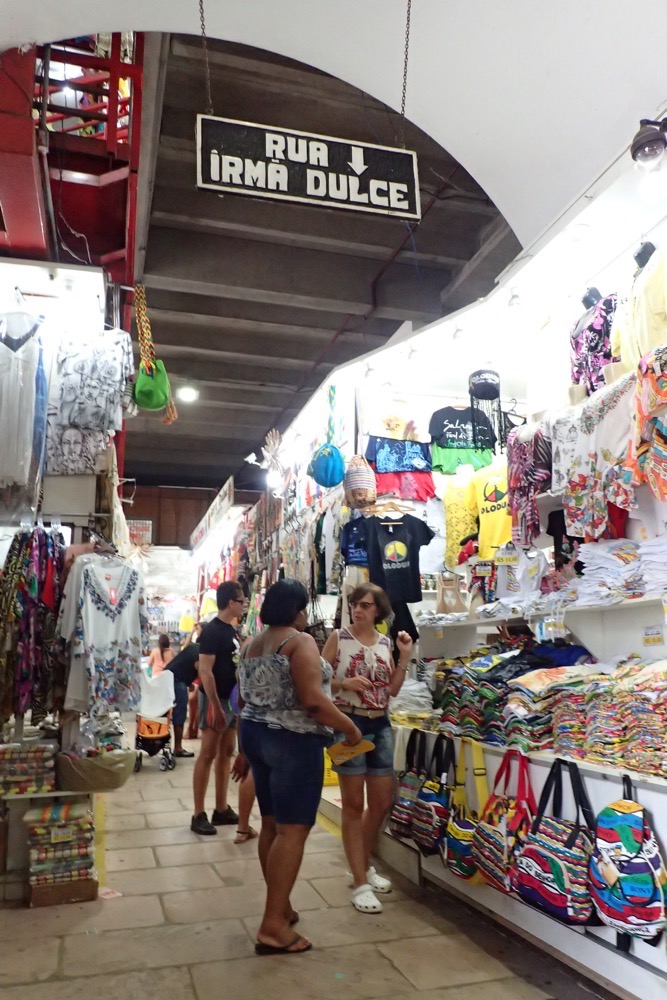
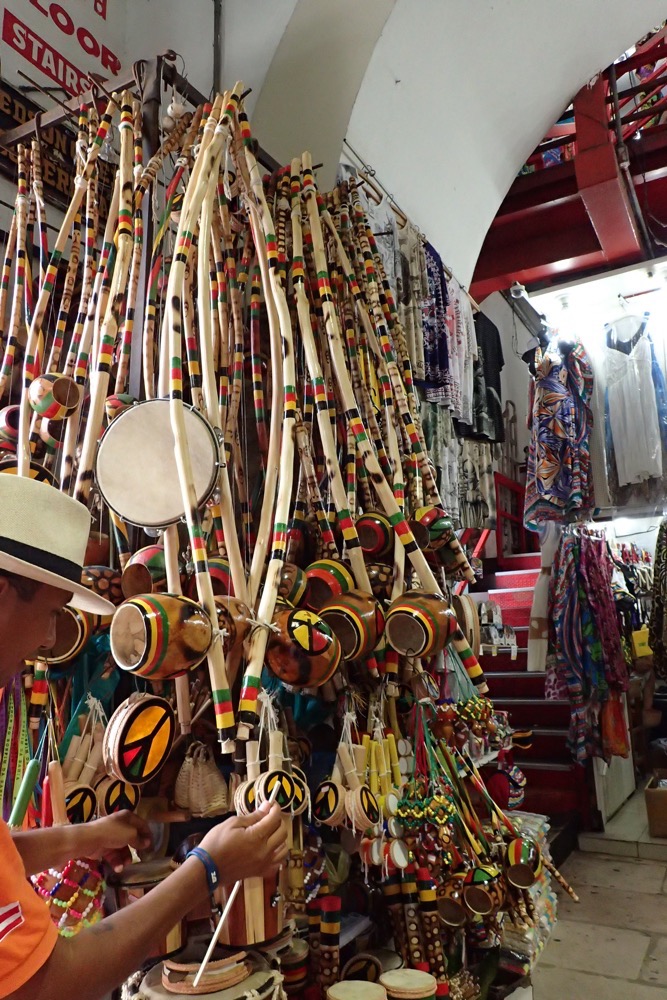
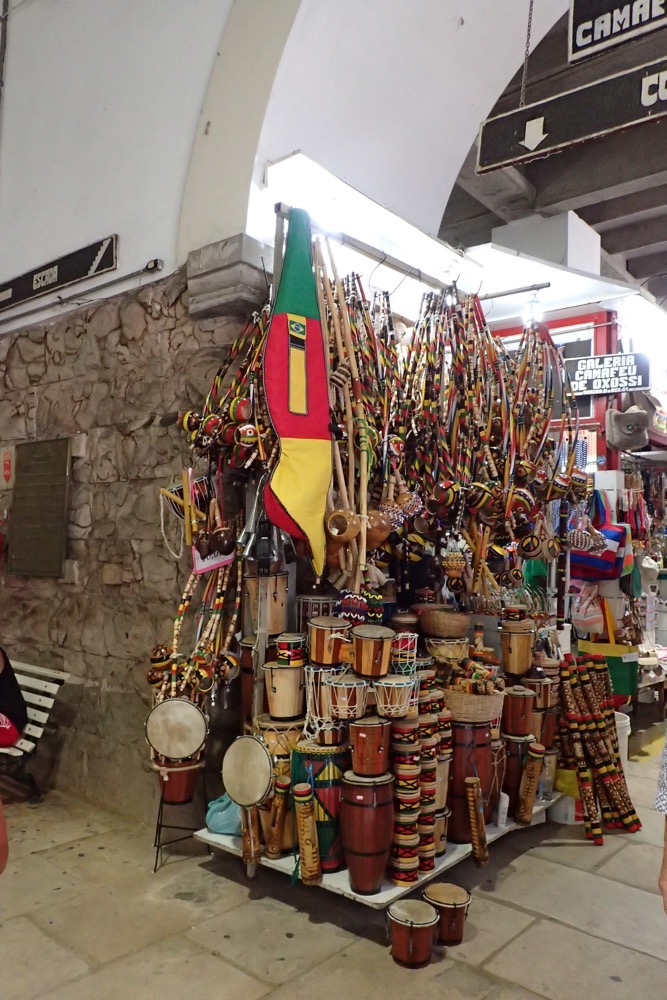
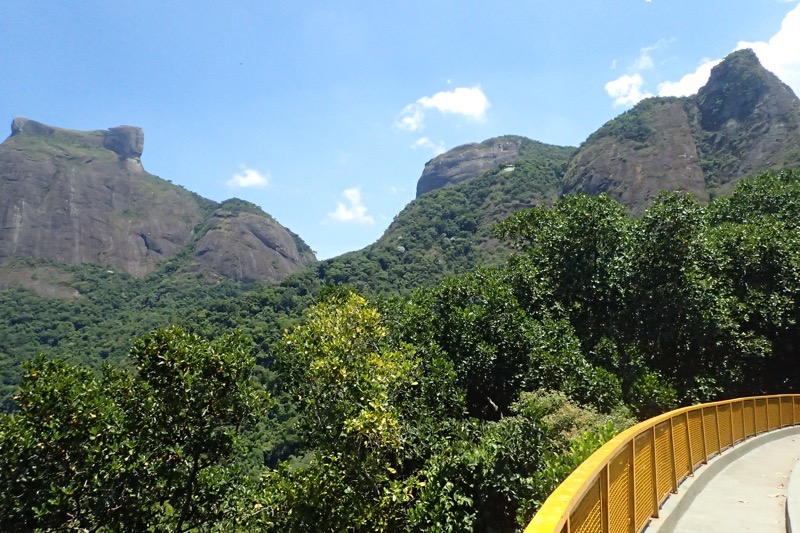 Remember this picture from yesterday? Can you see that little white dot up towards the top of the mountain on the right hand side of the valley? Well, today, we decided to go up there… and jump!
Remember this picture from yesterday? Can you see that little white dot up towards the top of the mountain on the right hand side of the valley? Well, today, we decided to go up there… and jump!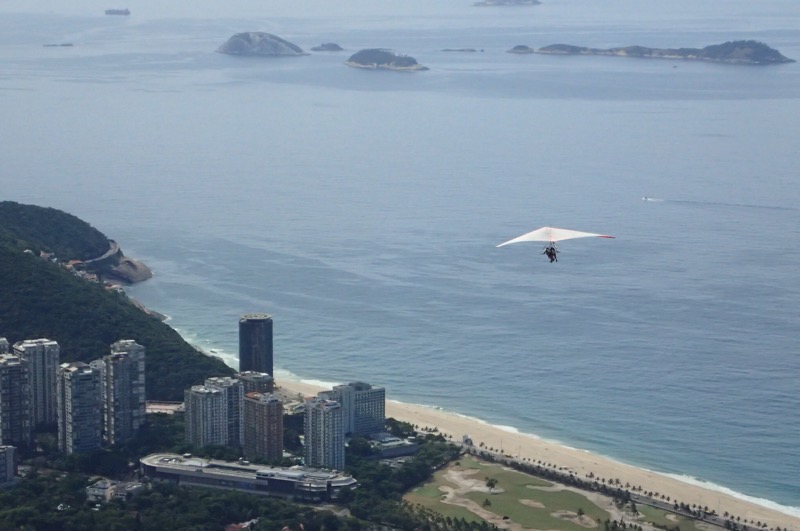 This picture is Aunty Mary flying off towards Leblon in a hang glider!
This picture is Aunty Mary flying off towards Leblon in a hang glider!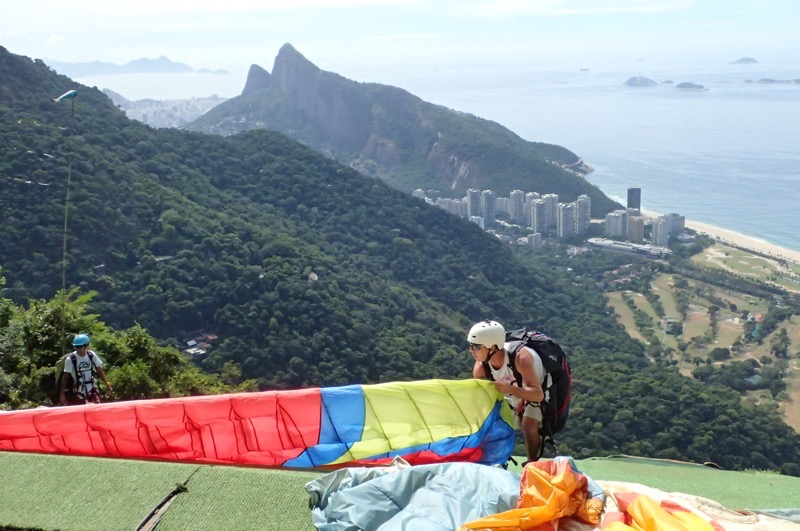 Optimistic I hope…
Optimistic I hope…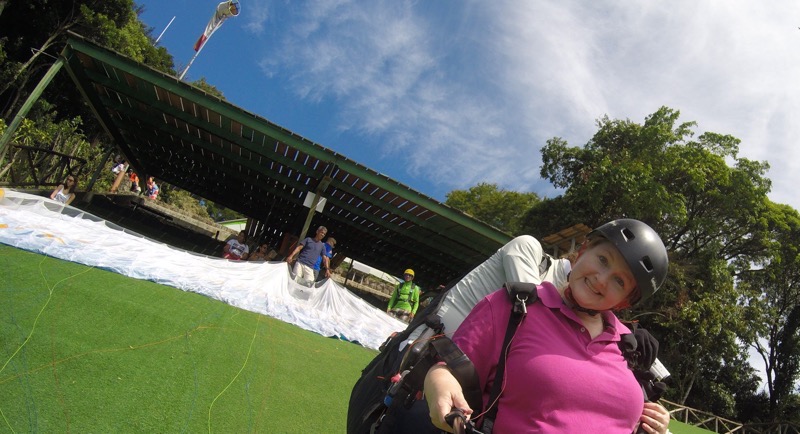 Okay. The trepidation bit sets in! Eek!
Okay. The trepidation bit sets in! Eek!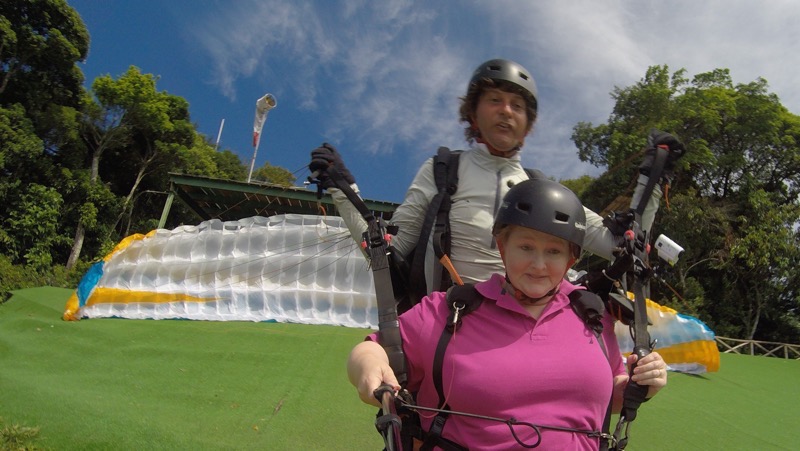 And then we were running off a cliff and into the air! The pilot said he was going towards the mountain to try and ride the thermals up from the heat rising off the rocks, and jeebus – we must have gone up about 100m higher than the launch point, which was already 540m above the beach.
And then we were running off a cliff and into the air! The pilot said he was going towards the mountain to try and ride the thermals up from the heat rising off the rocks, and jeebus – we must have gone up about 100m higher than the launch point, which was already 540m above the beach. 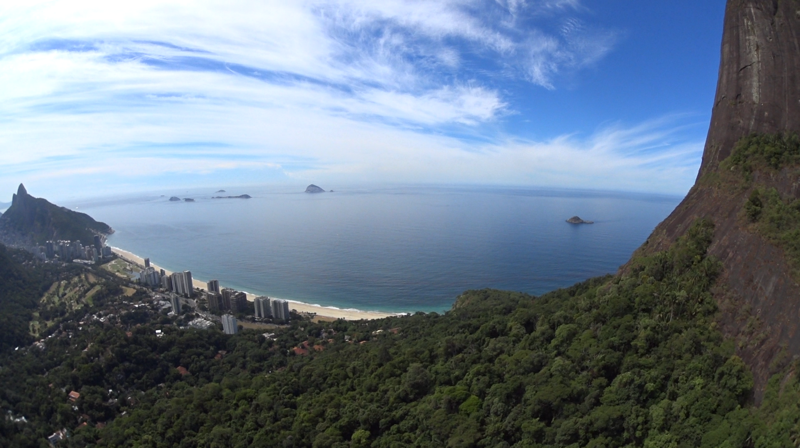
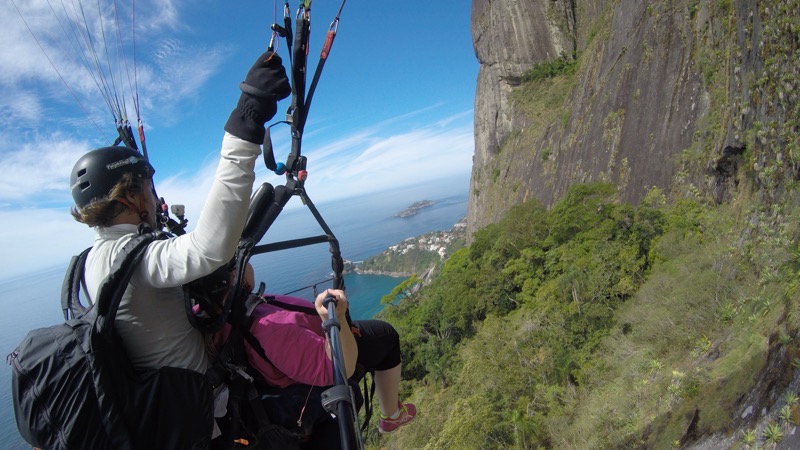 It was just beautiful. I loved it! The views were unparalleled, and I loved it when the pilot spun the ‘chute around; it is like a rollercoaster without all the jerkiness and with a way better view.
It was just beautiful. I loved it! The views were unparalleled, and I loved it when the pilot spun the ‘chute around; it is like a rollercoaster without all the jerkiness and with a way better view.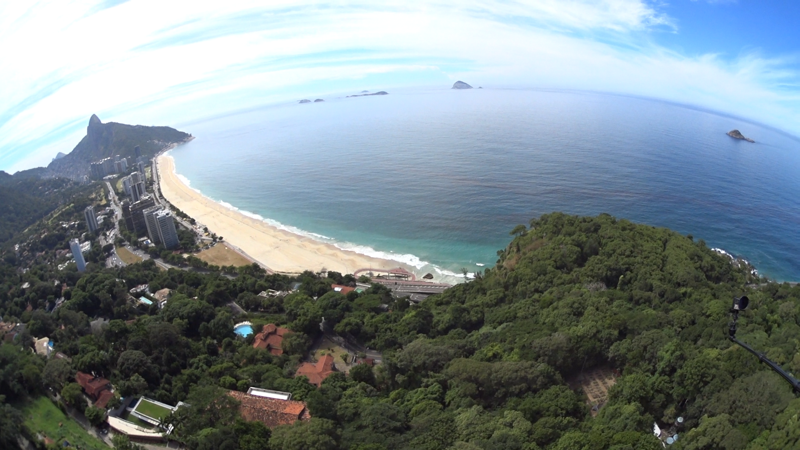 We went so close to the mountain, you could see our shadow and it looked nearly life size. Oi! I swear we were barely 20m away from the rock at some points…
We went so close to the mountain, you could see our shadow and it looked nearly life size. Oi! I swear we were barely 20m away from the rock at some points…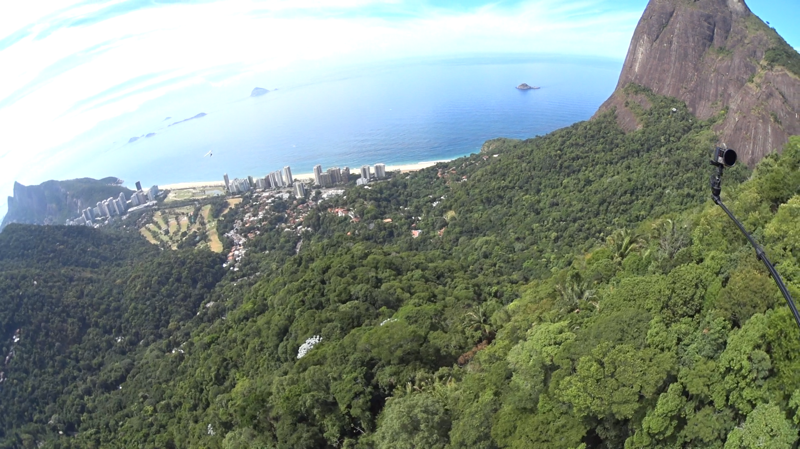
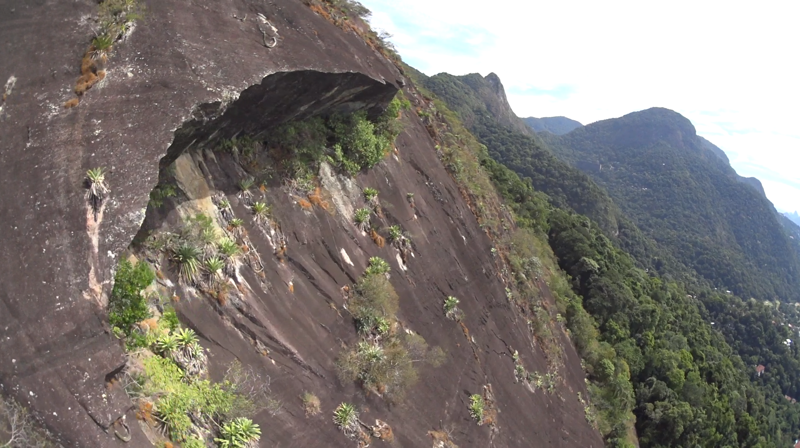 Then it was smooth sailing down to the beach for a soft landing in a grass park nearby.
Then it was smooth sailing down to the beach for a soft landing in a grass park nearby.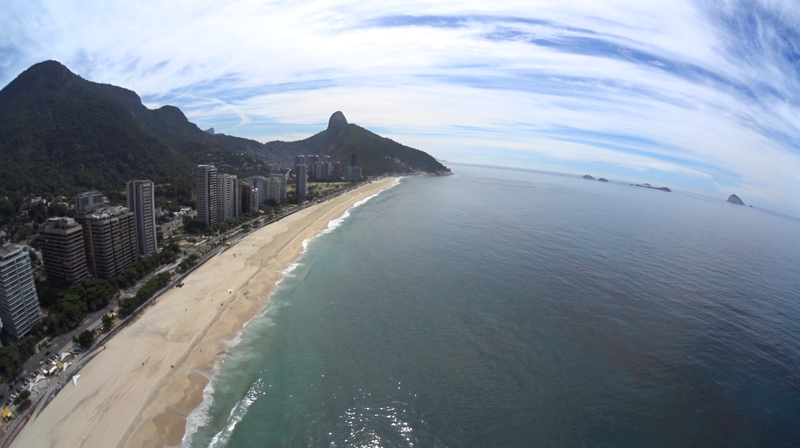
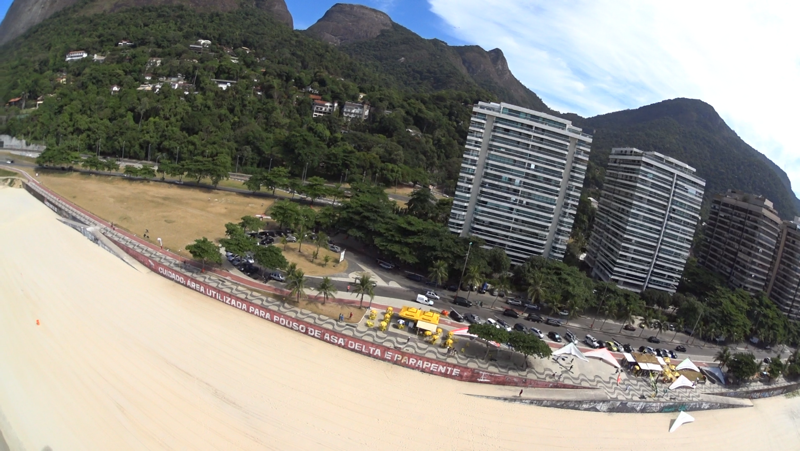
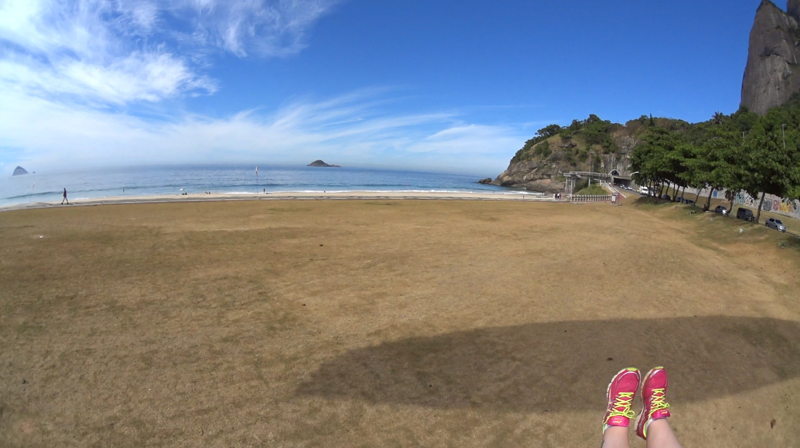 I had such a great time, I have every intention of going white water rafting, sky diving, bungee jumping, jet boating and all good things. All the things that I have always said ‘no’ to. 🙂
I had such a great time, I have every intention of going white water rafting, sky diving, bungee jumping, jet boating and all good things. All the things that I have always said ‘no’ to. 🙂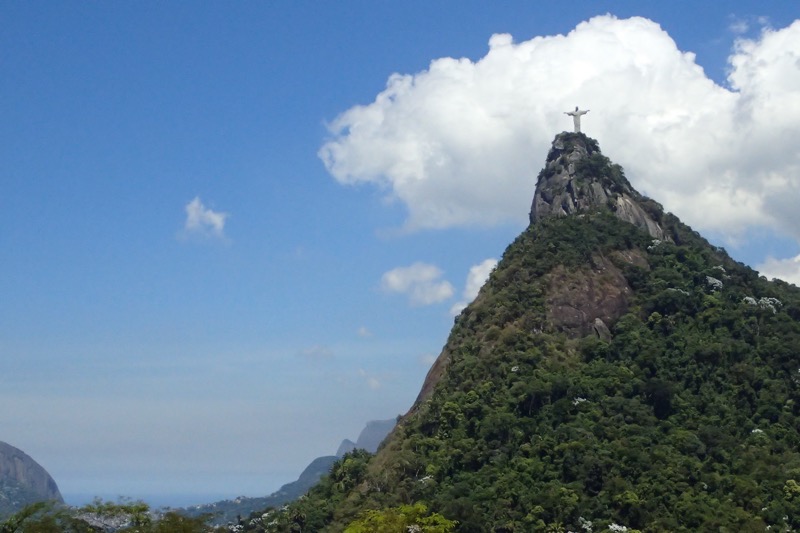
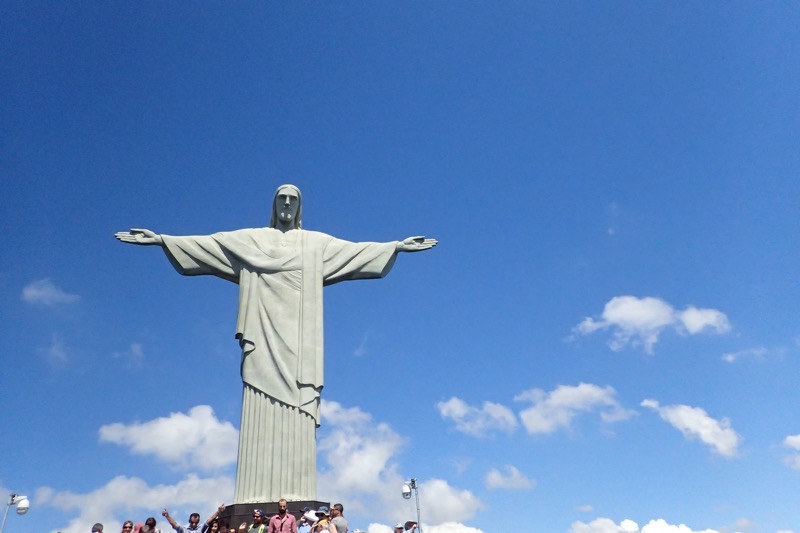
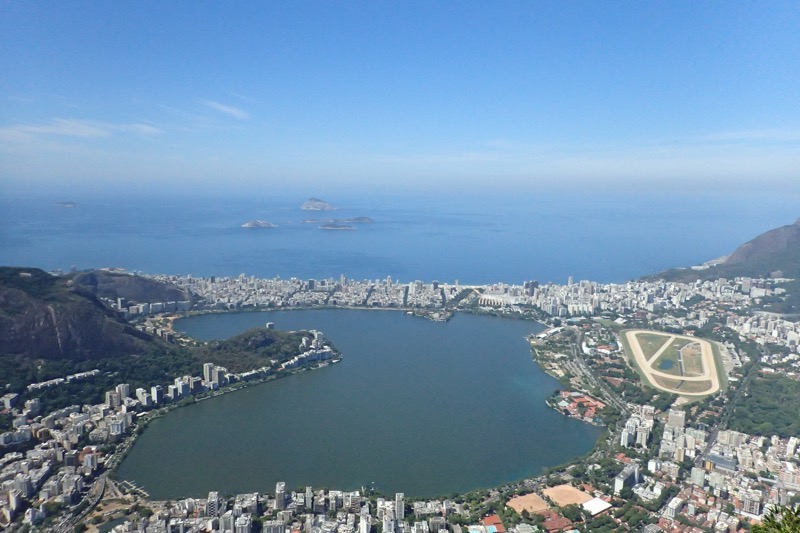
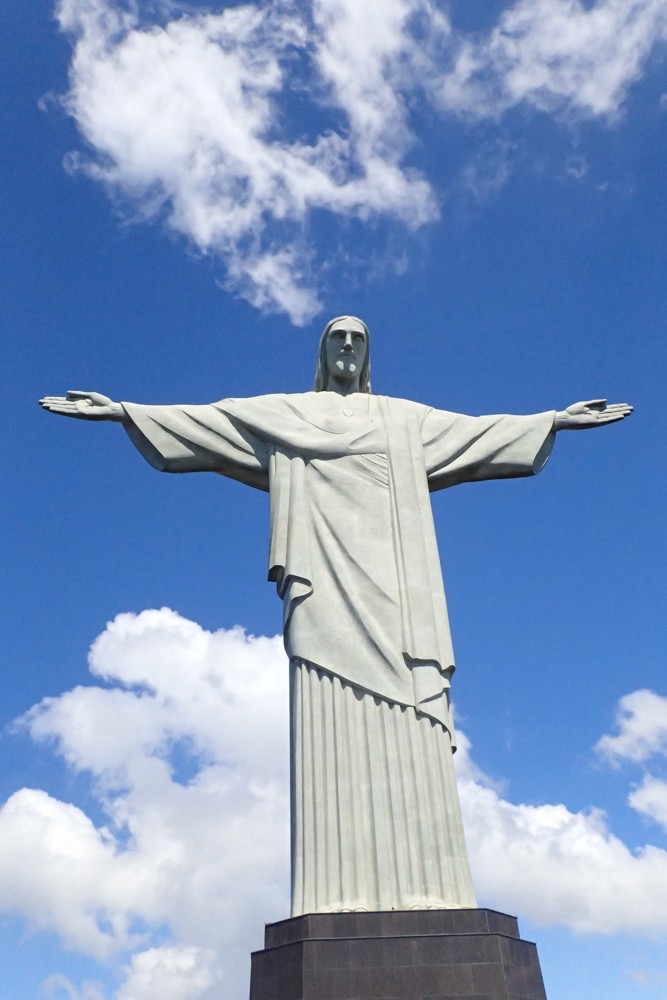
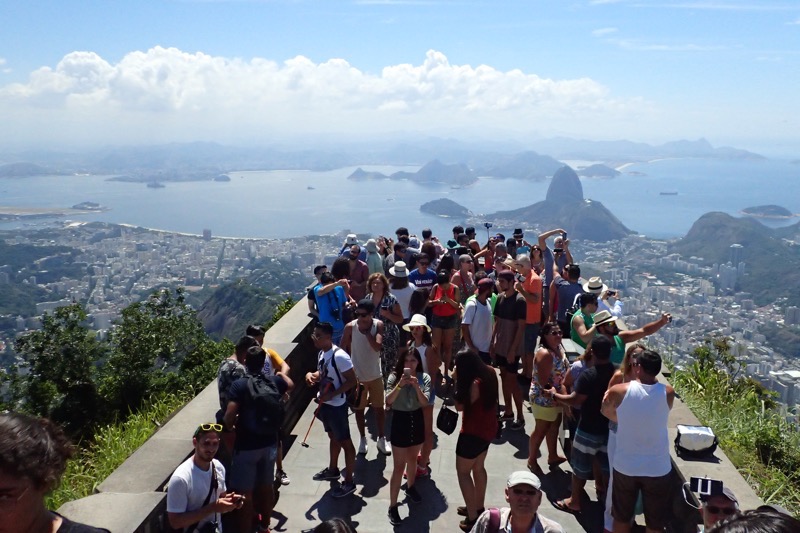
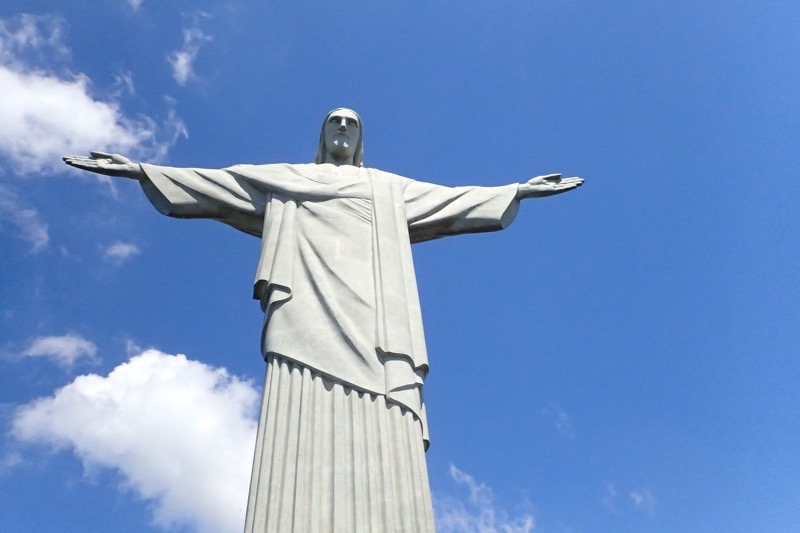
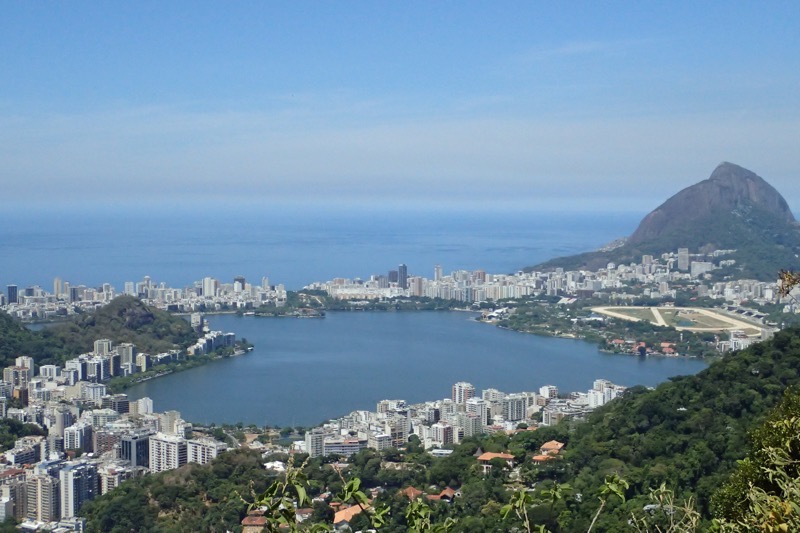
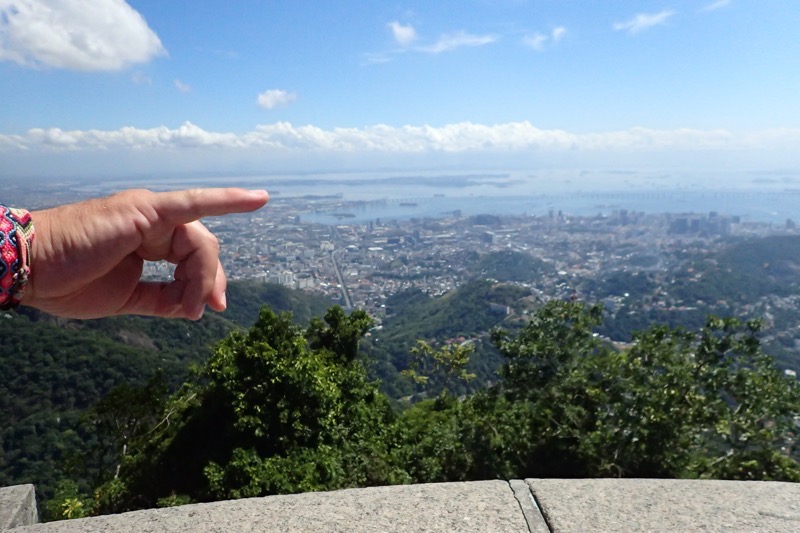
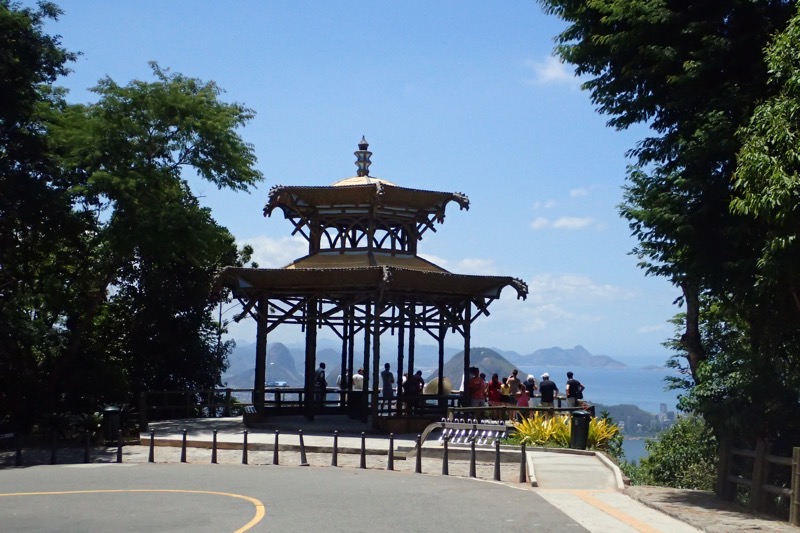
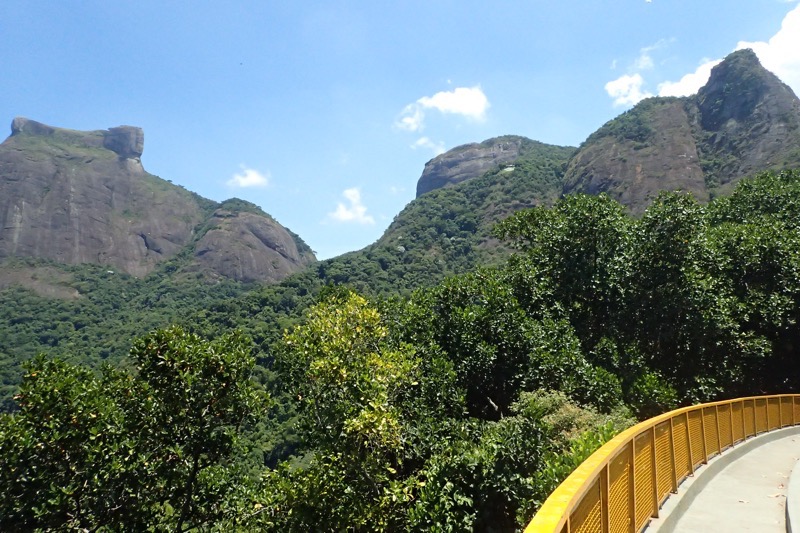
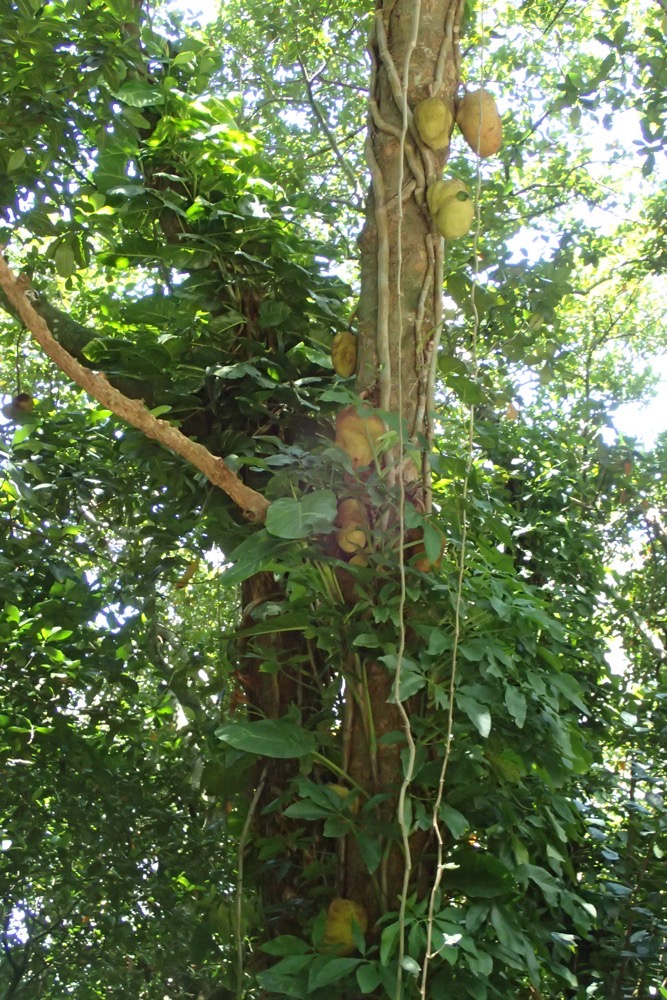
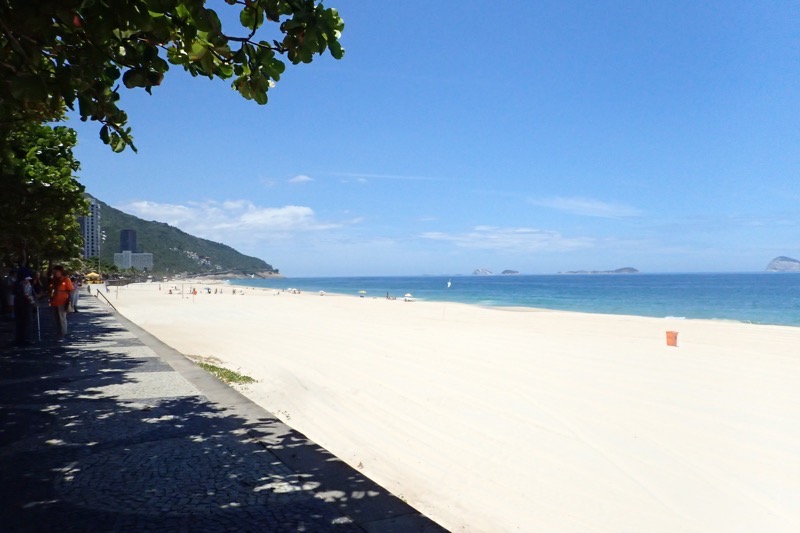
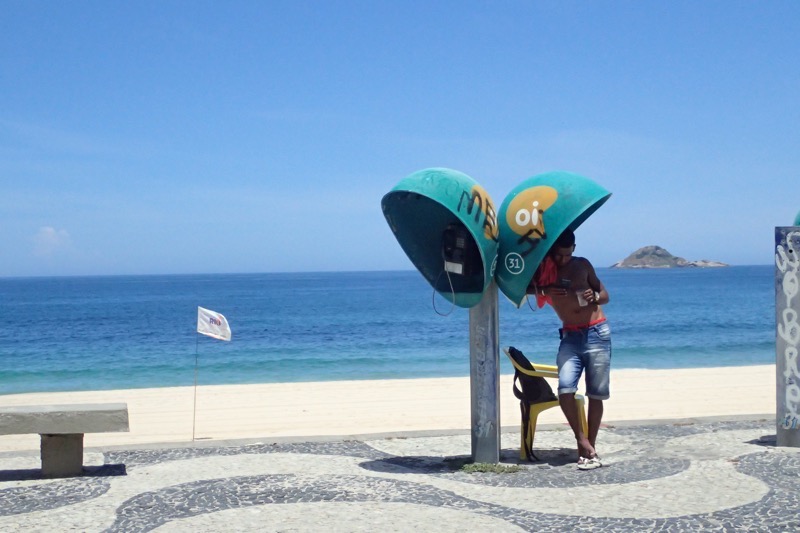
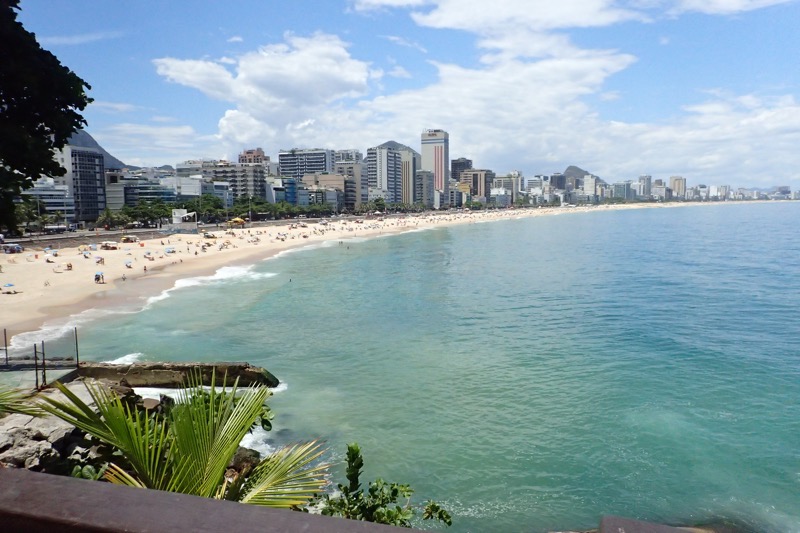
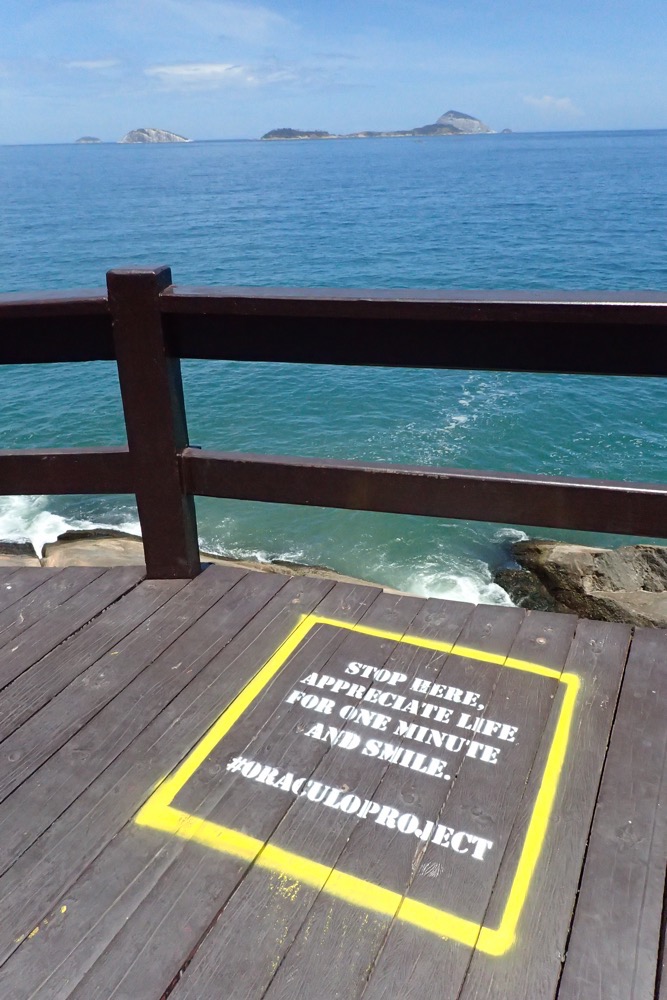
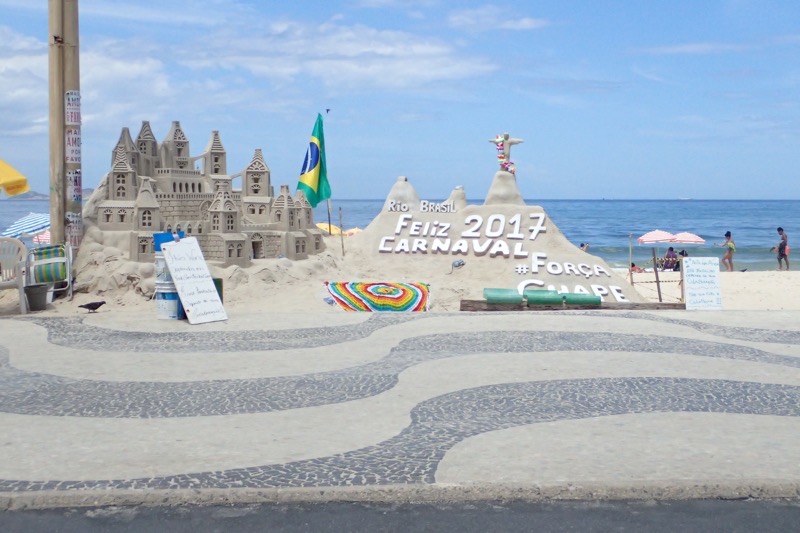
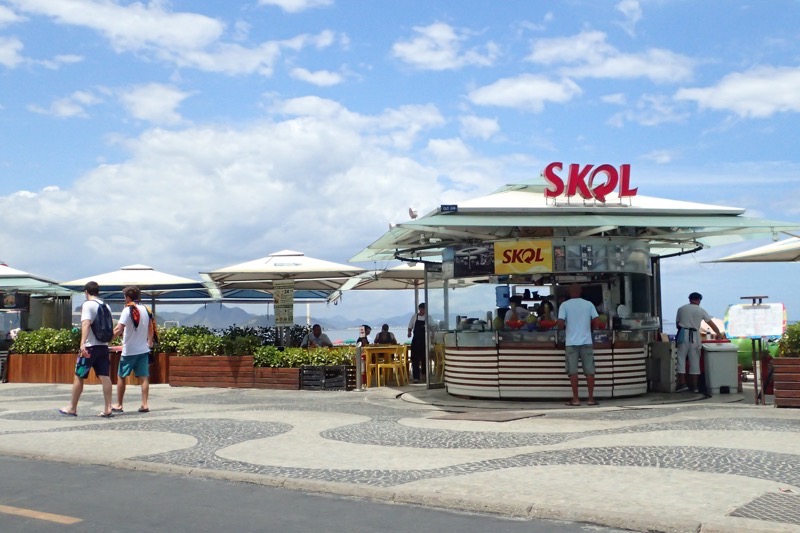
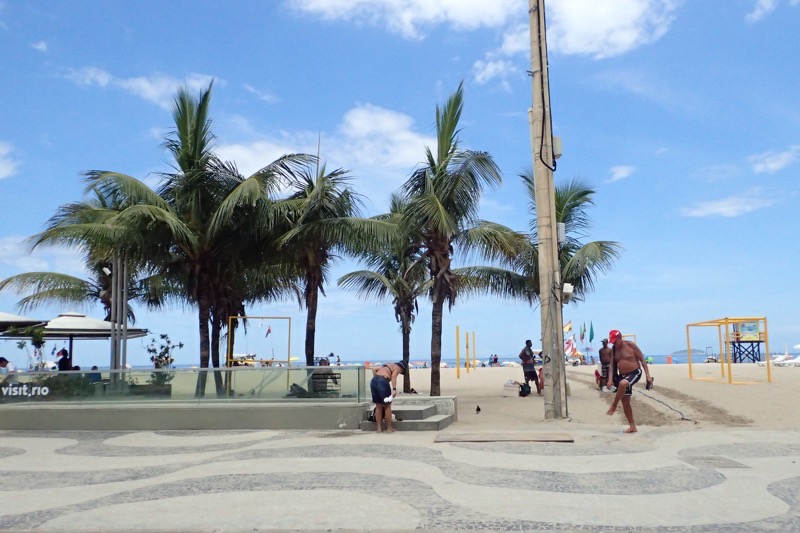
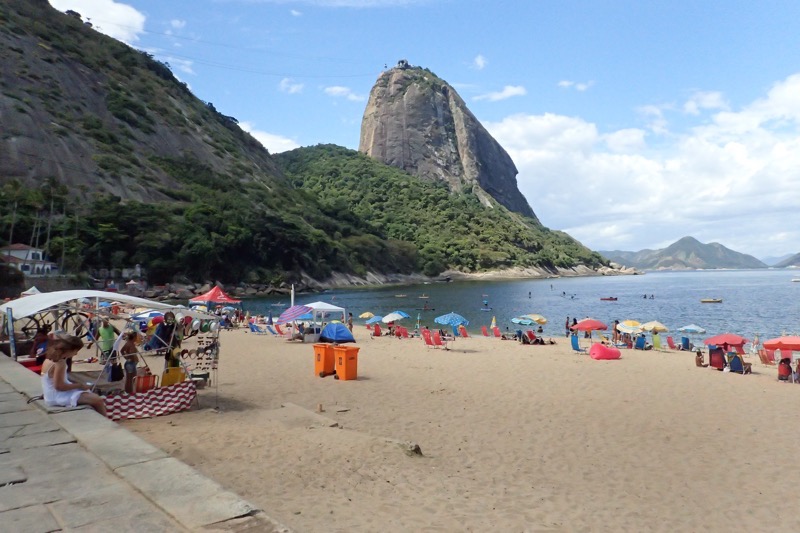
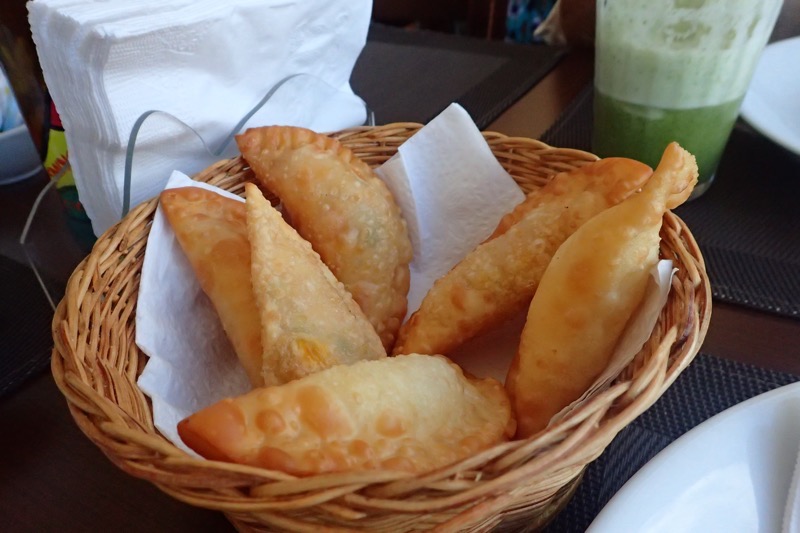
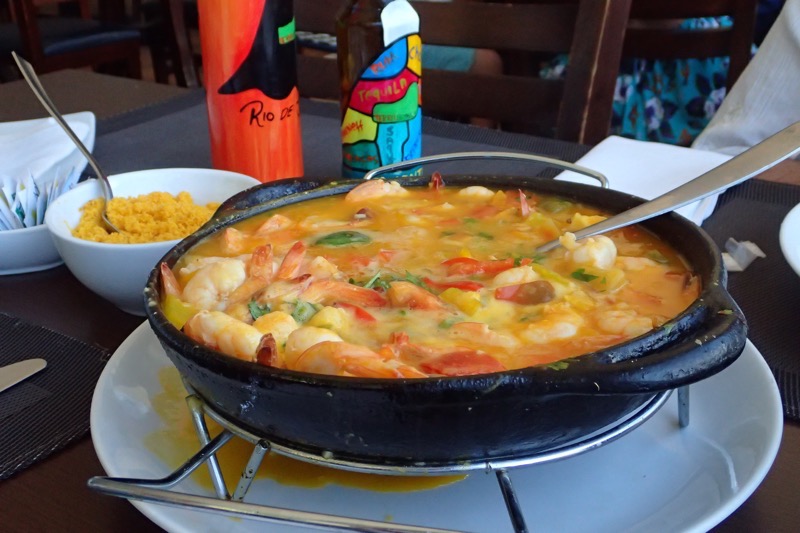
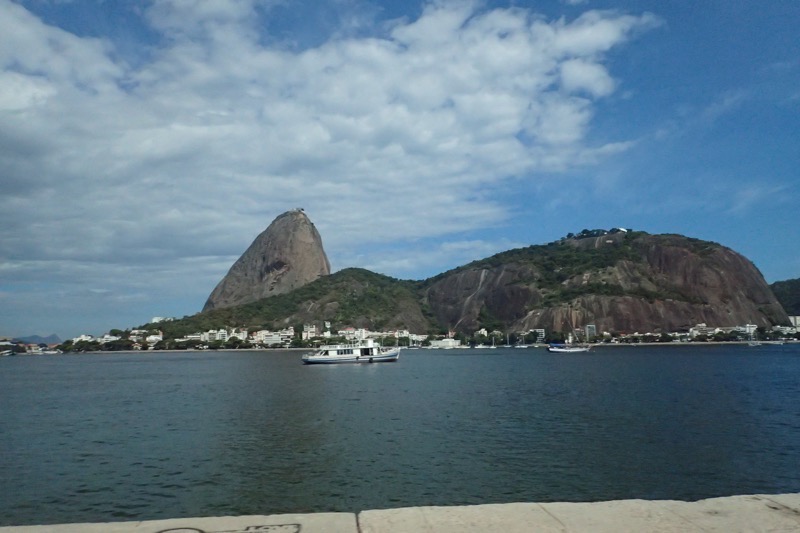
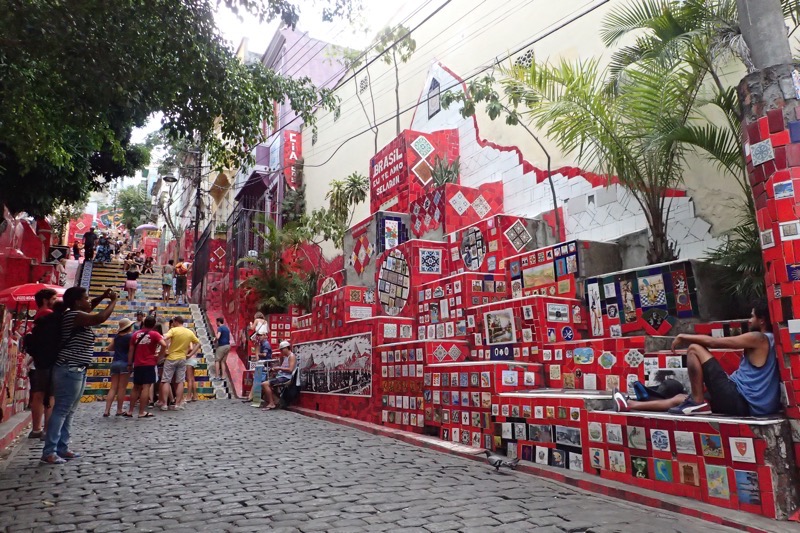
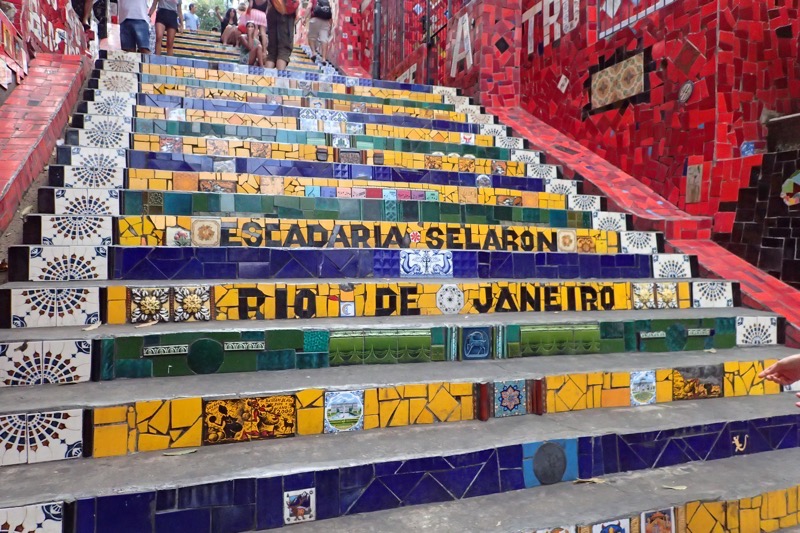
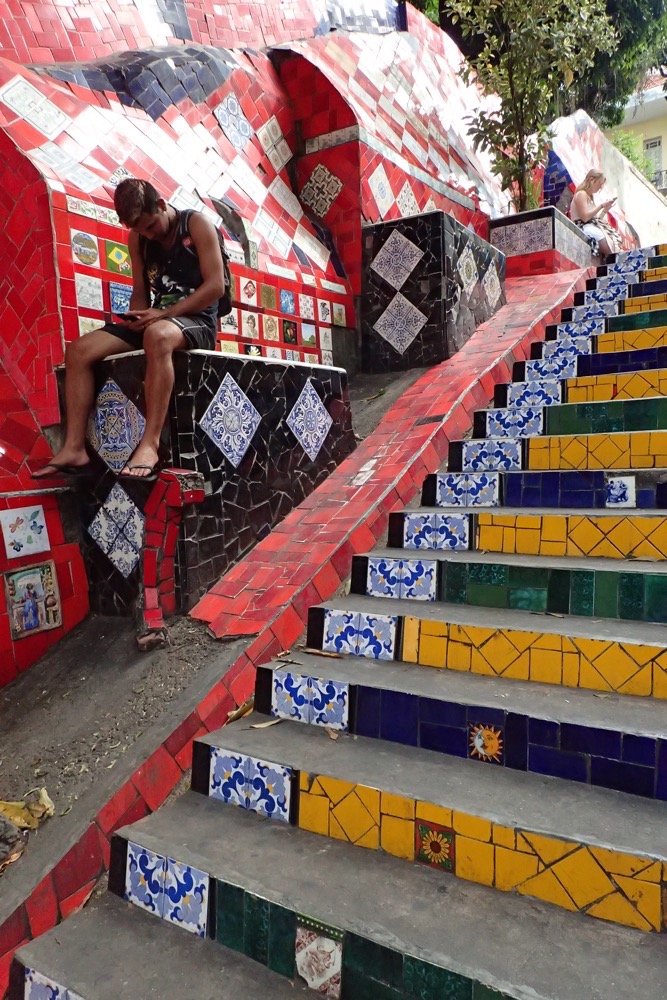
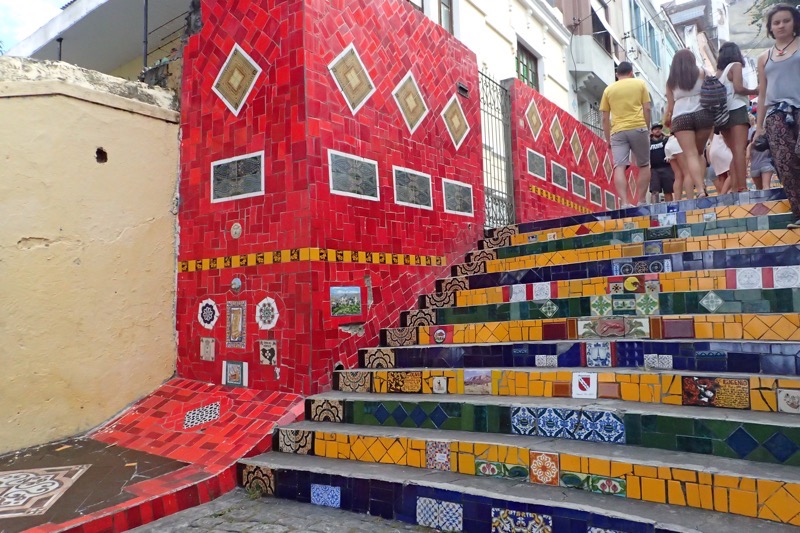
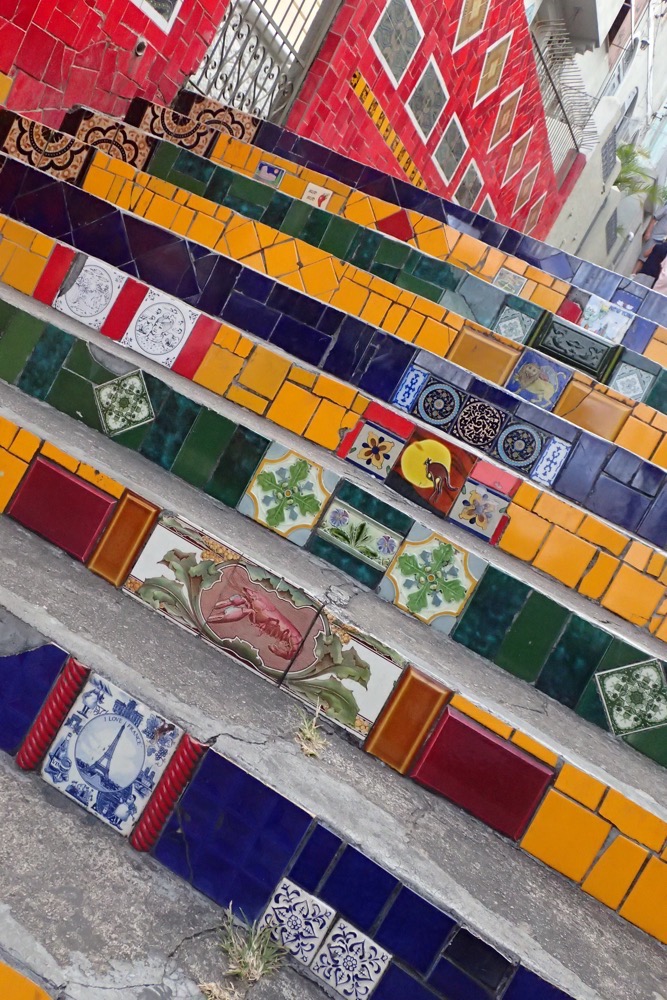
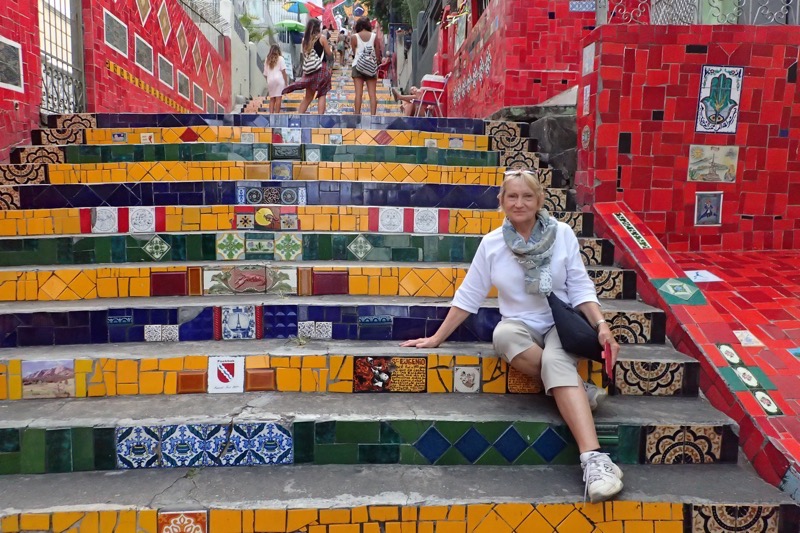
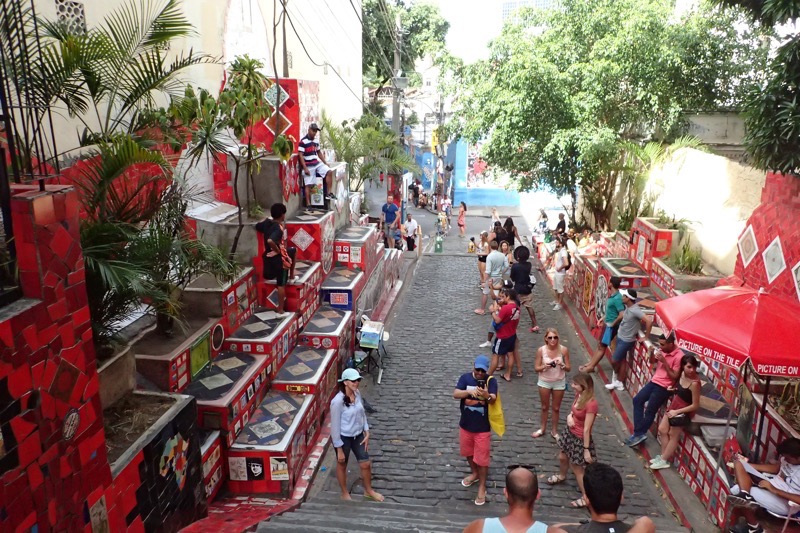
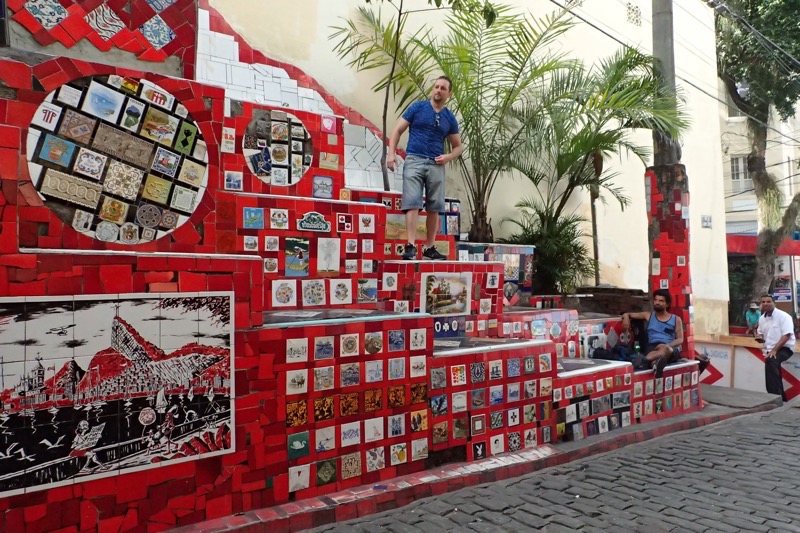
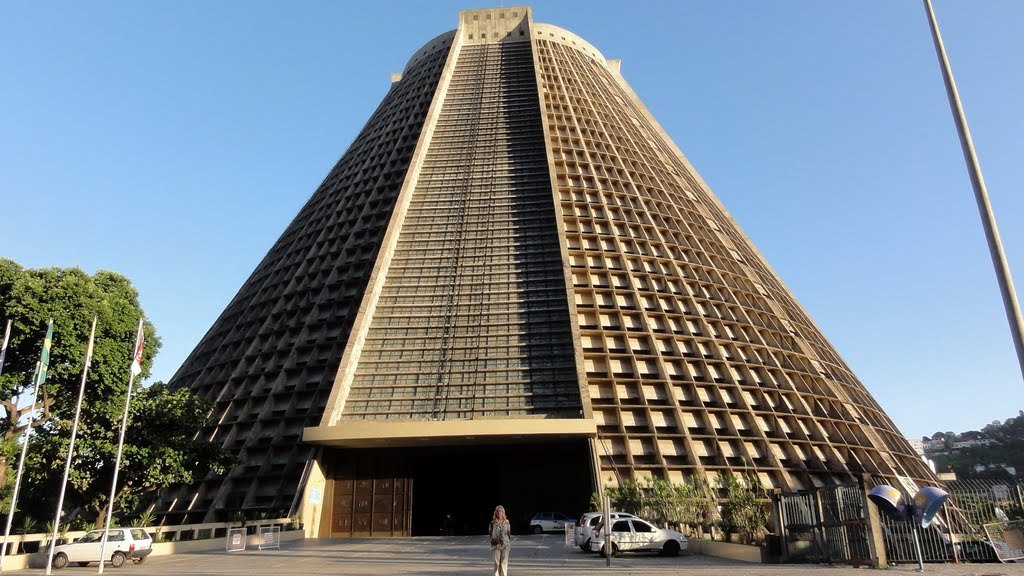
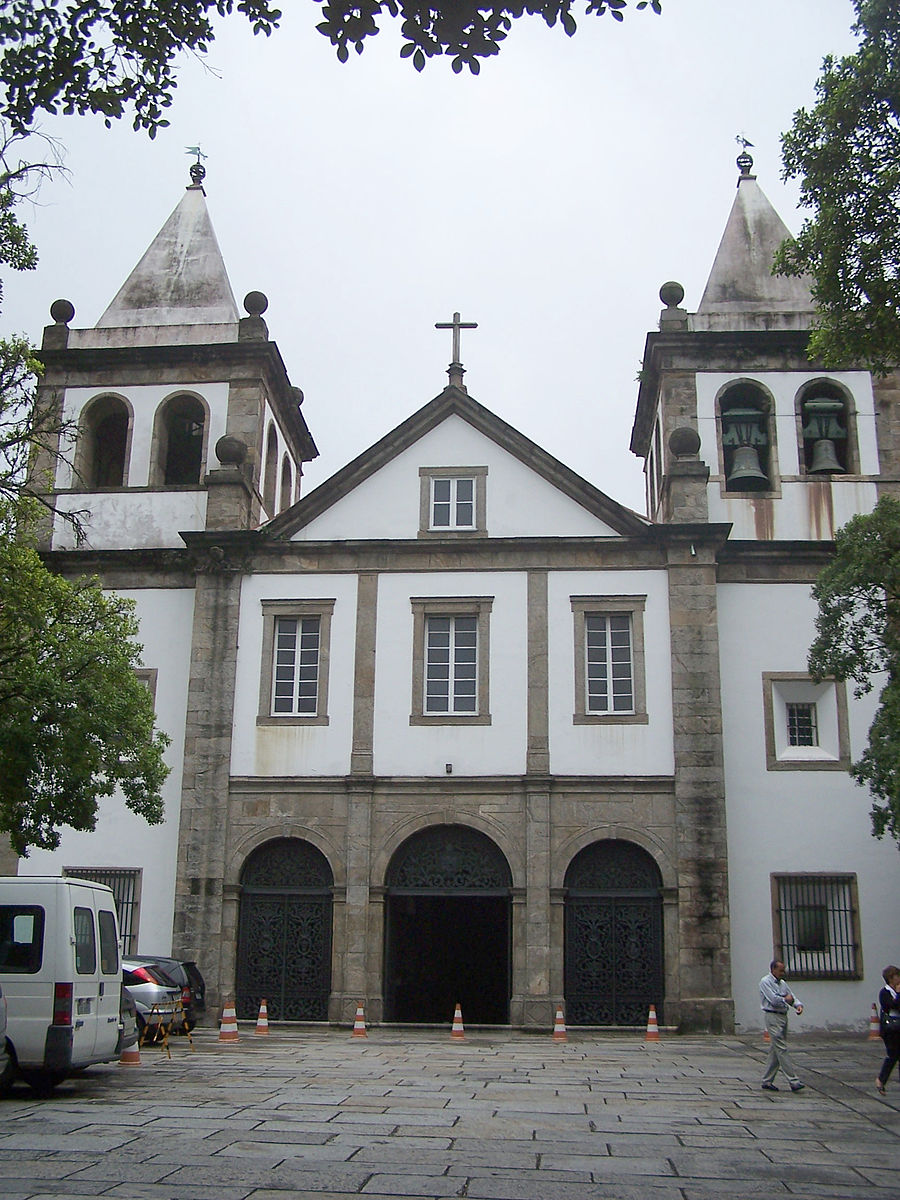
 The interior of the church is what I would call a lavish baroque or rococo style (17thC – 18thC). It is covered, and I mean, every surface is covered, in lavishly curlicued timber carvings that have been gilded in what must be a tonne of gold leaf. I don’t think I have ever seen anything quite this ornate, even in the many European churches and palaces that I have visited. It is really quite special, and I simply can not imagine what the upkeep on the church must be. Personally, I don’t know if I think it is beautiful – this type of high baroque, over the top, ornamentation isn’t really my thing… but it certainly is quite the spectacle, and well worth adding to your list if you are visiting Rio.
The interior of the church is what I would call a lavish baroque or rococo style (17thC – 18thC). It is covered, and I mean, every surface is covered, in lavishly curlicued timber carvings that have been gilded in what must be a tonne of gold leaf. I don’t think I have ever seen anything quite this ornate, even in the many European churches and palaces that I have visited. It is really quite special, and I simply can not imagine what the upkeep on the church must be. Personally, I don’t know if I think it is beautiful – this type of high baroque, over the top, ornamentation isn’t really my thing… but it certainly is quite the spectacle, and well worth adding to your list if you are visiting Rio.


